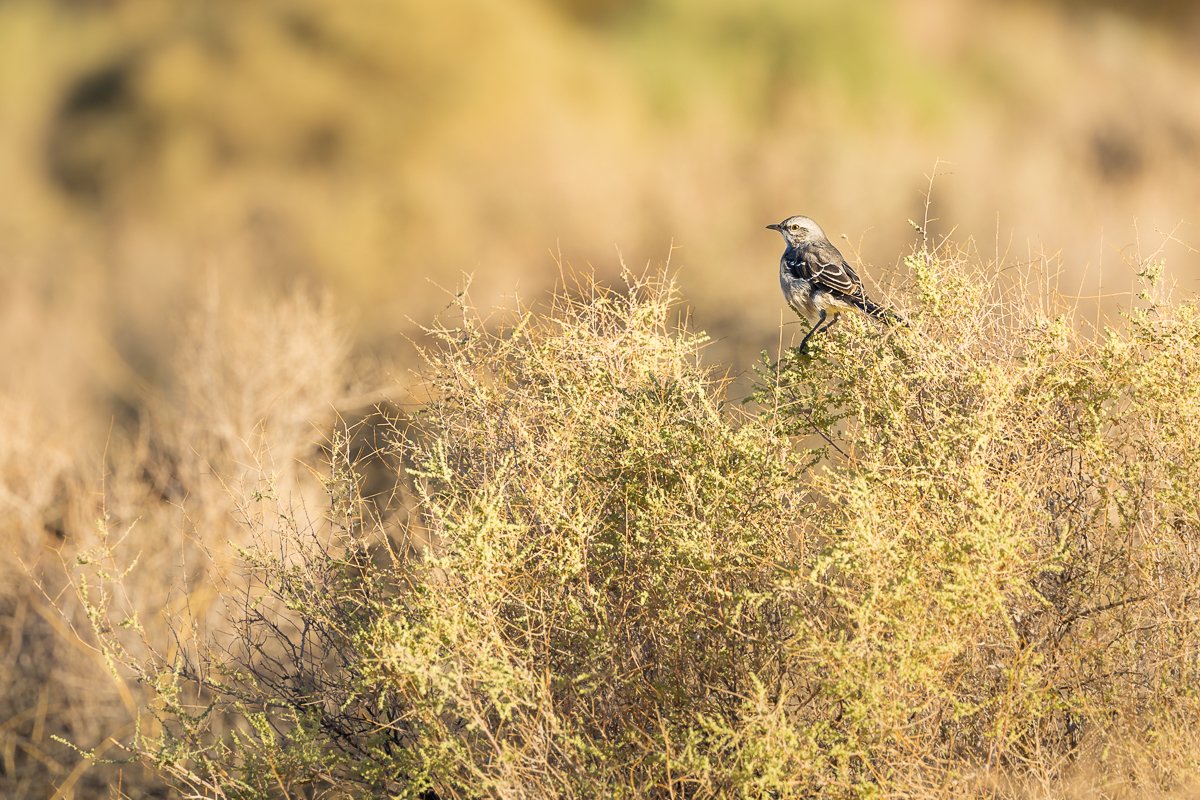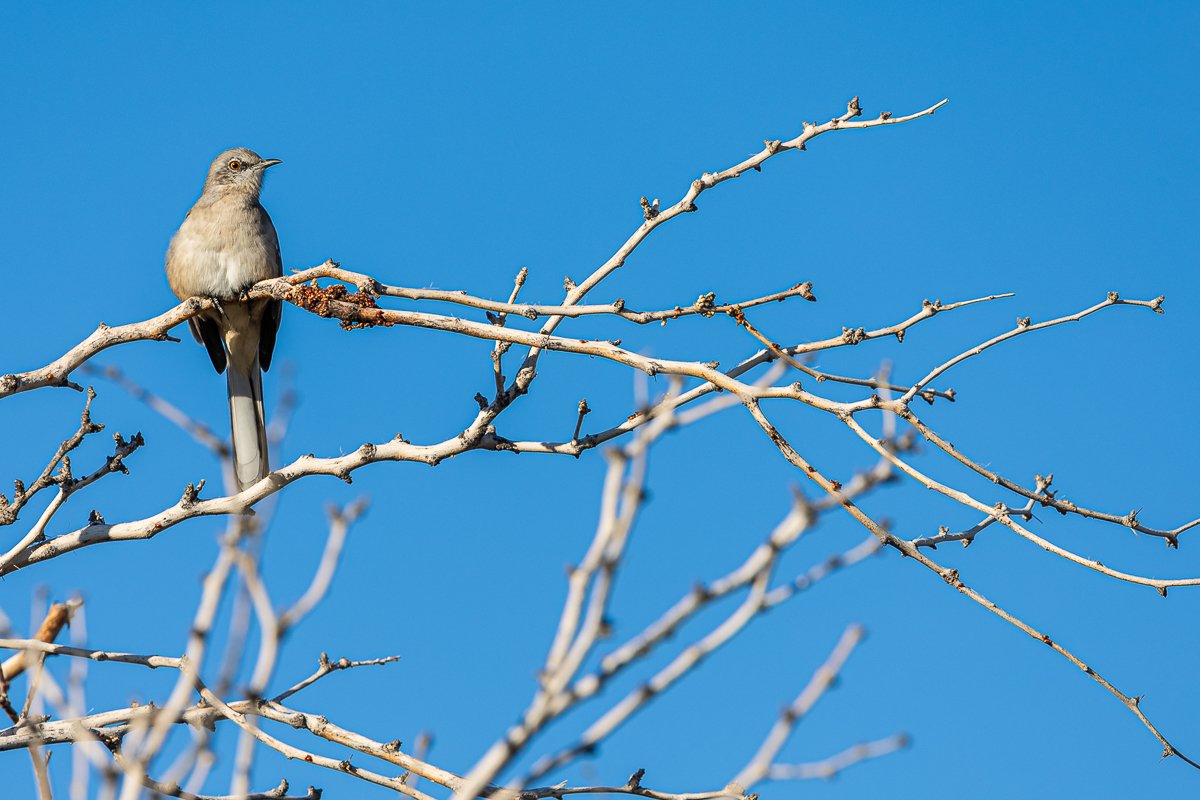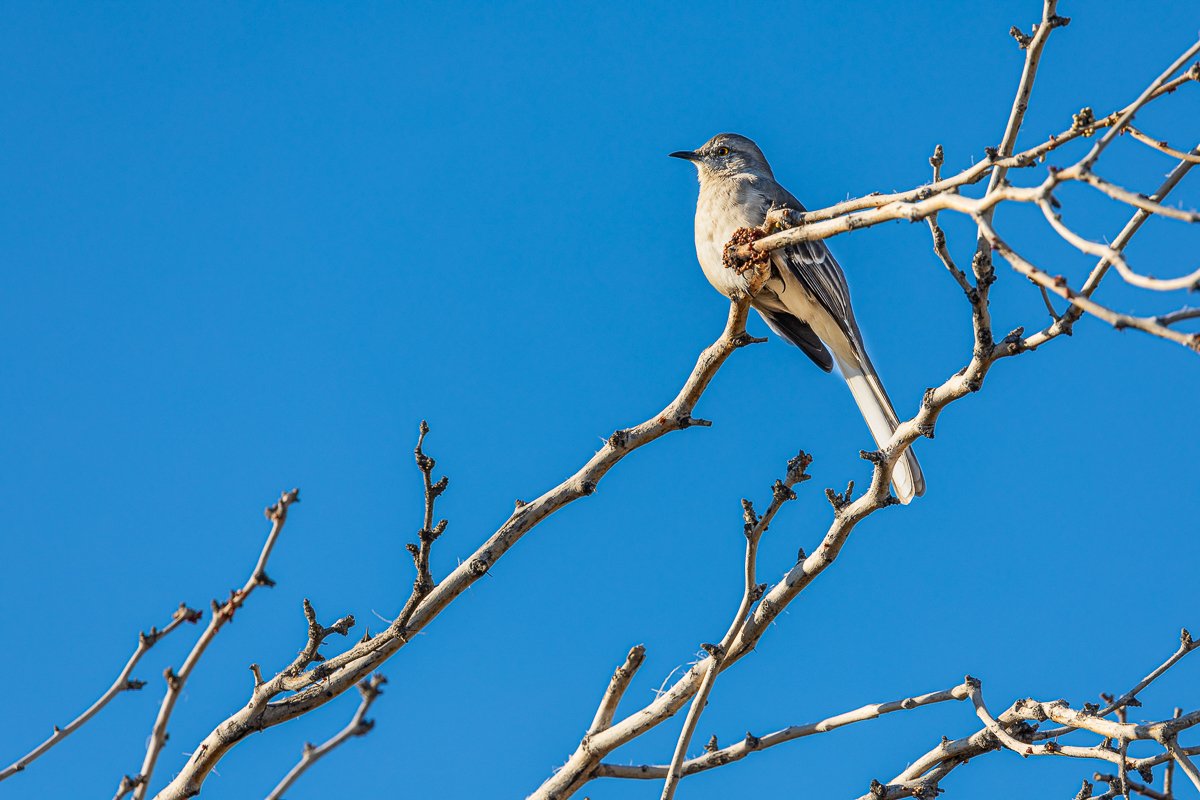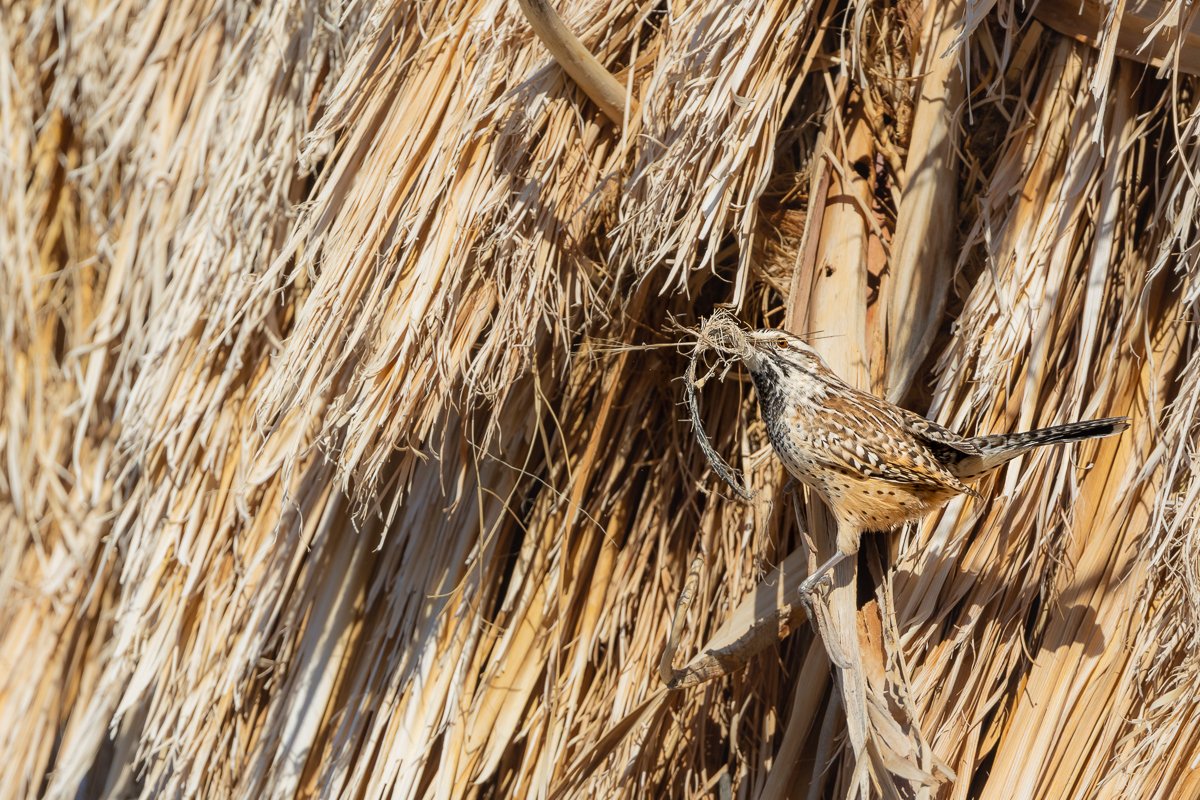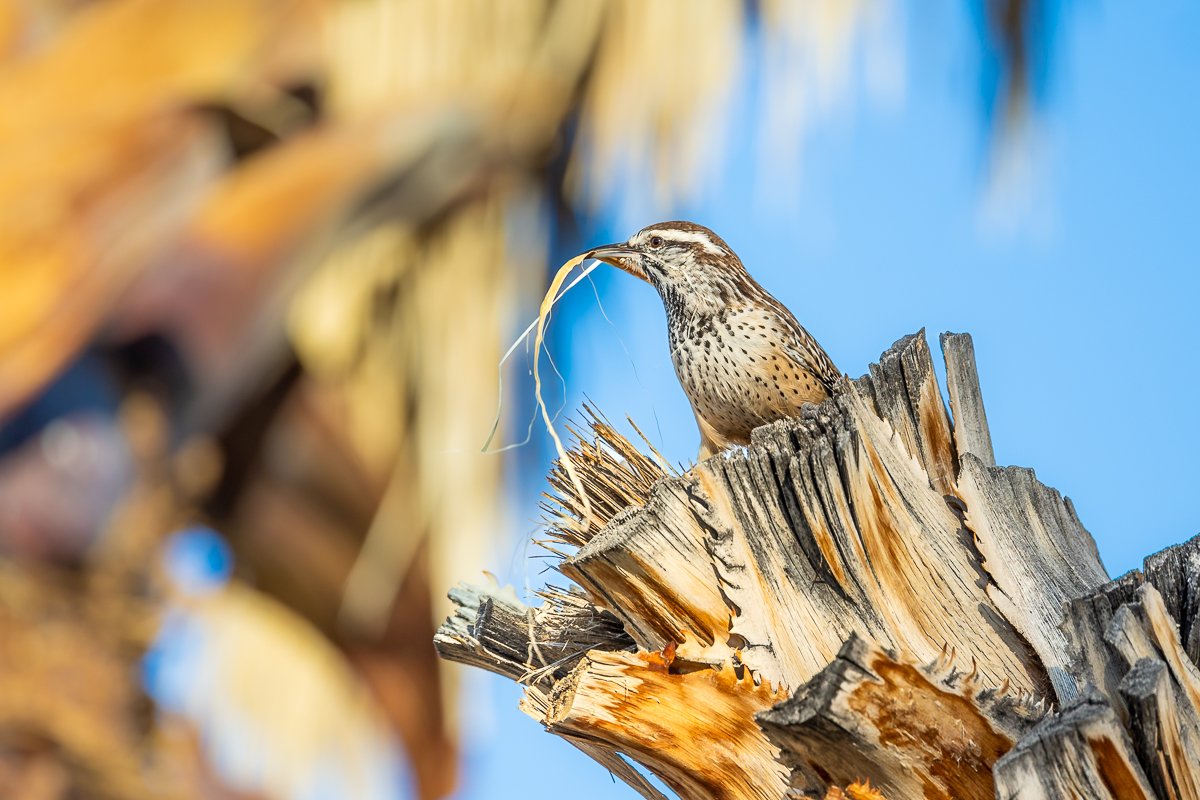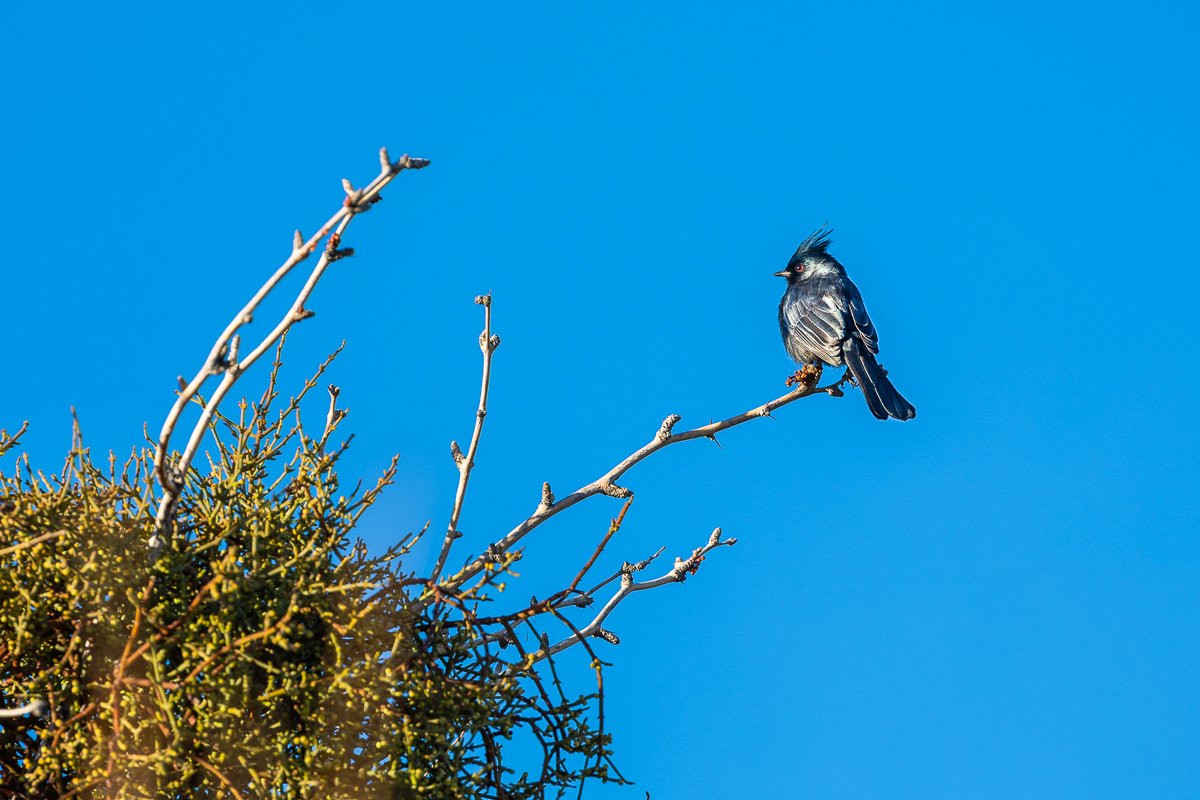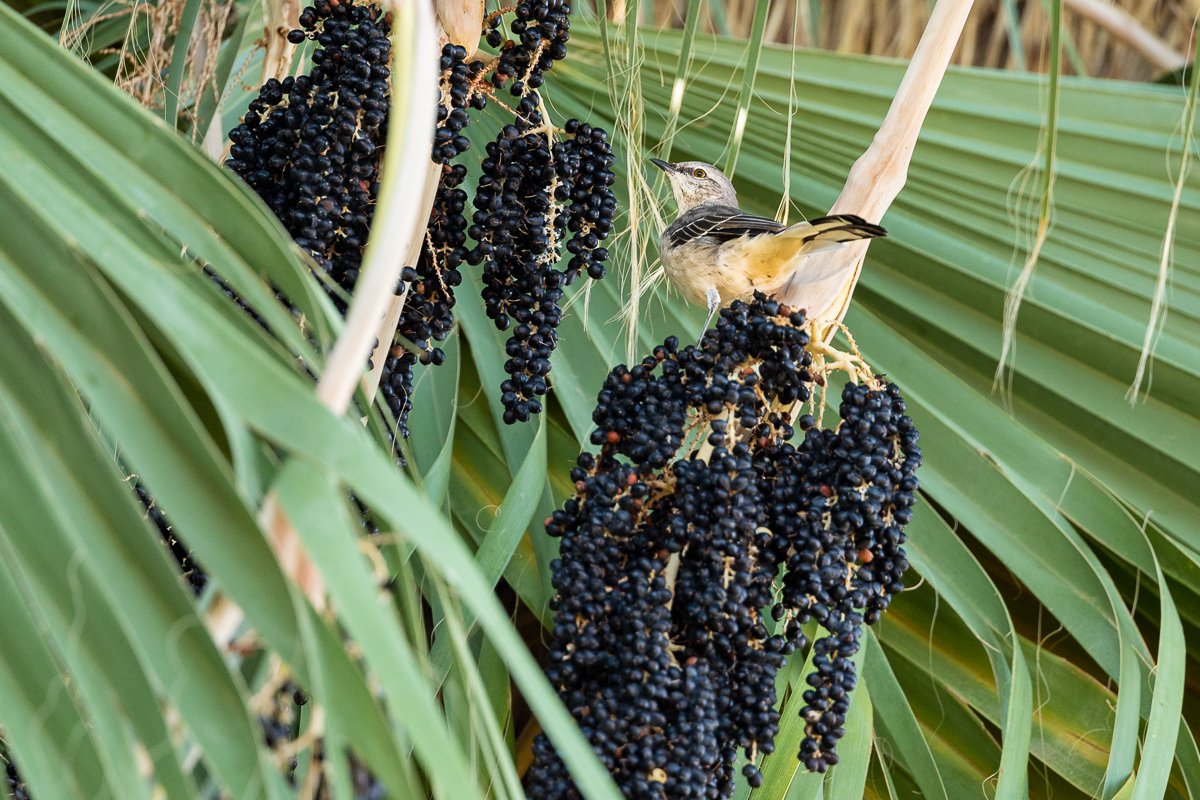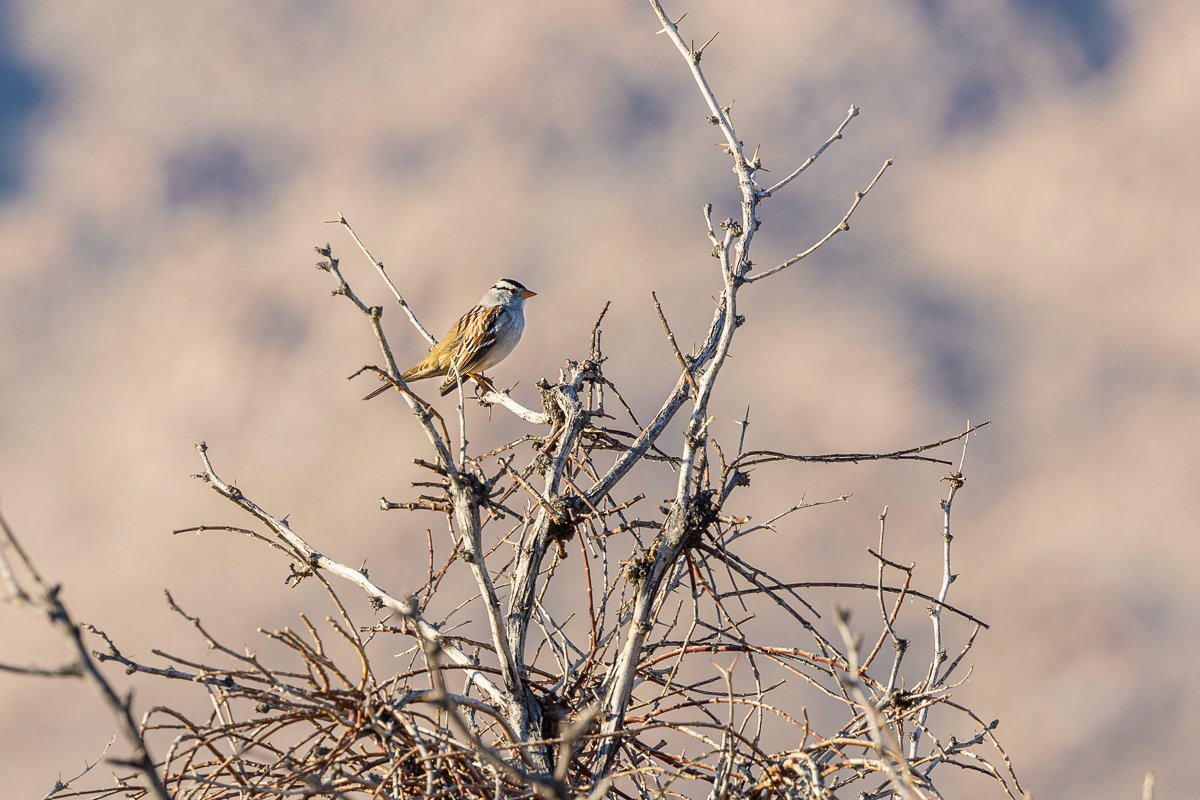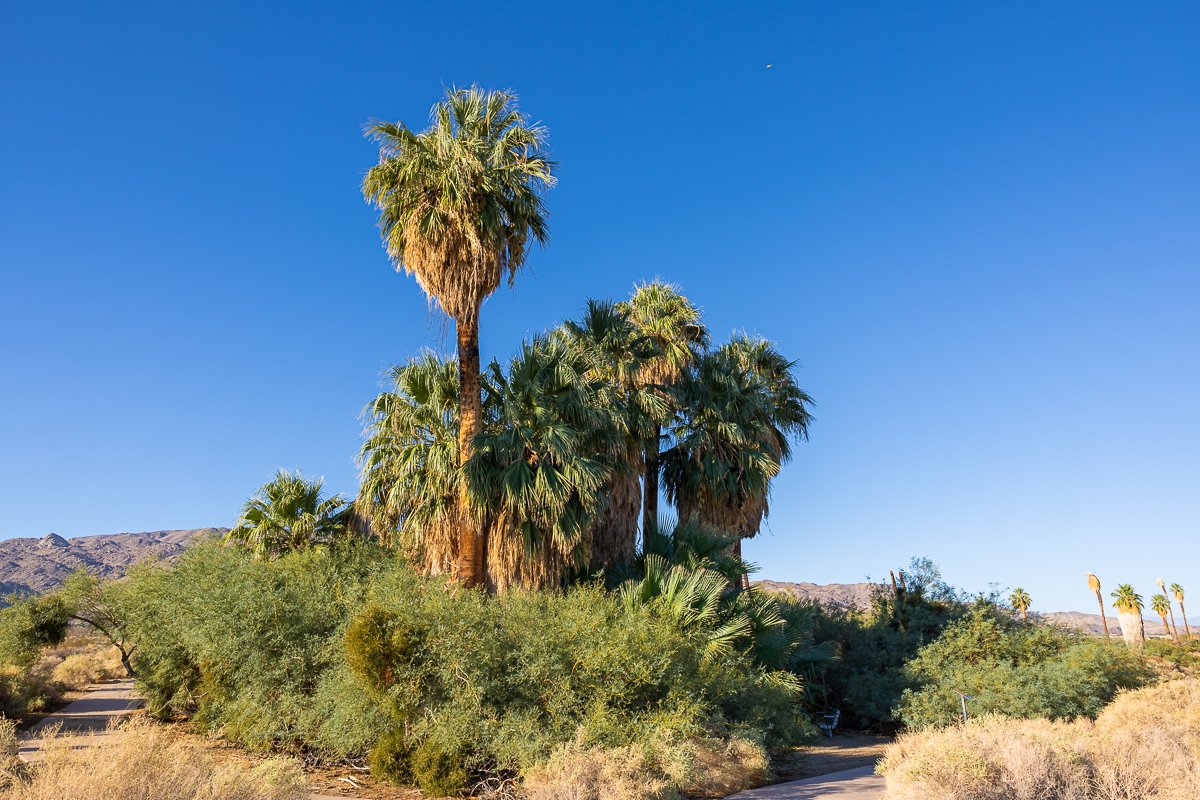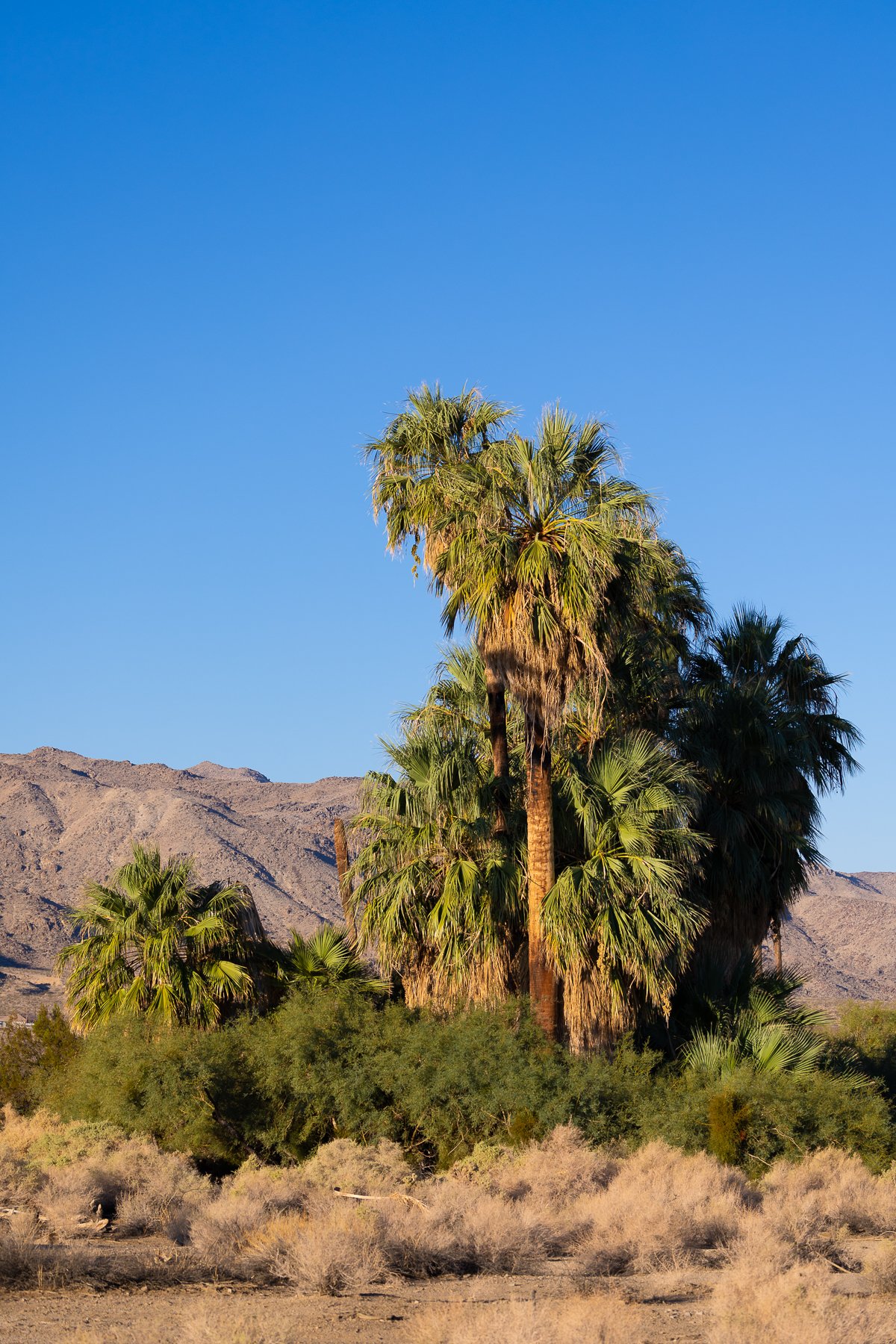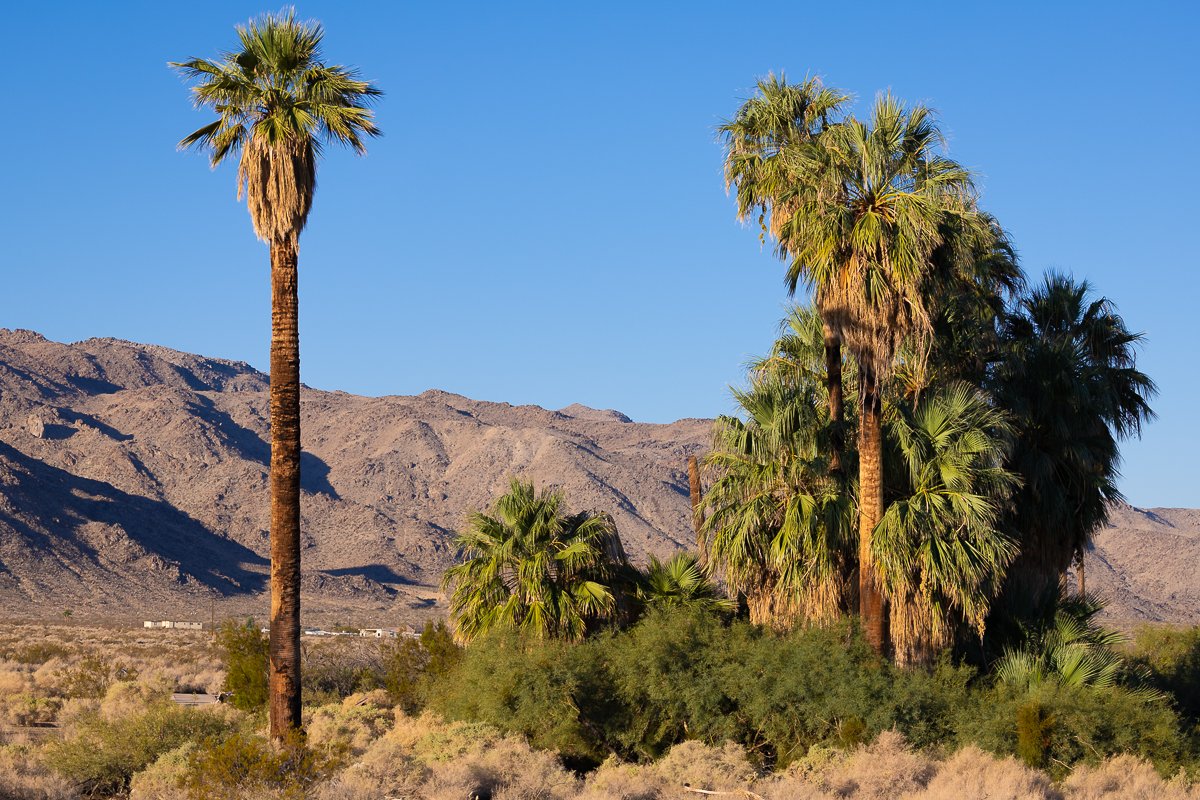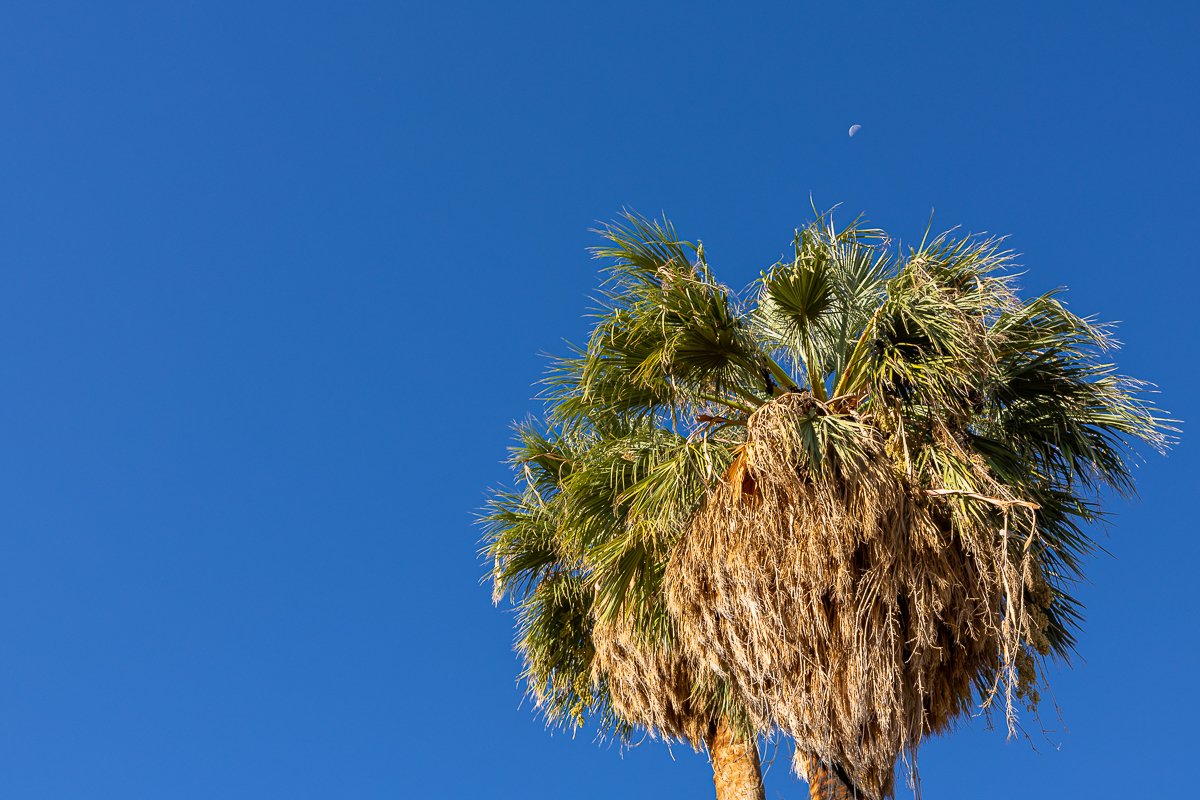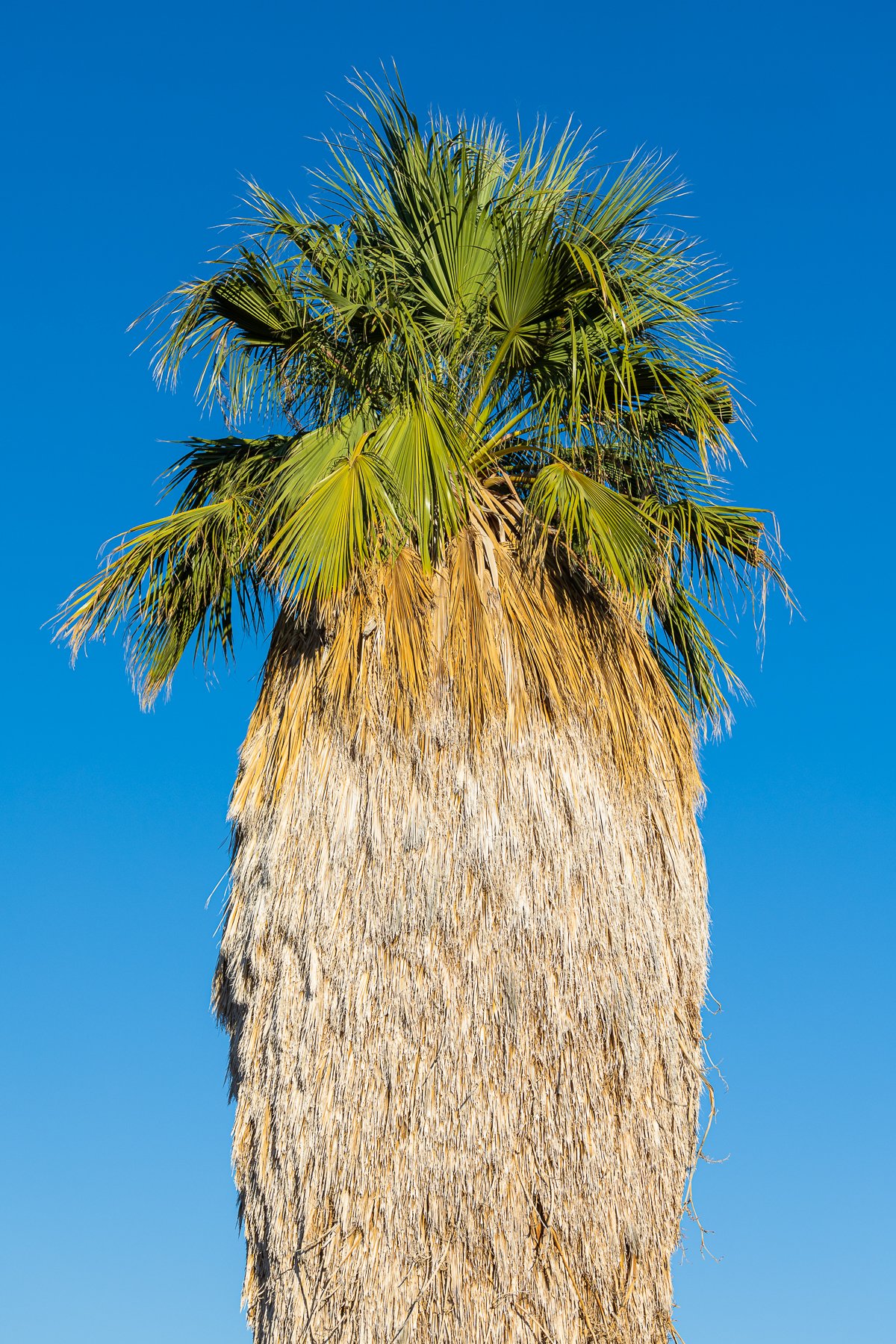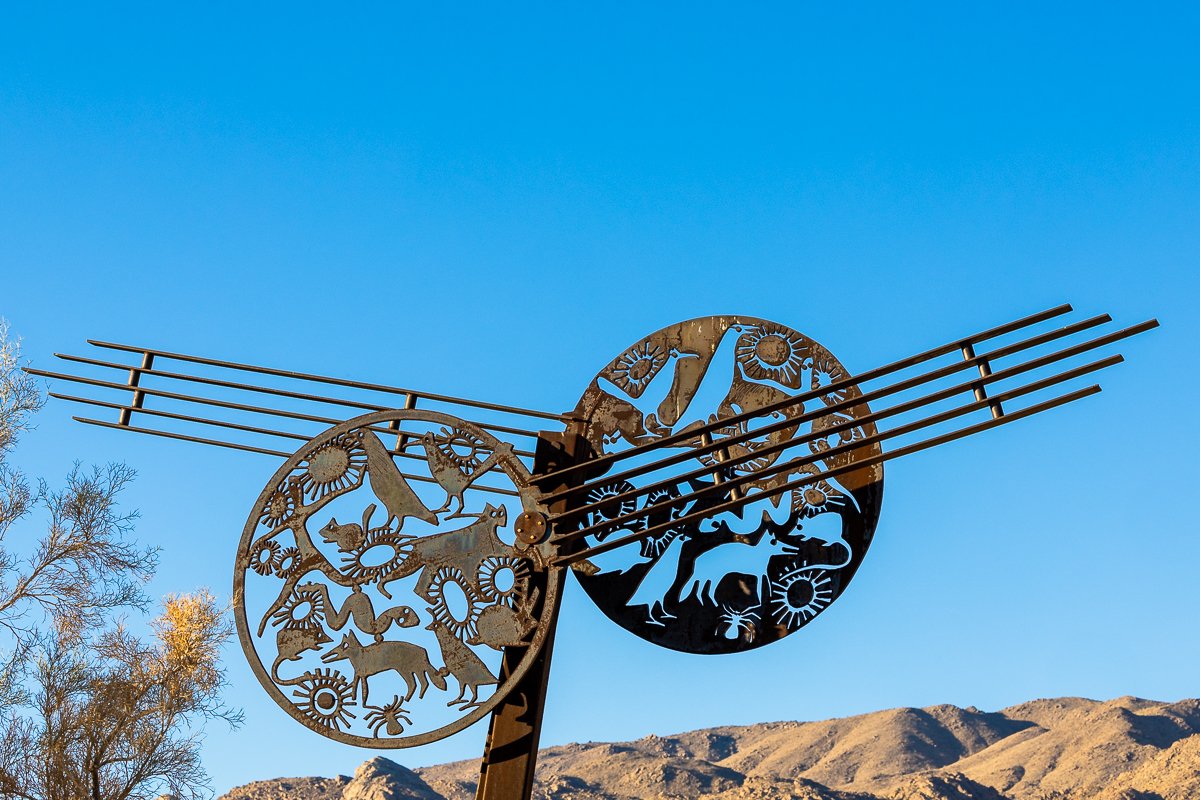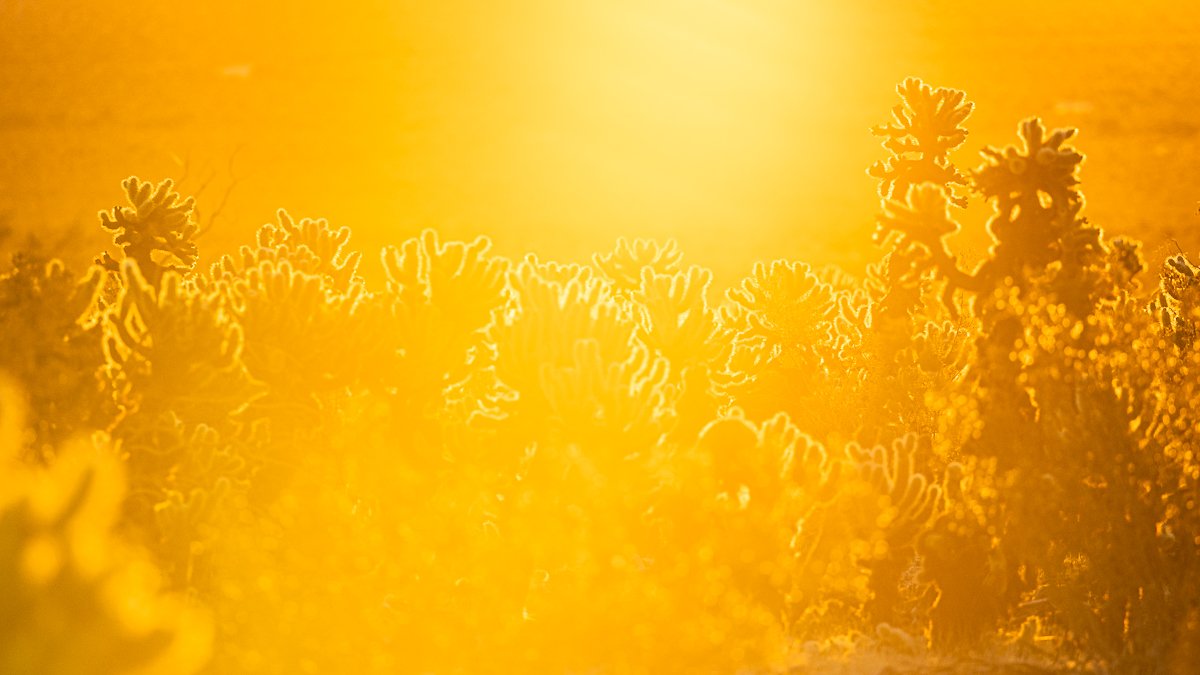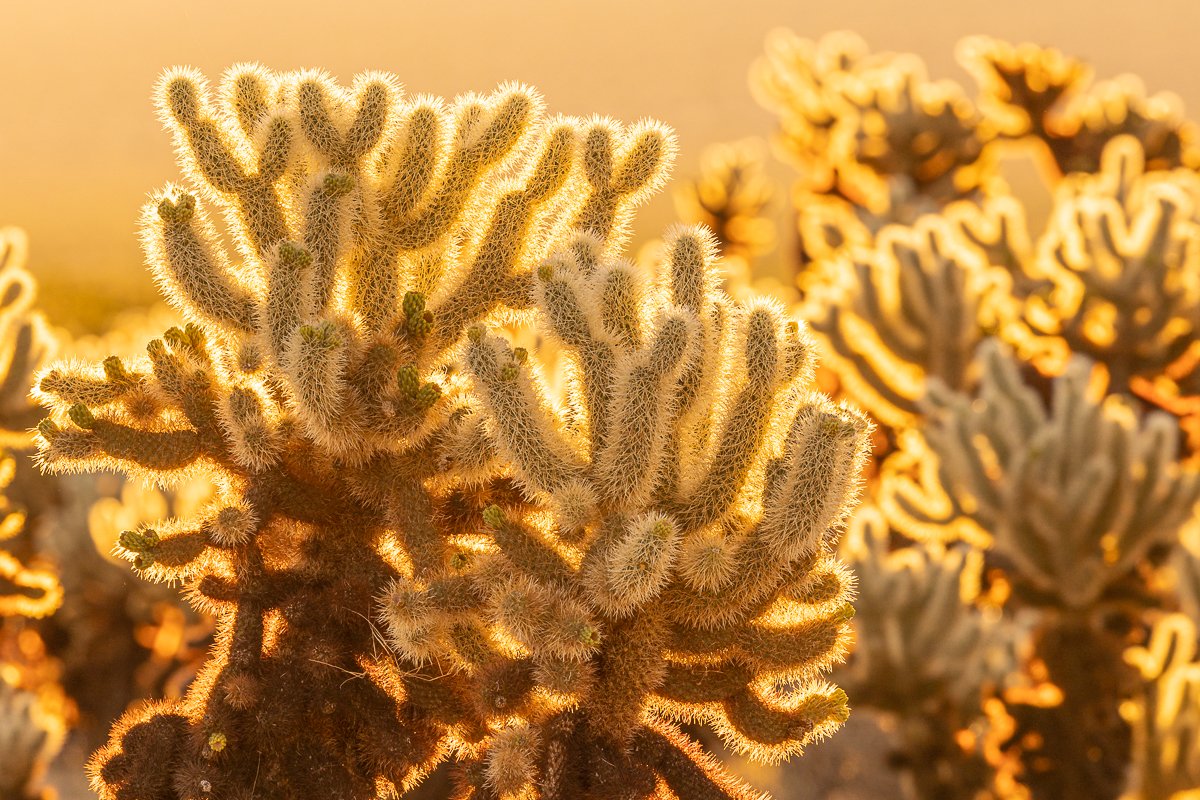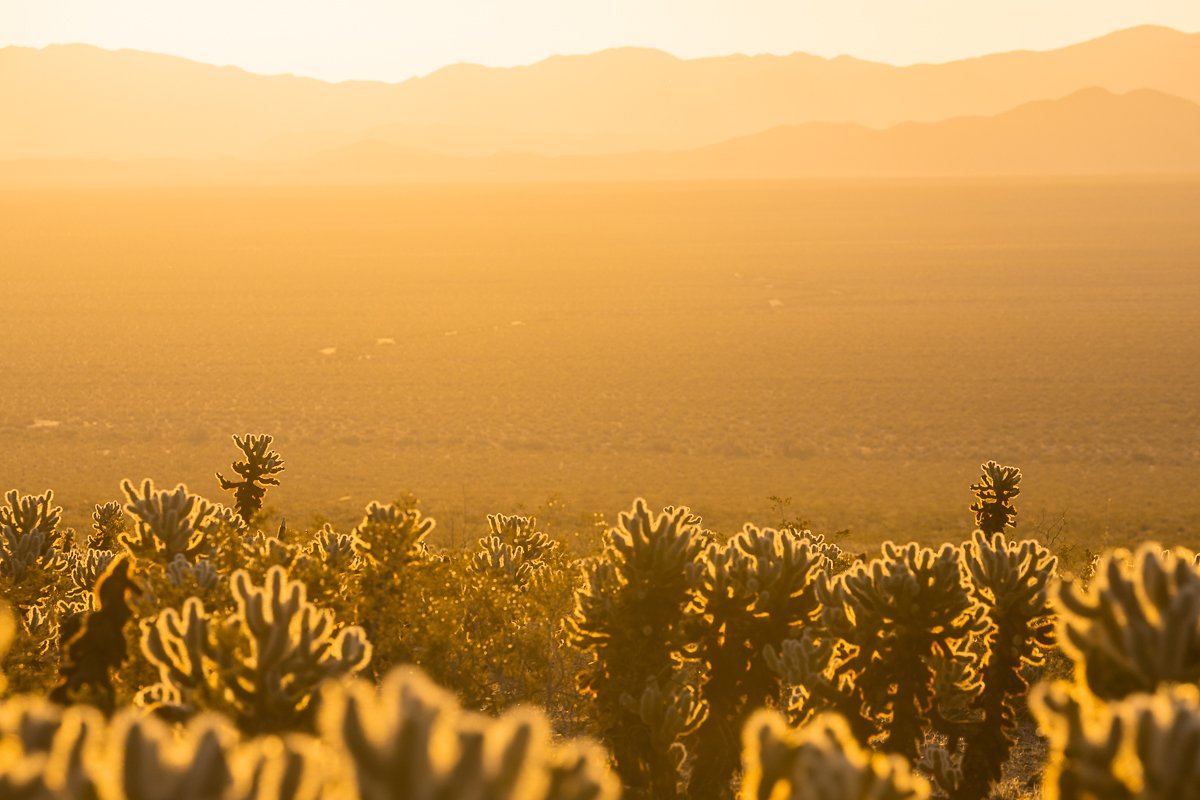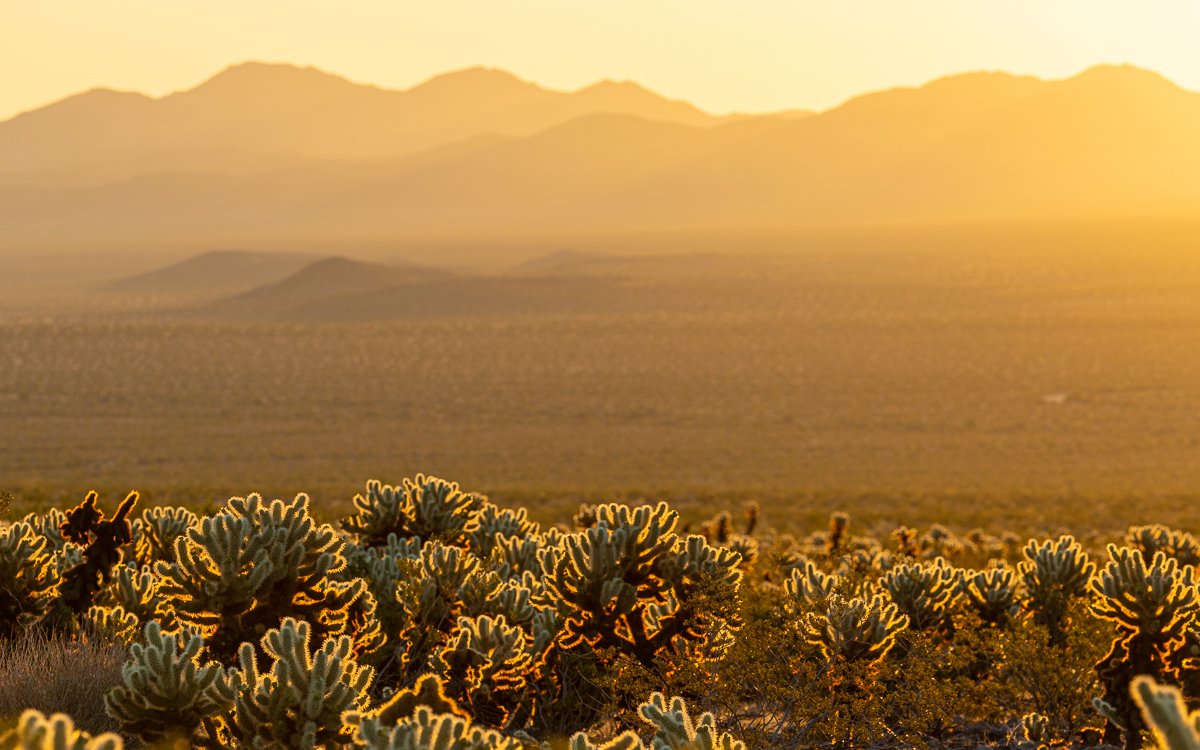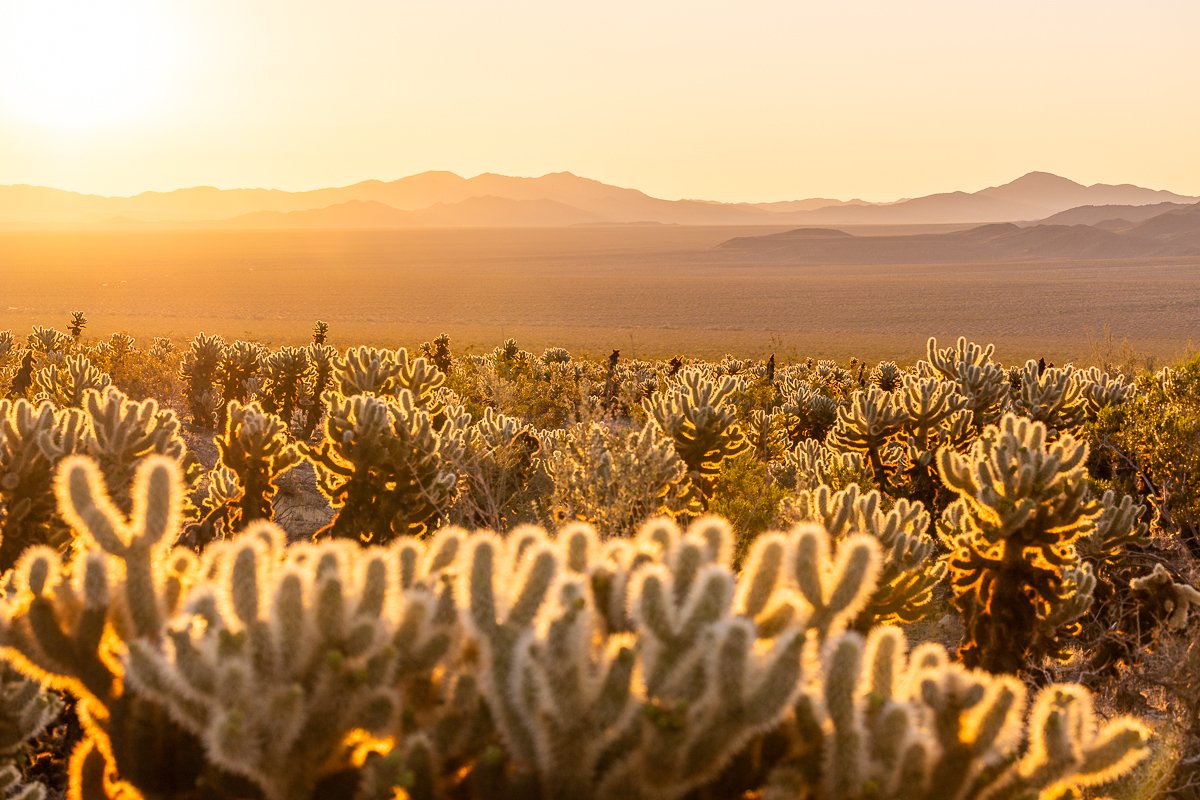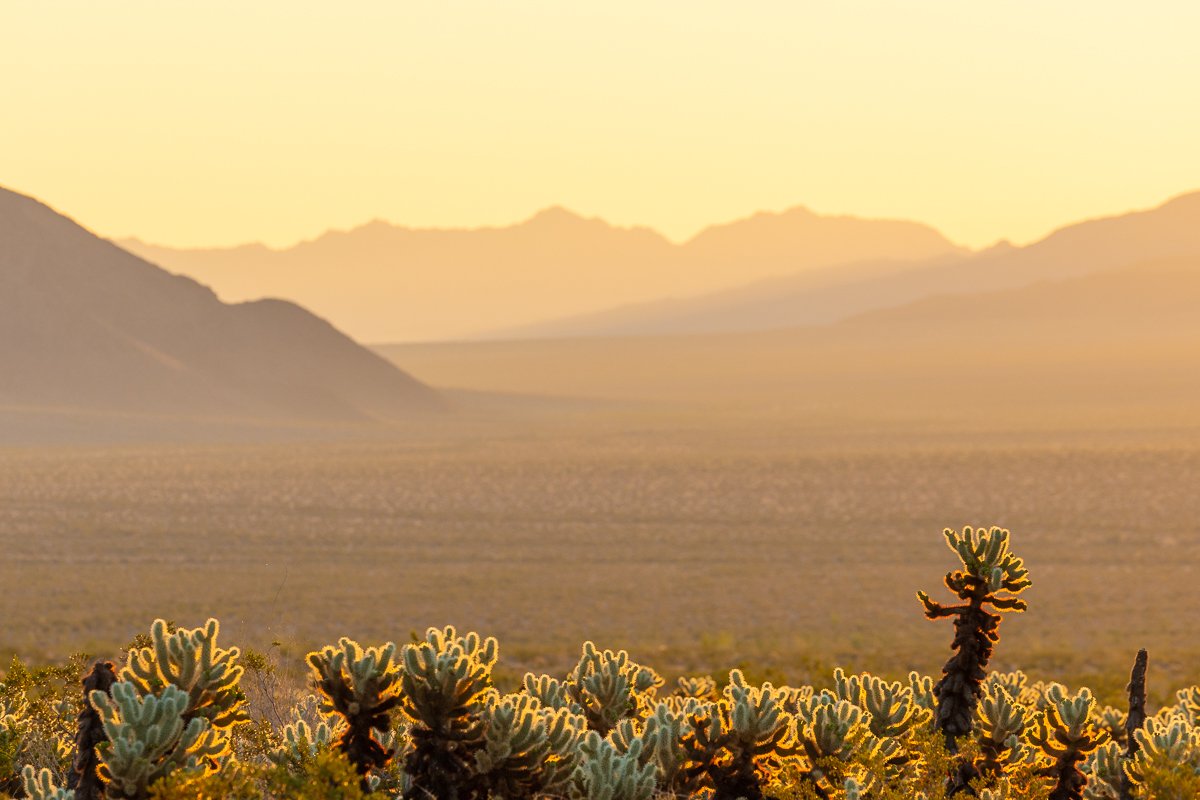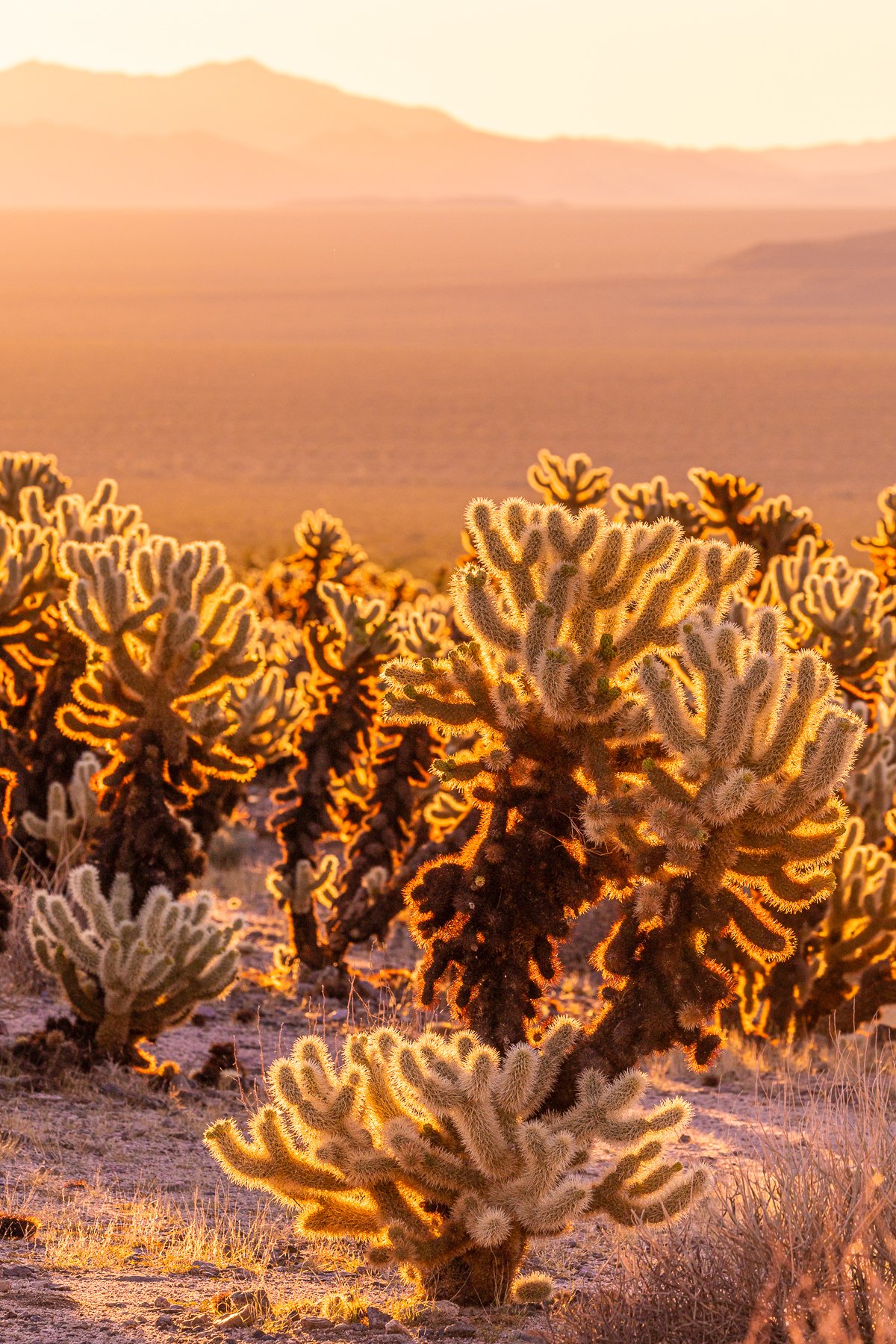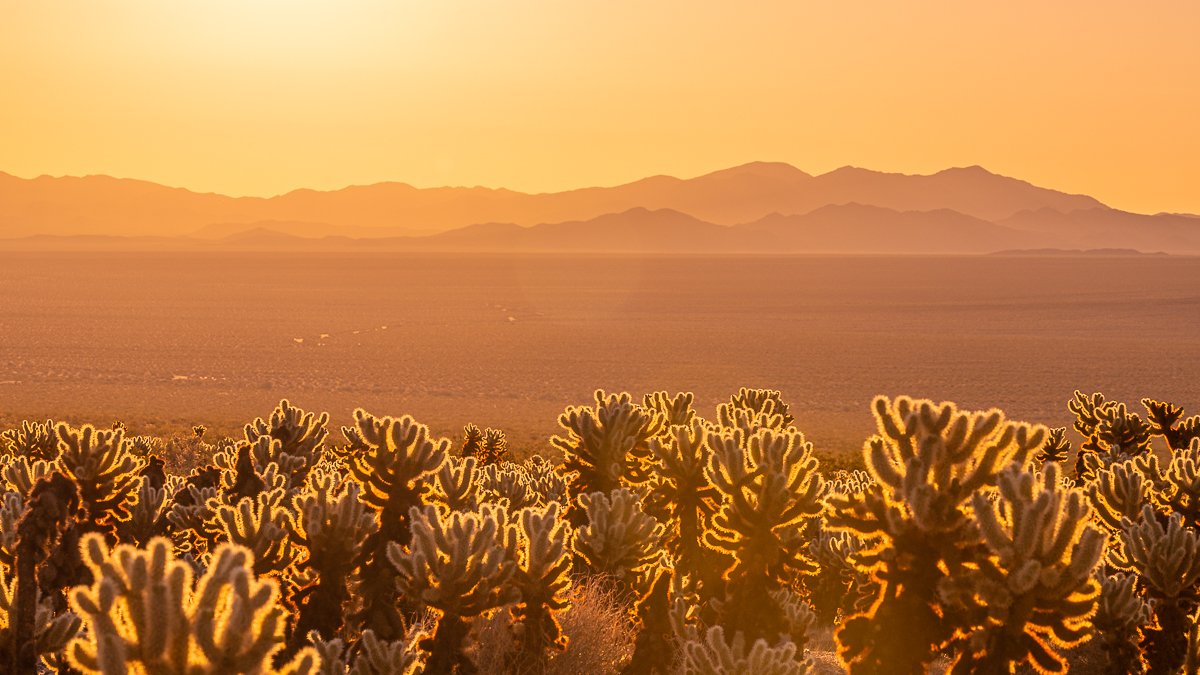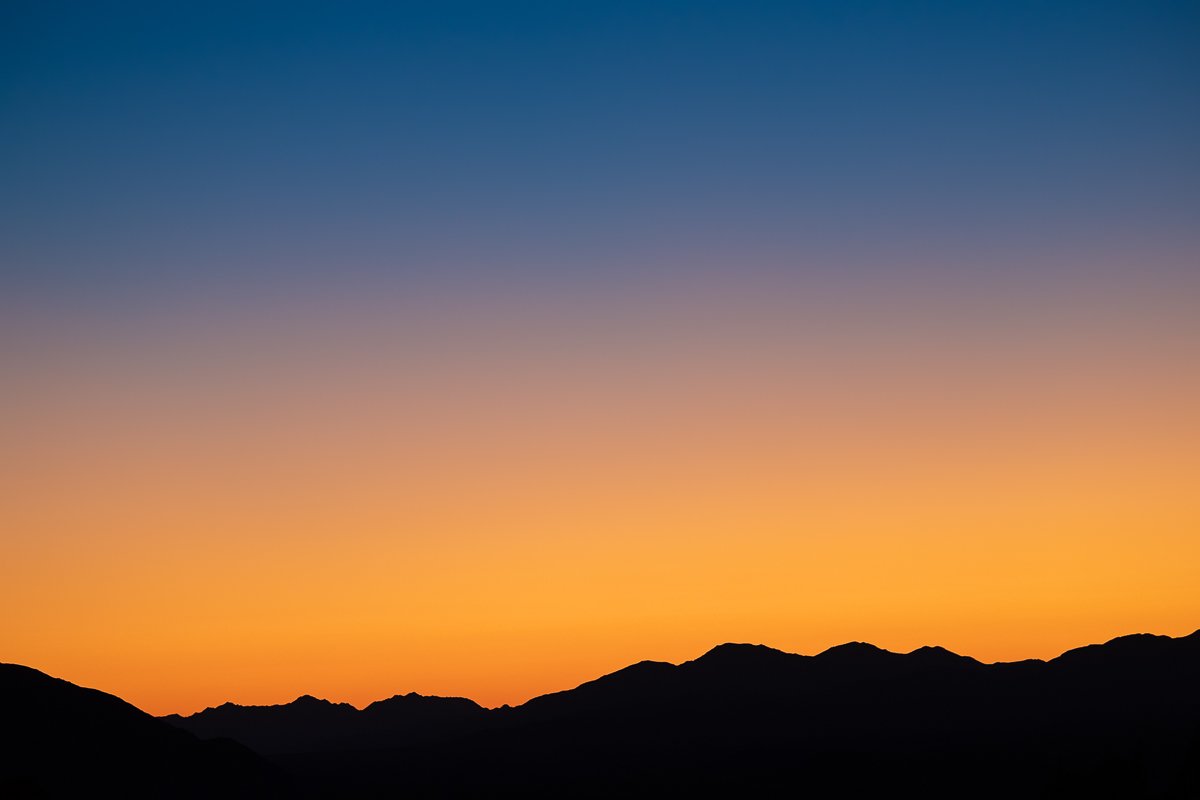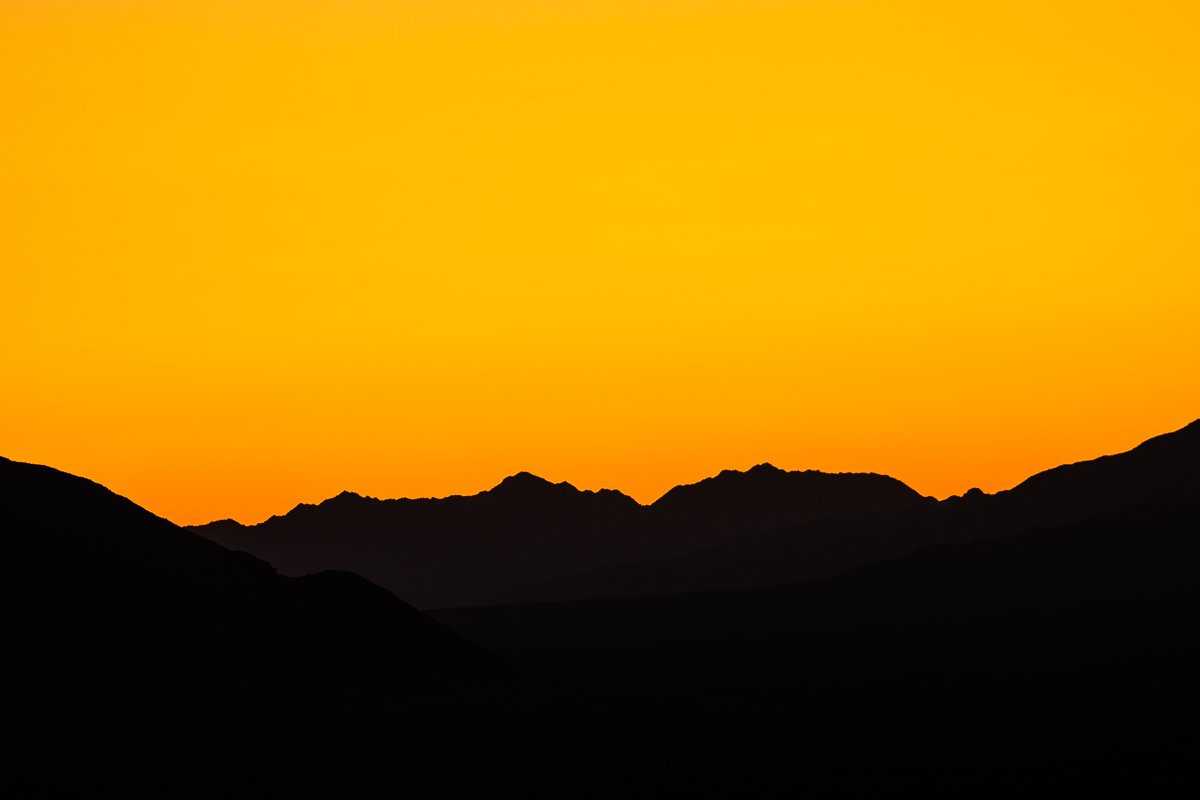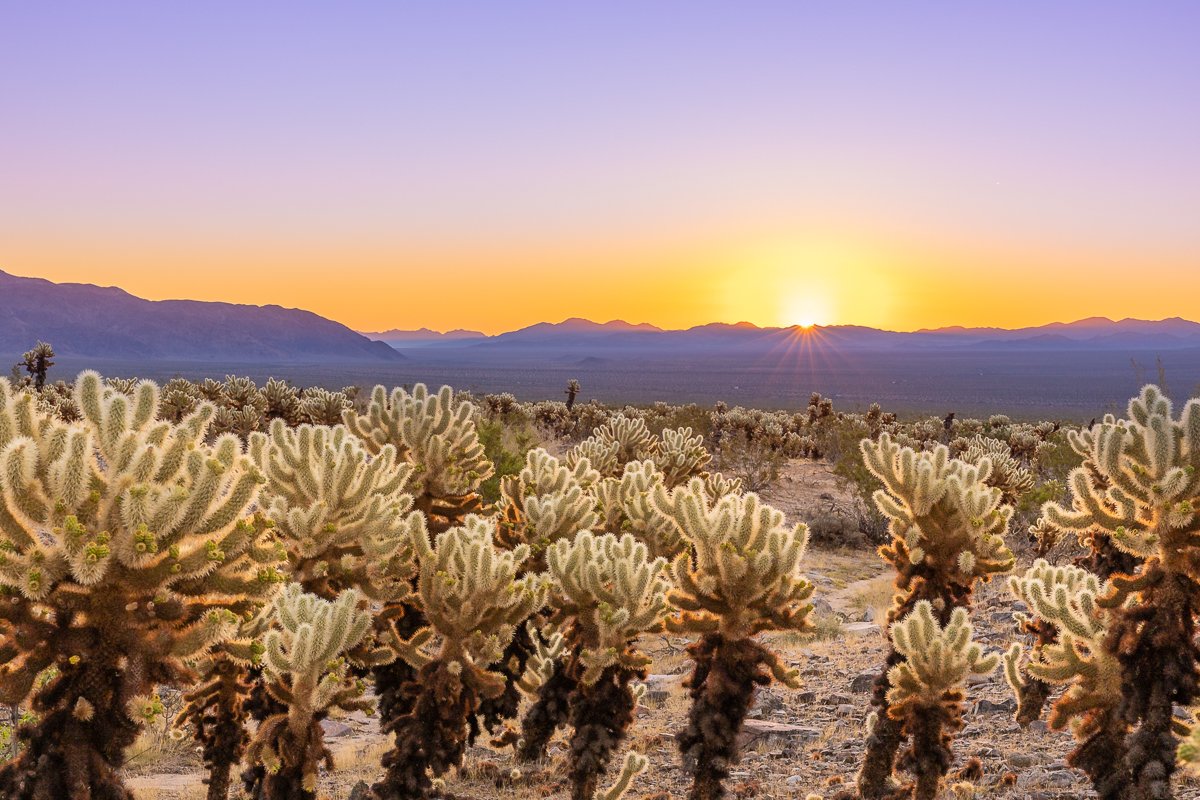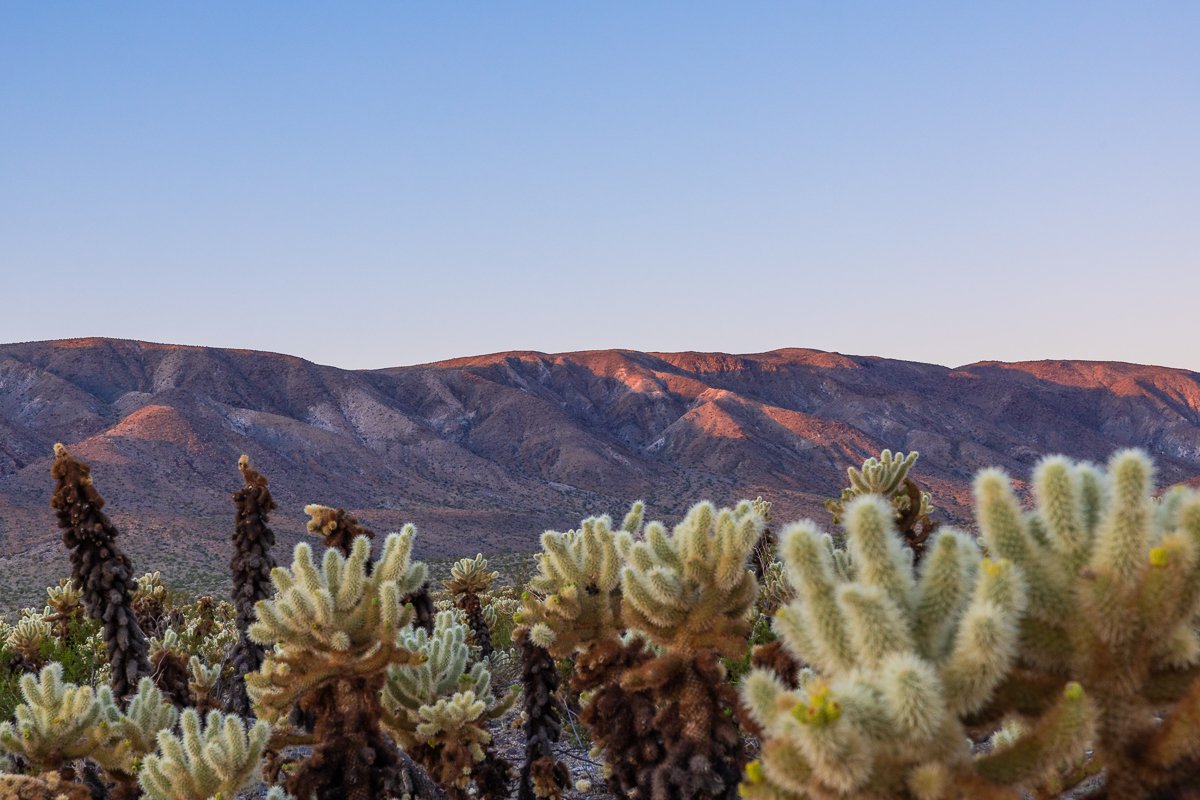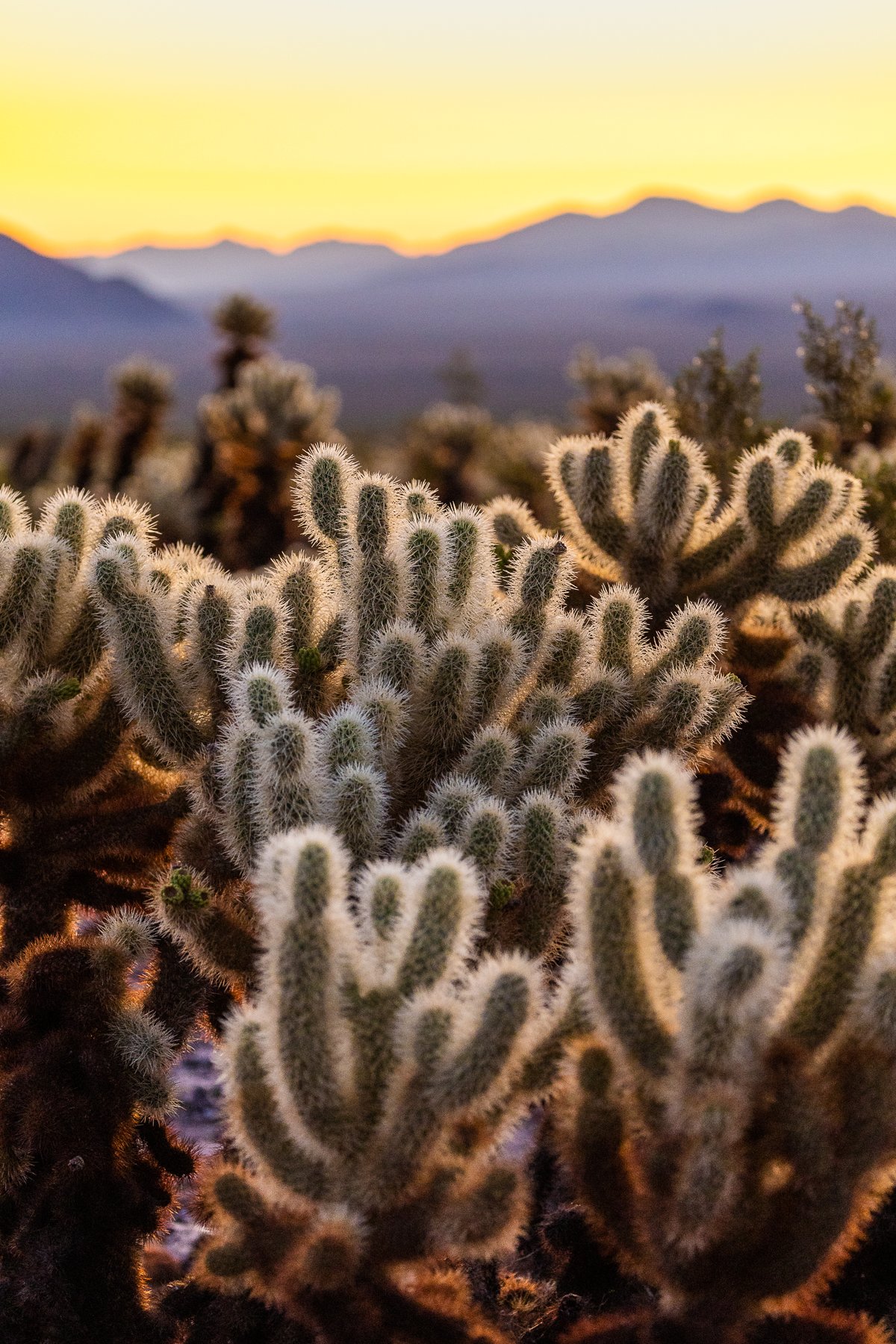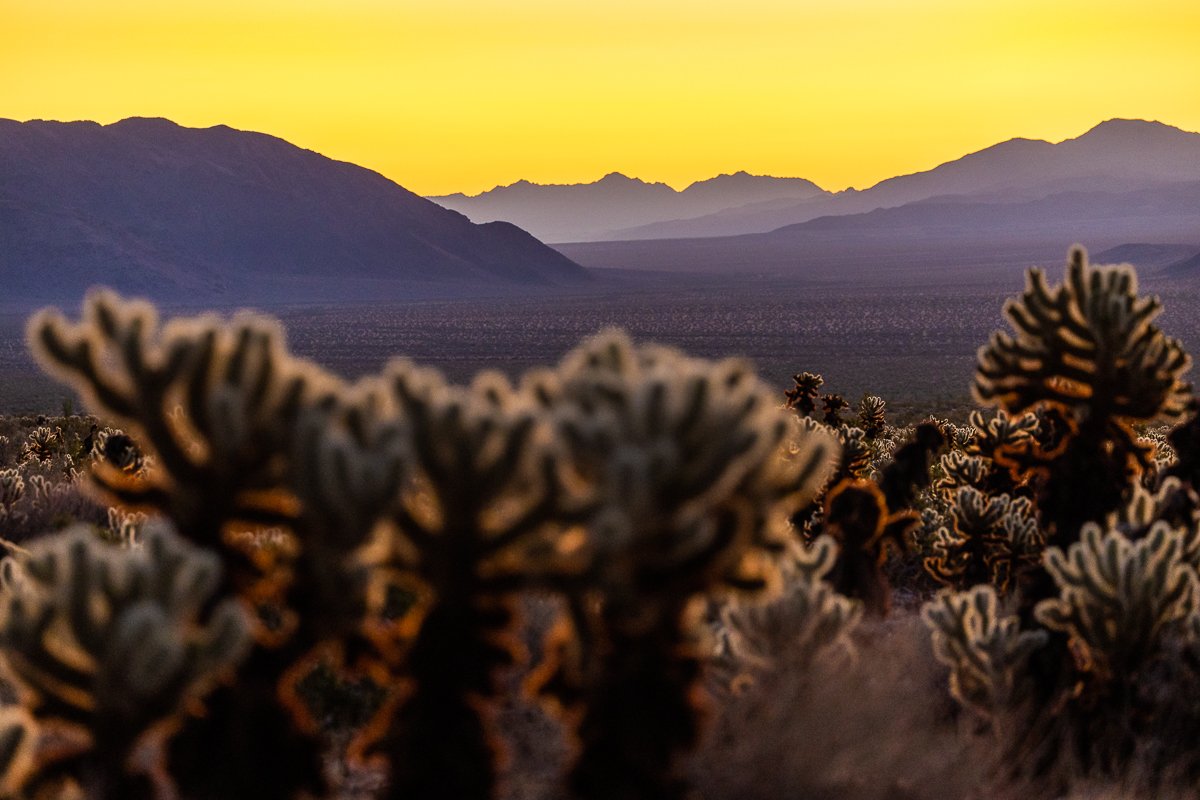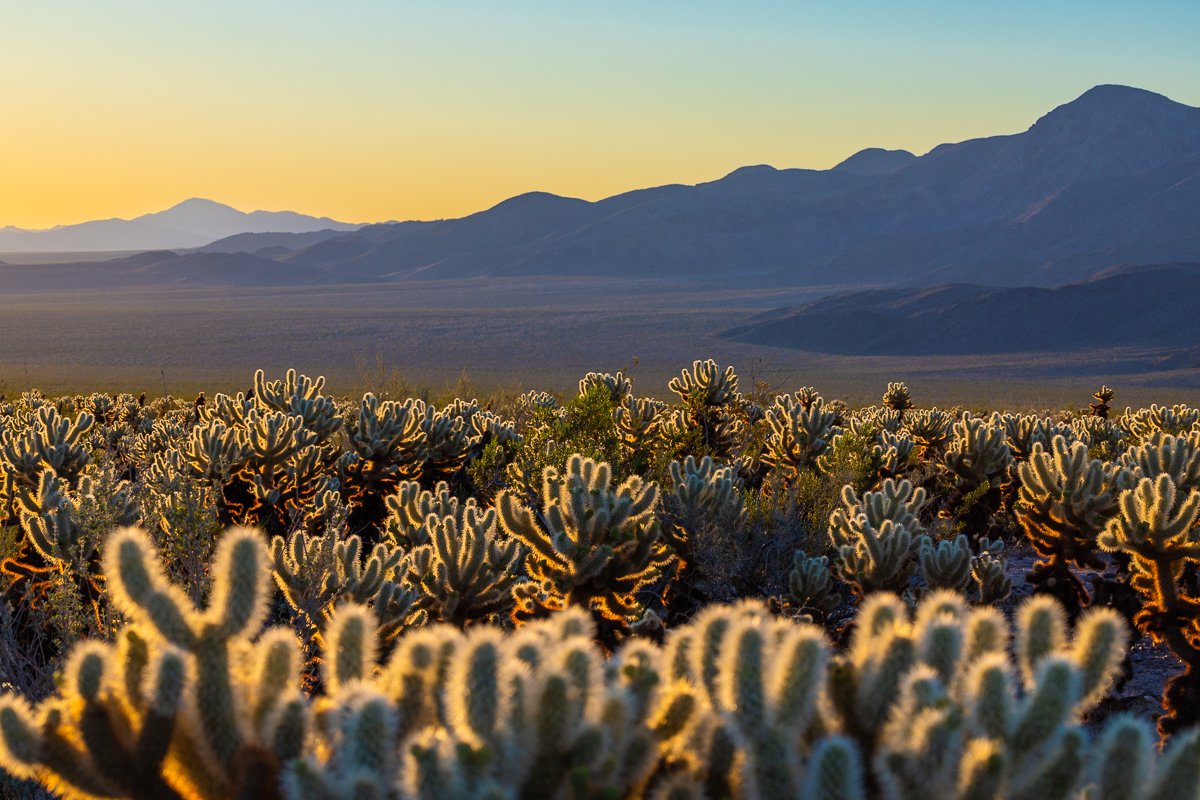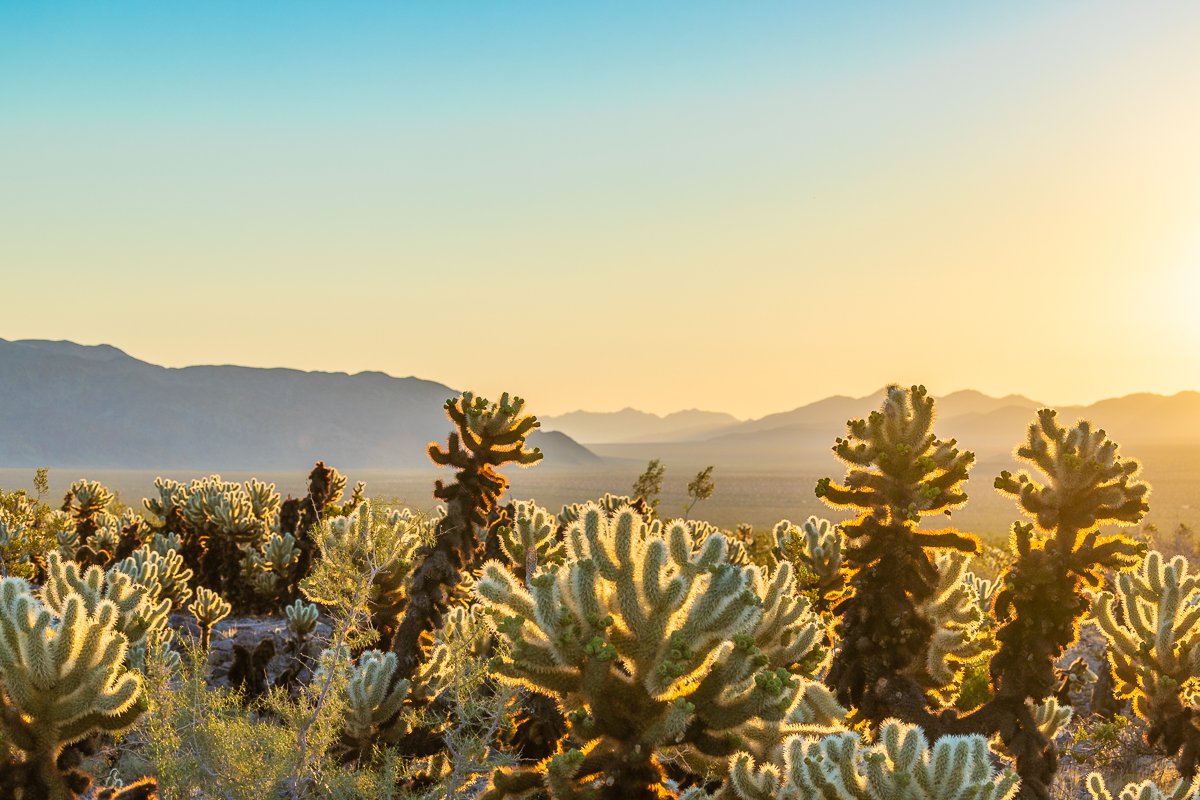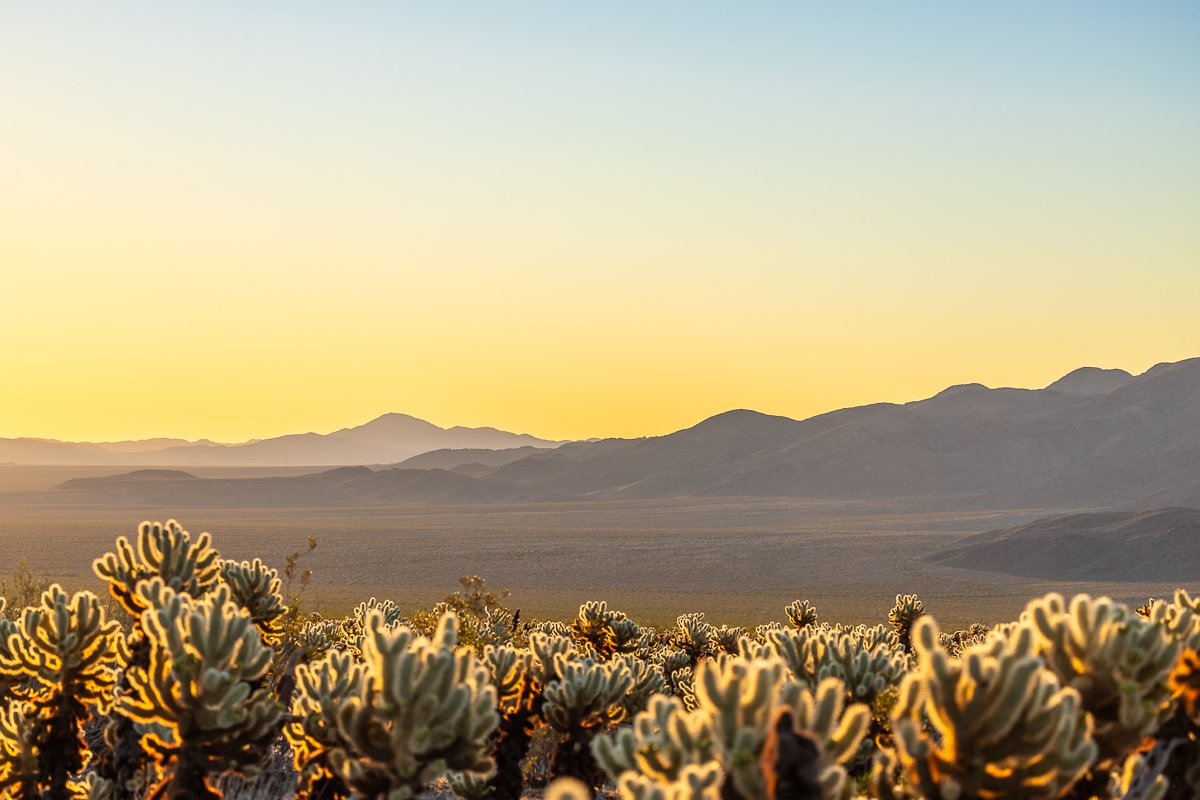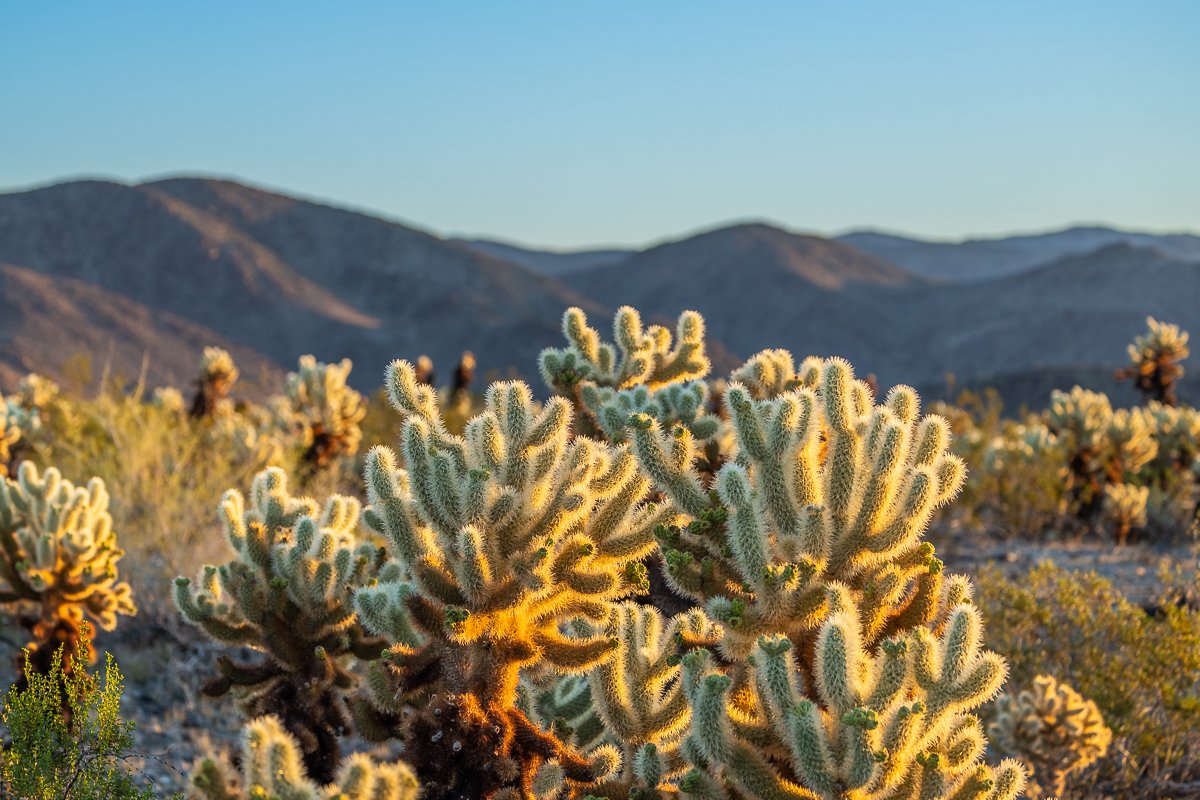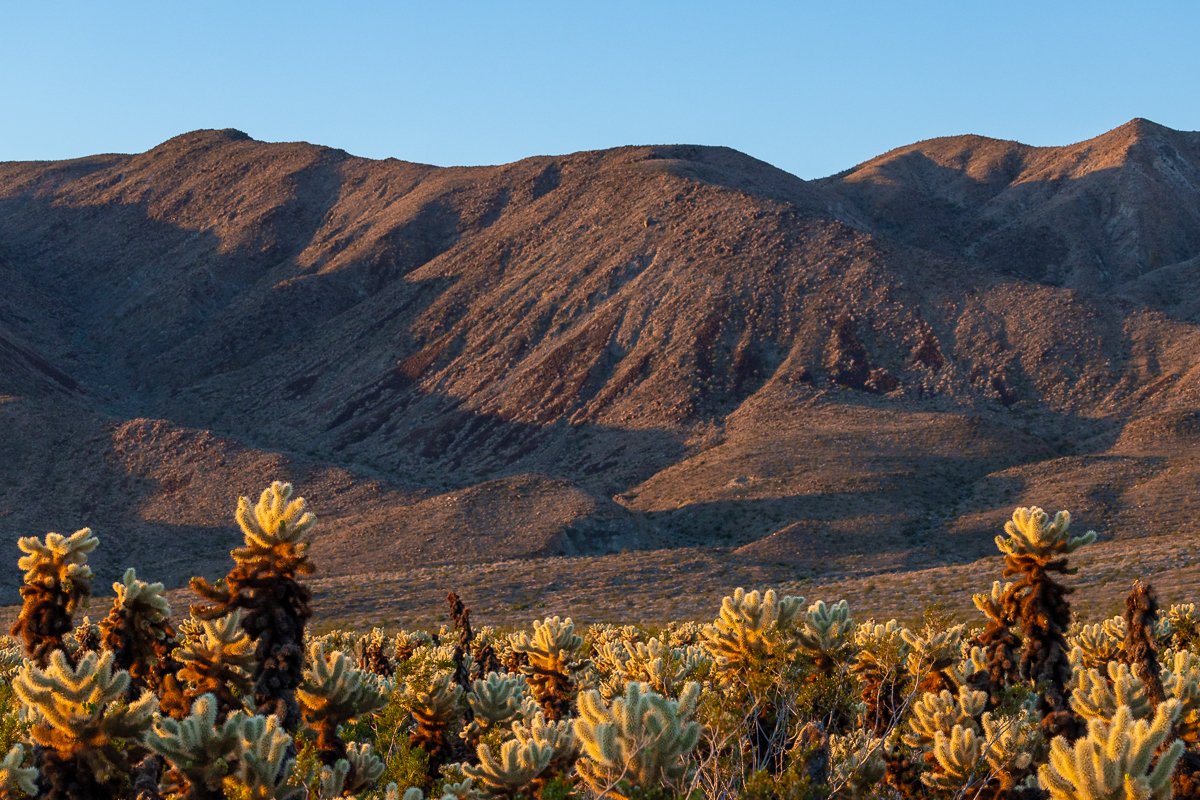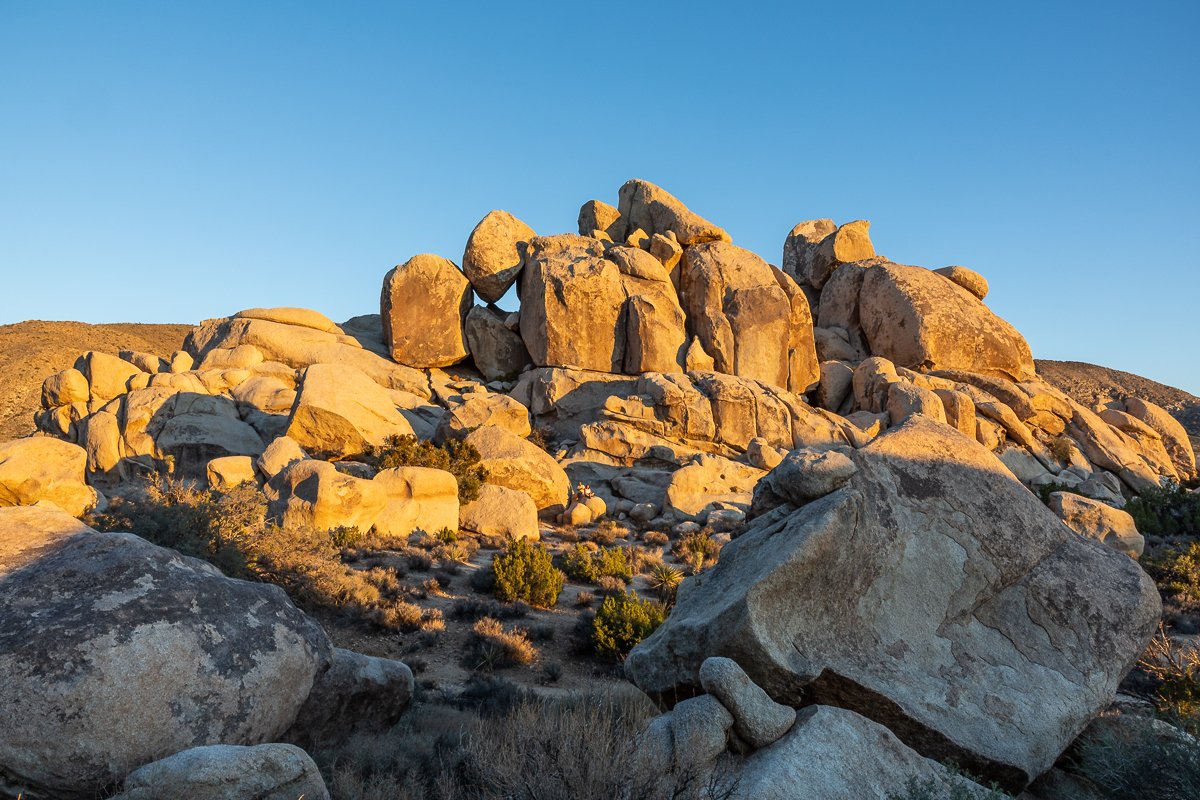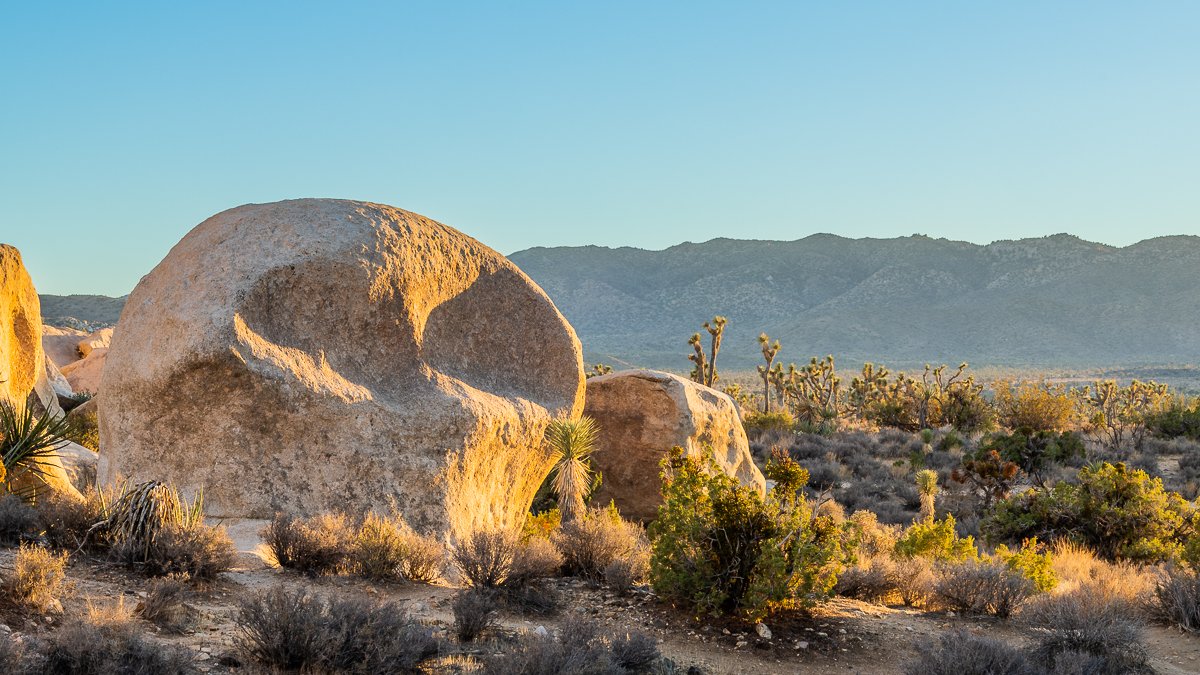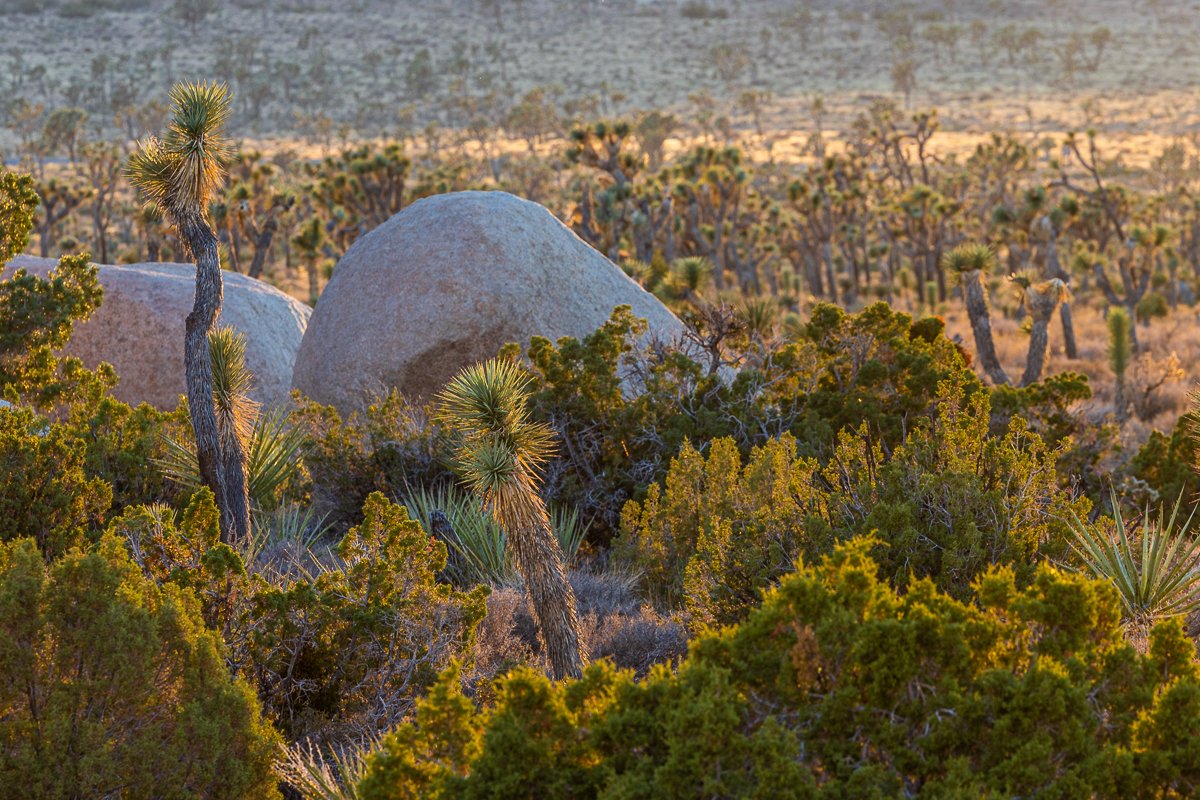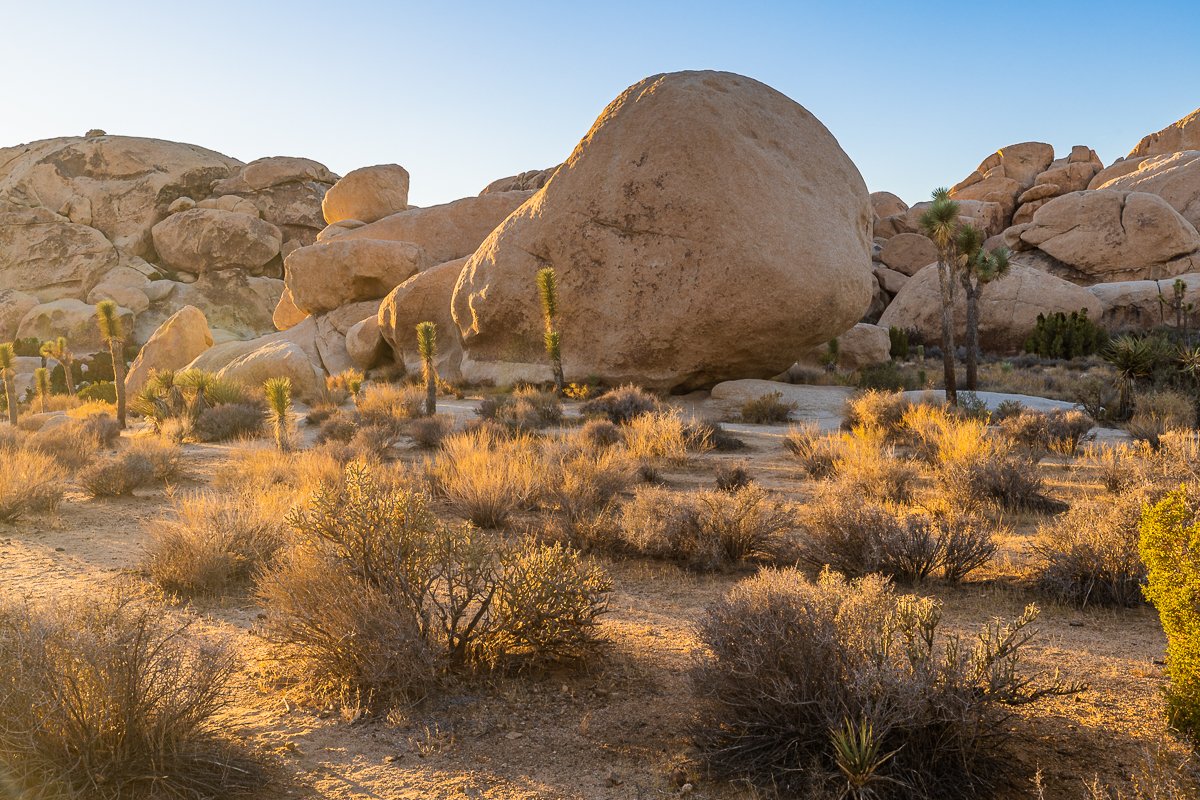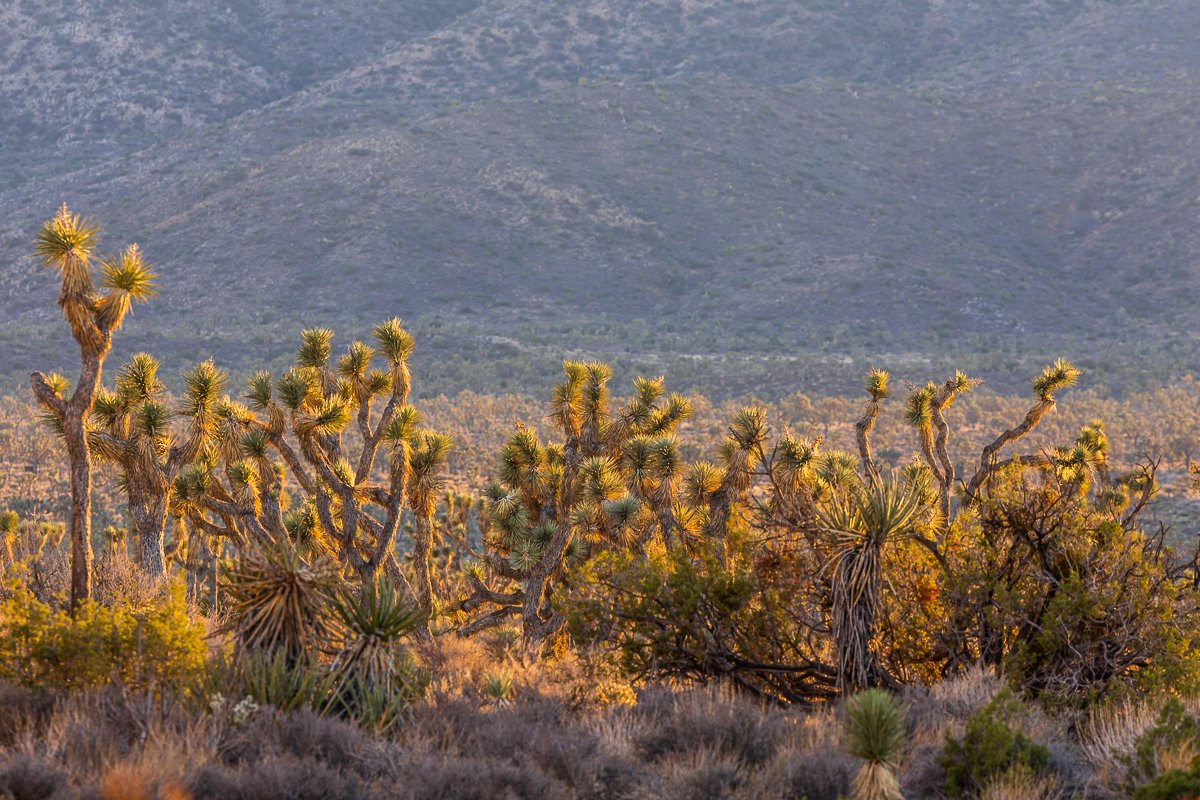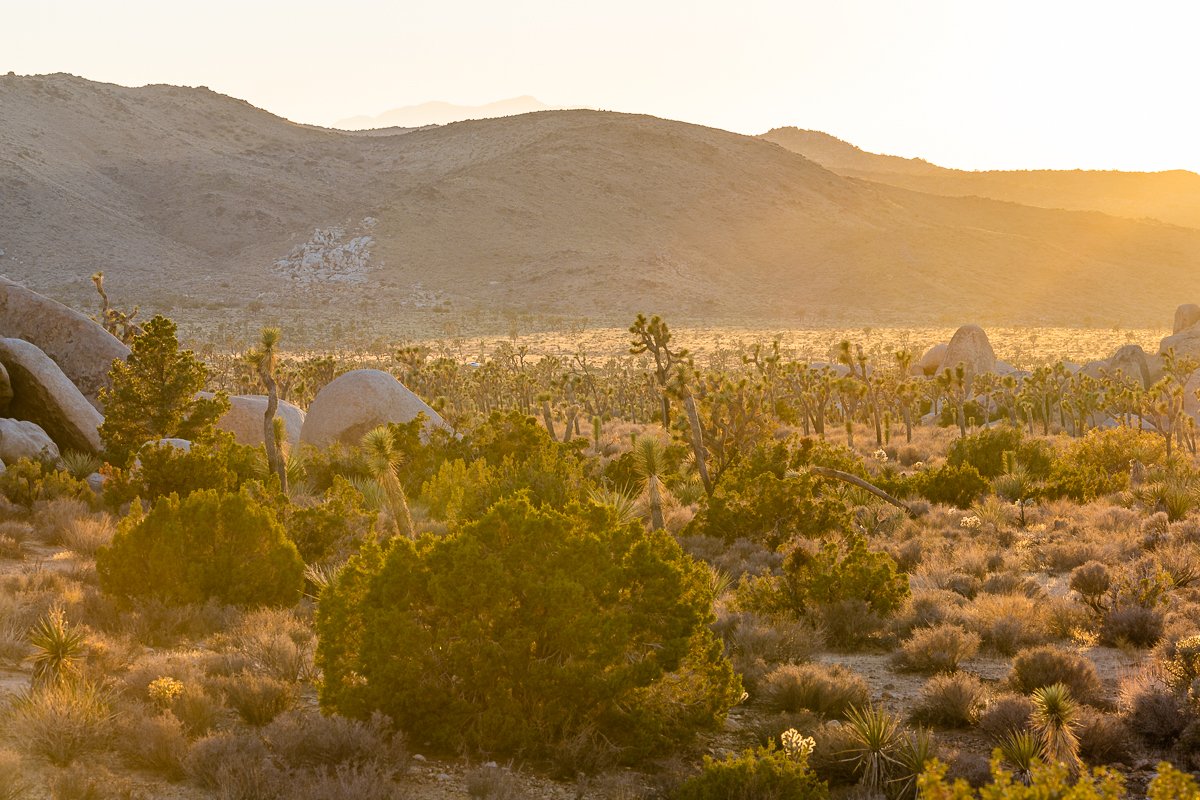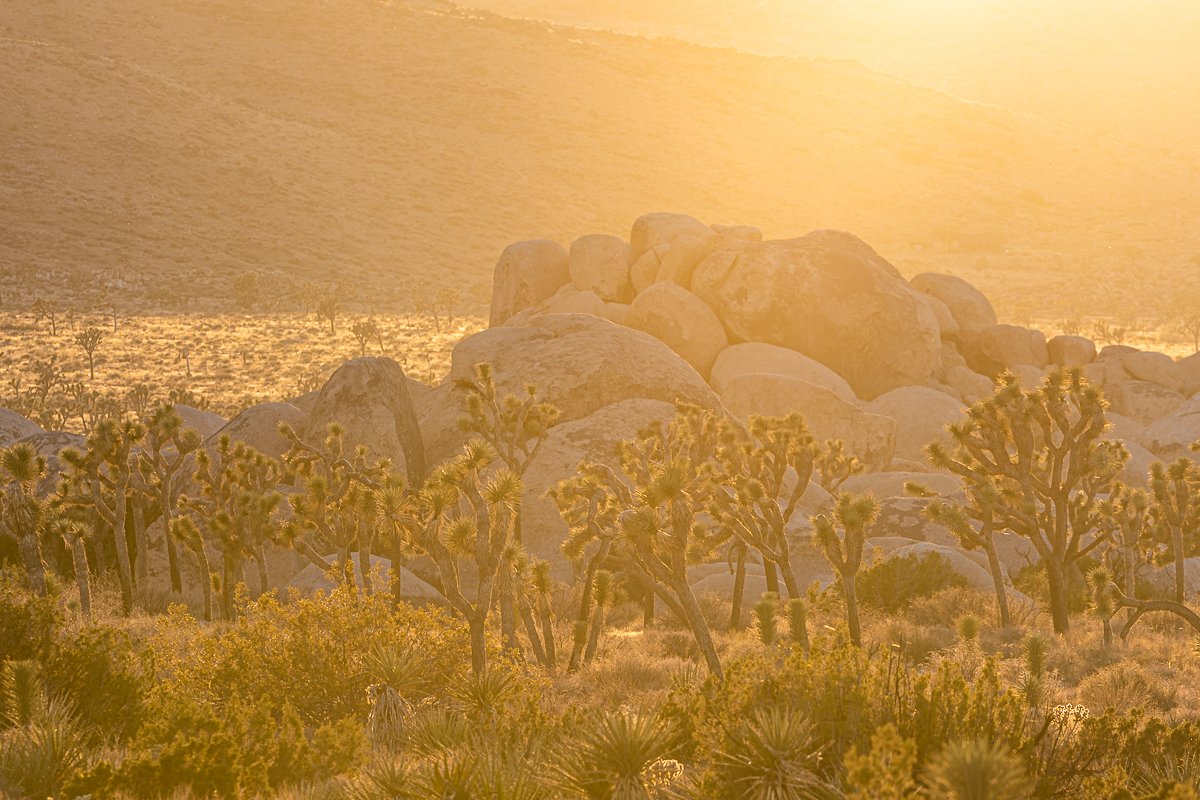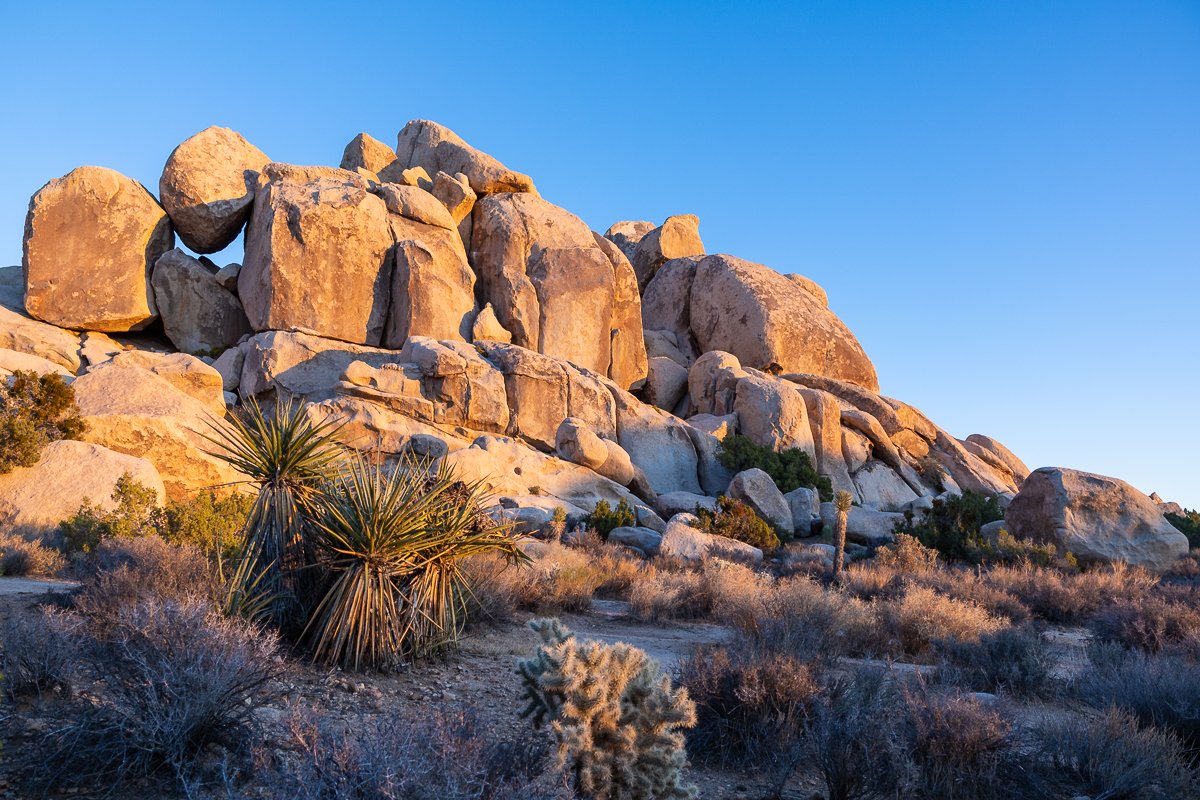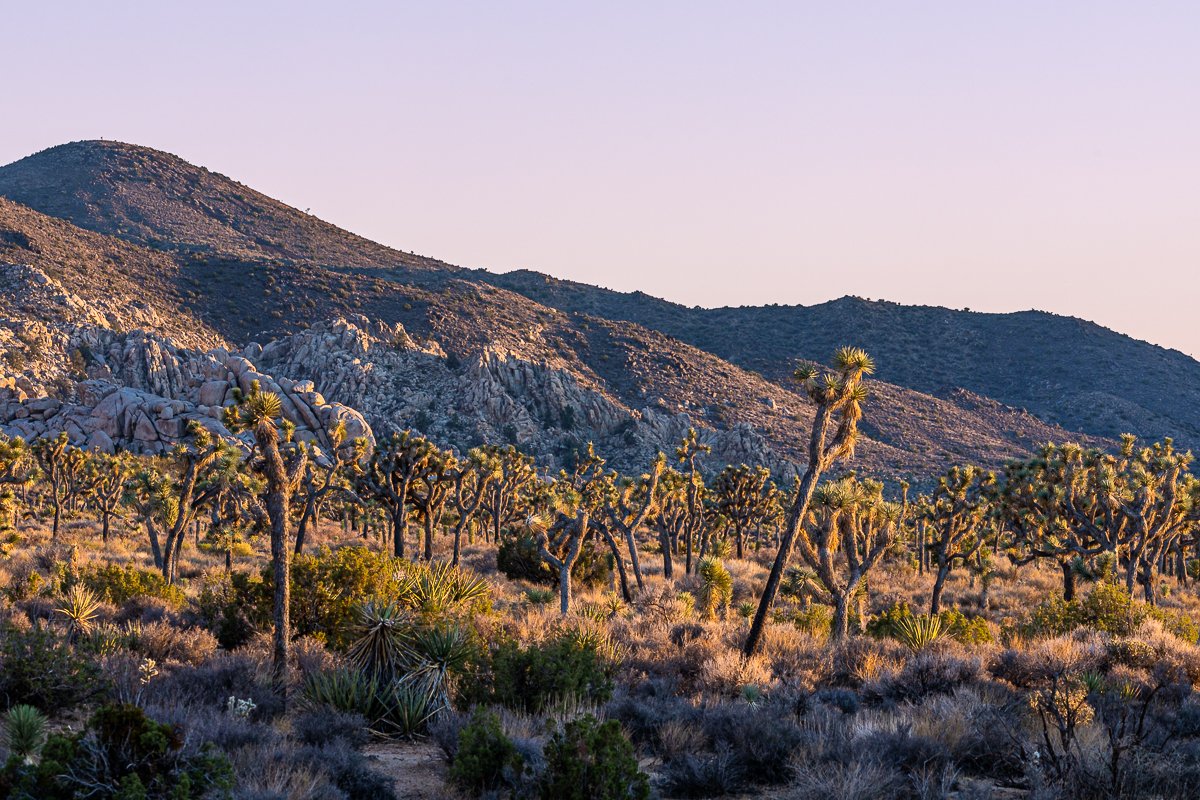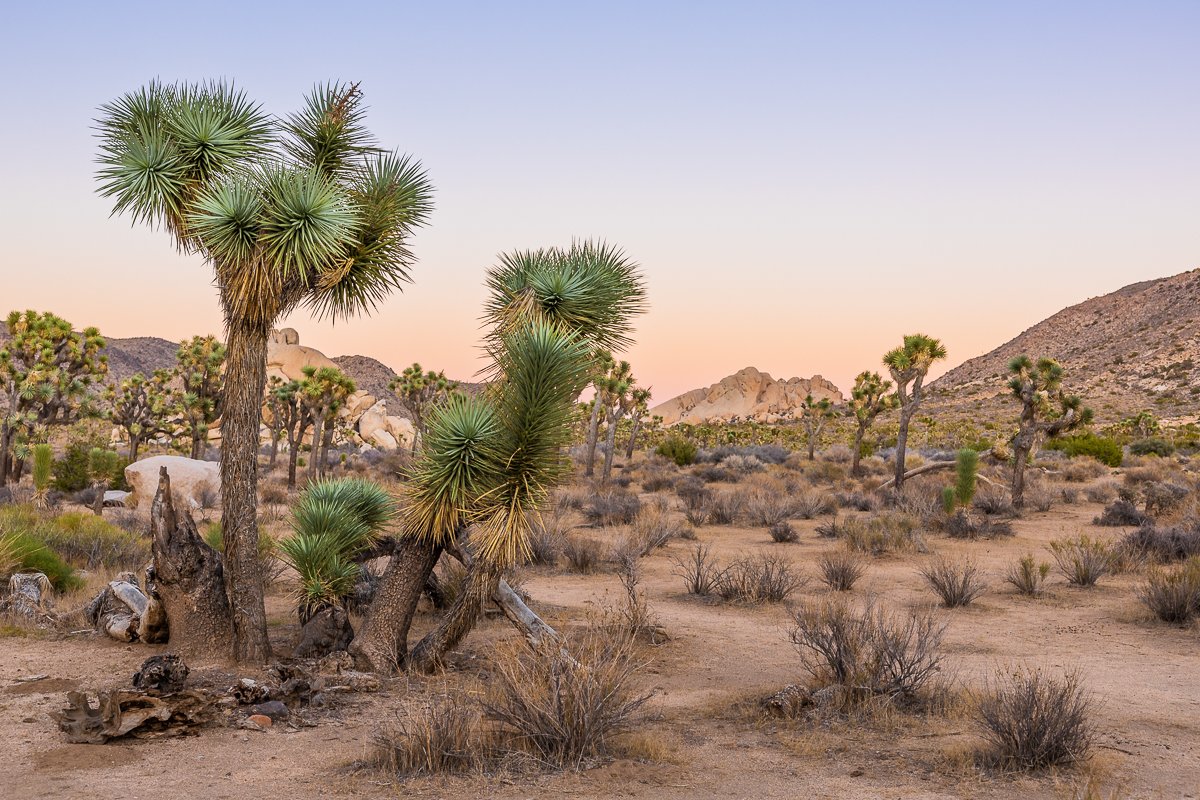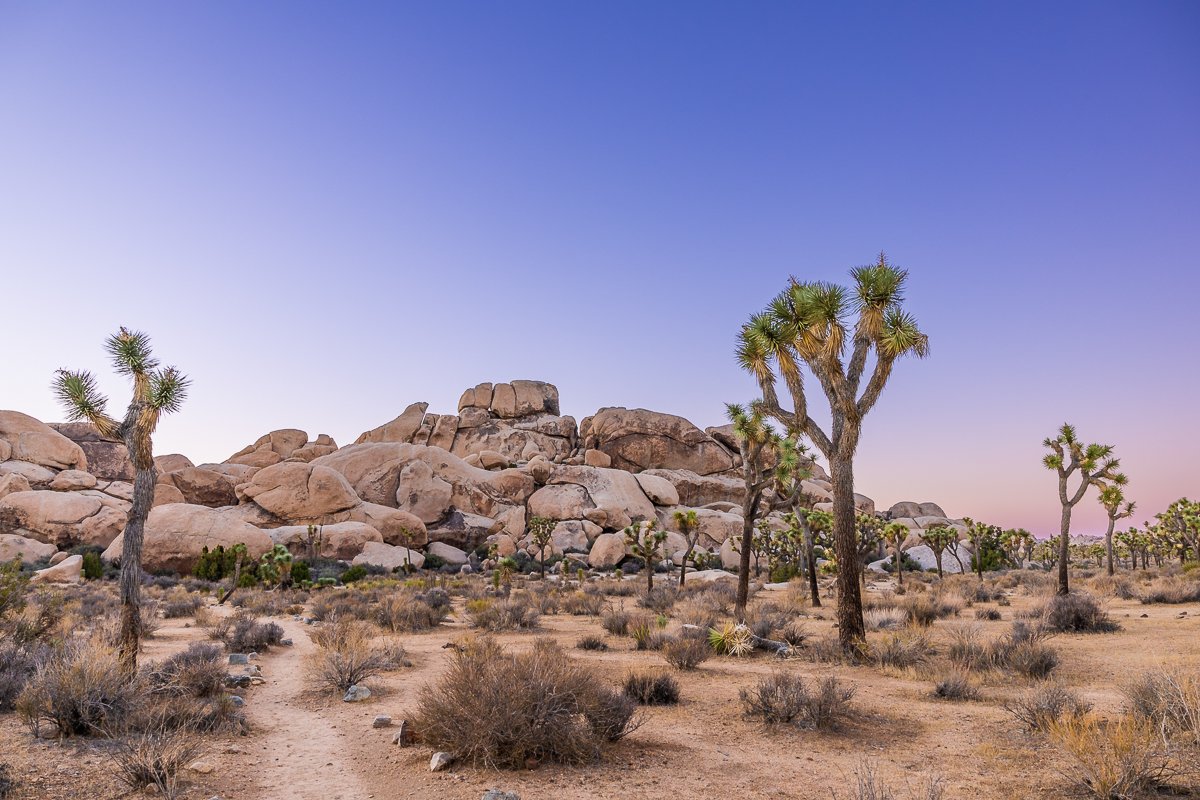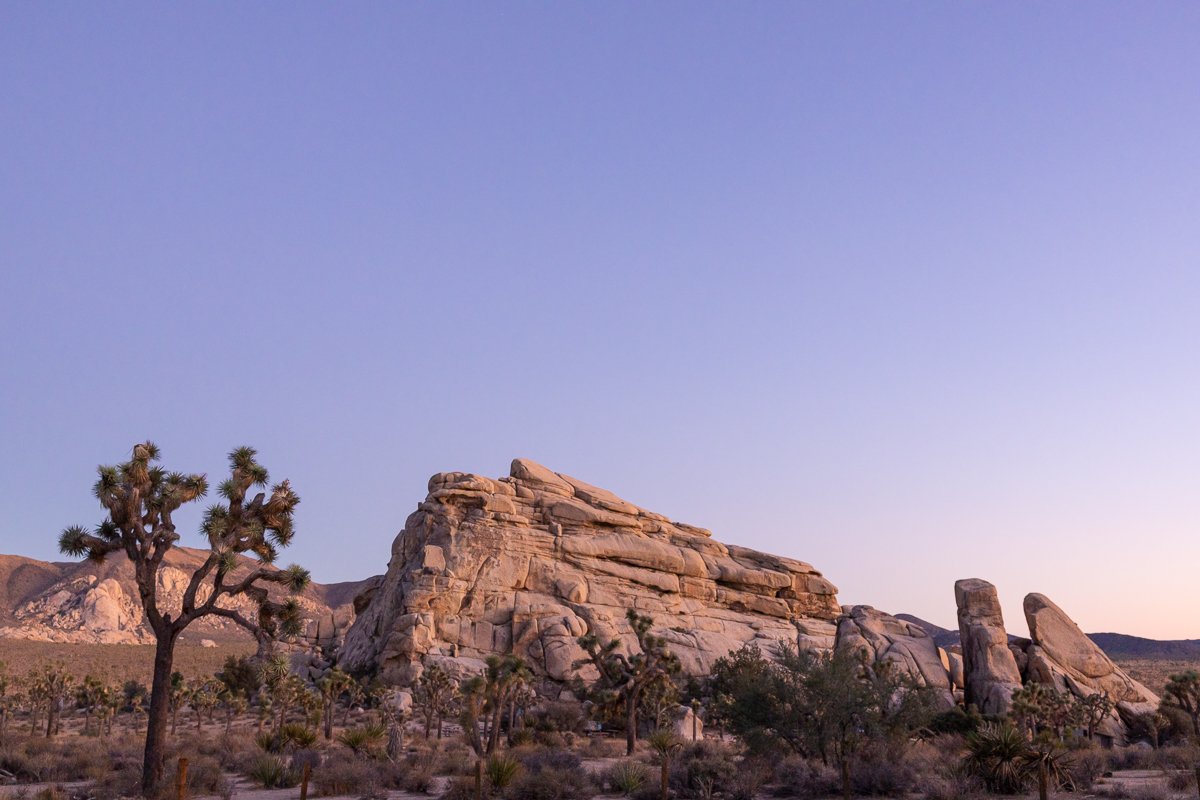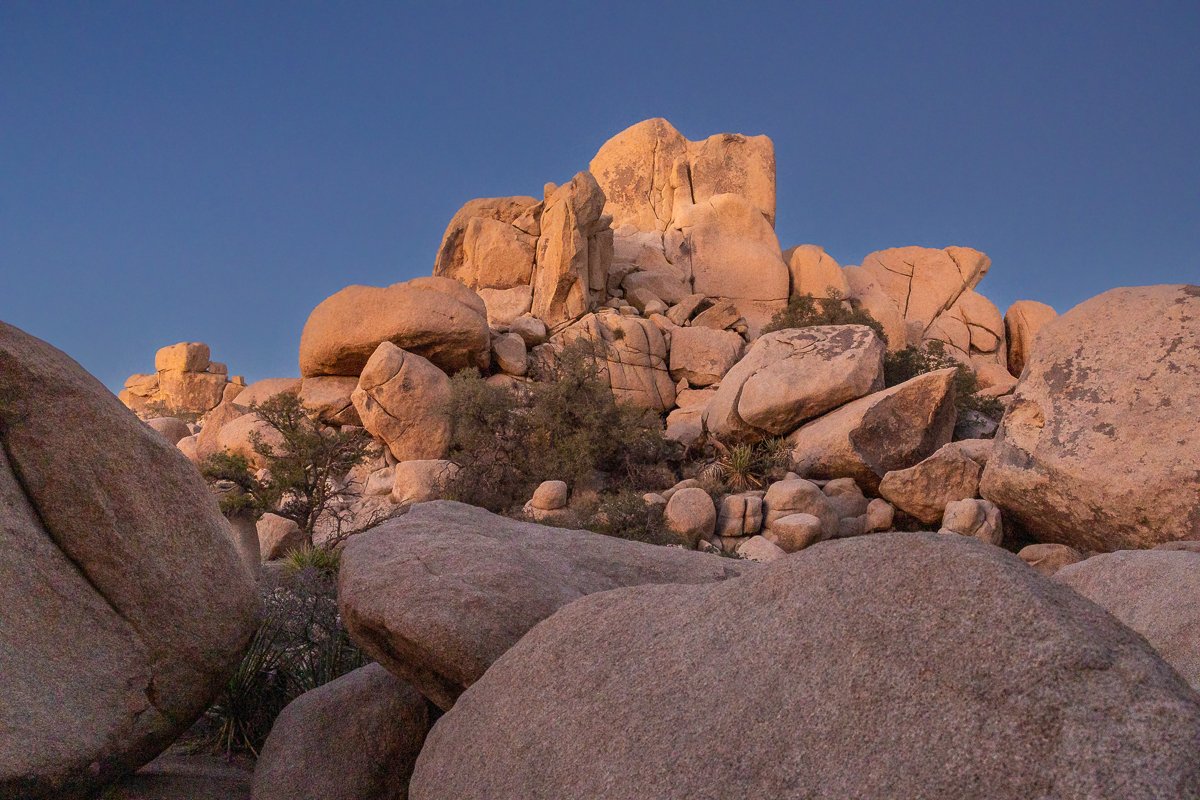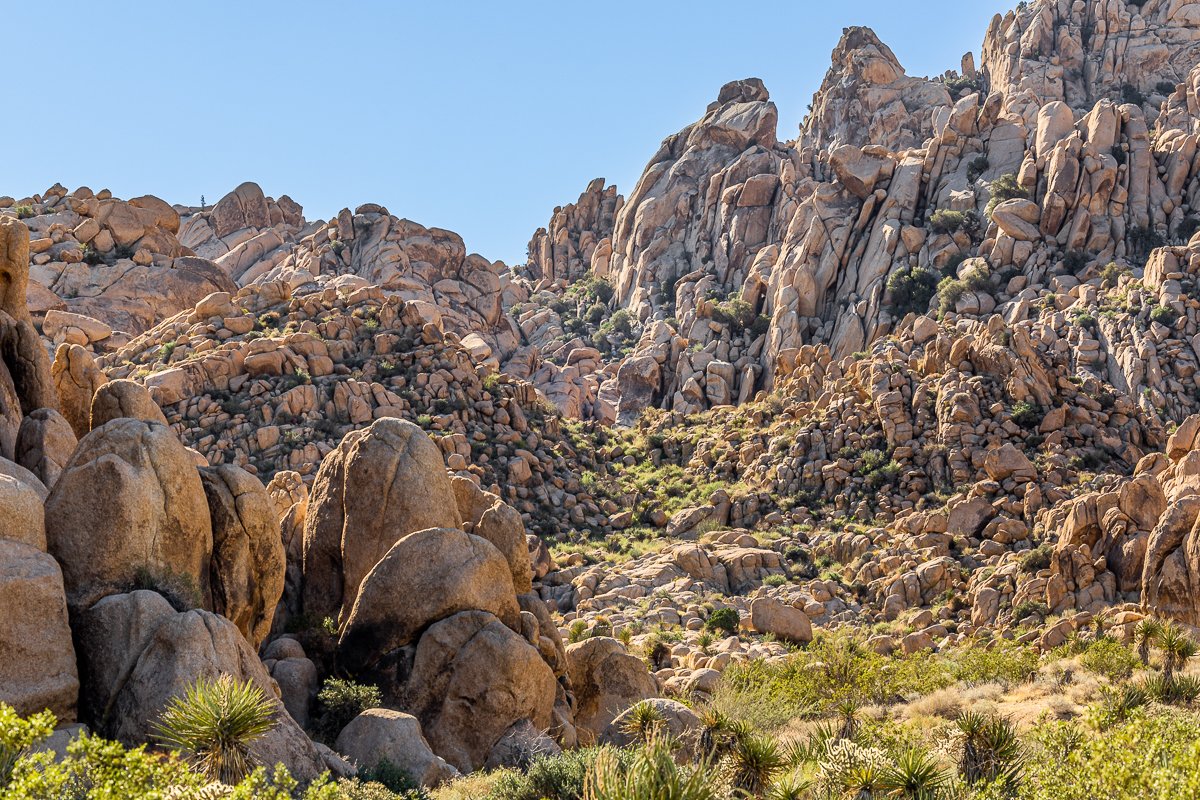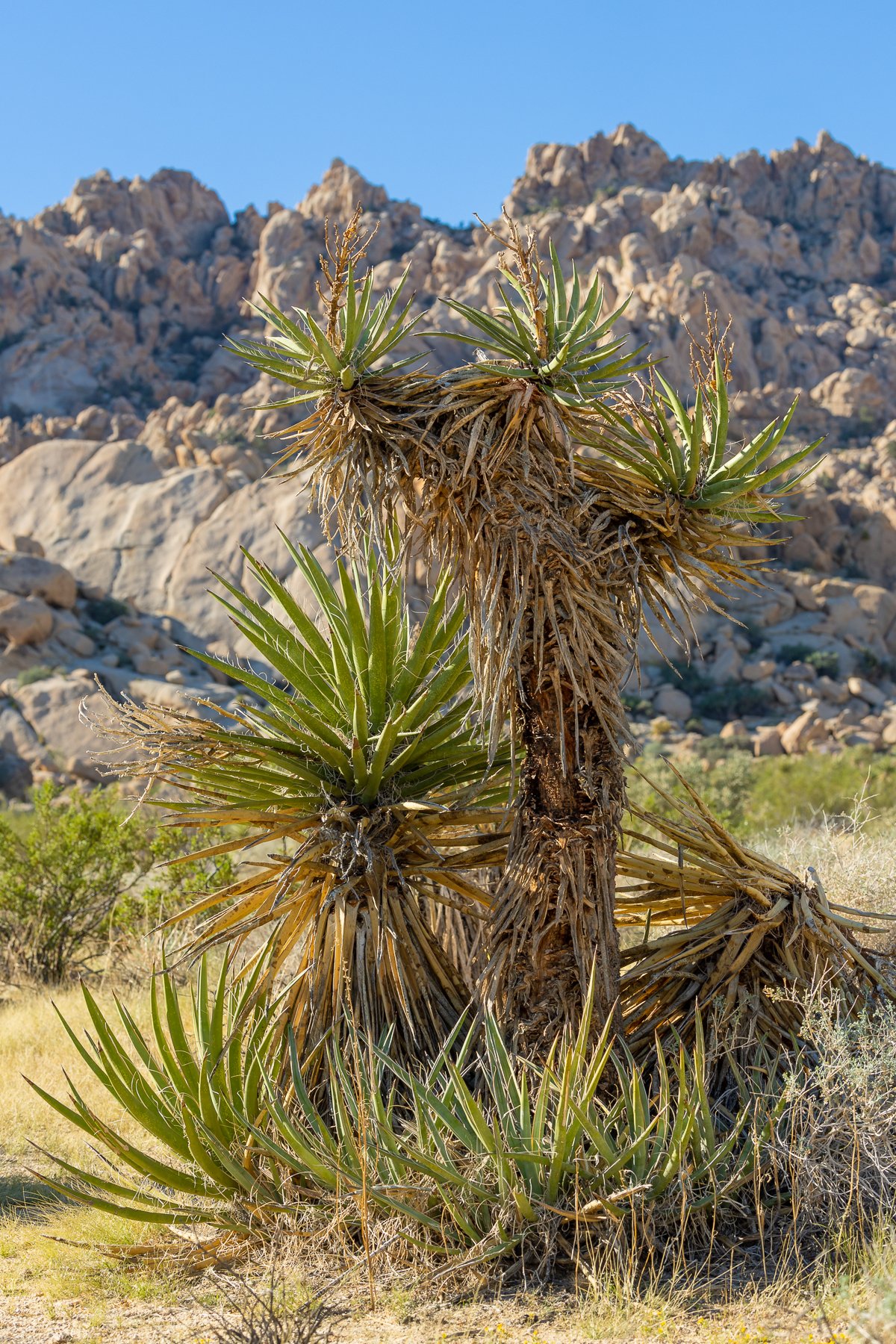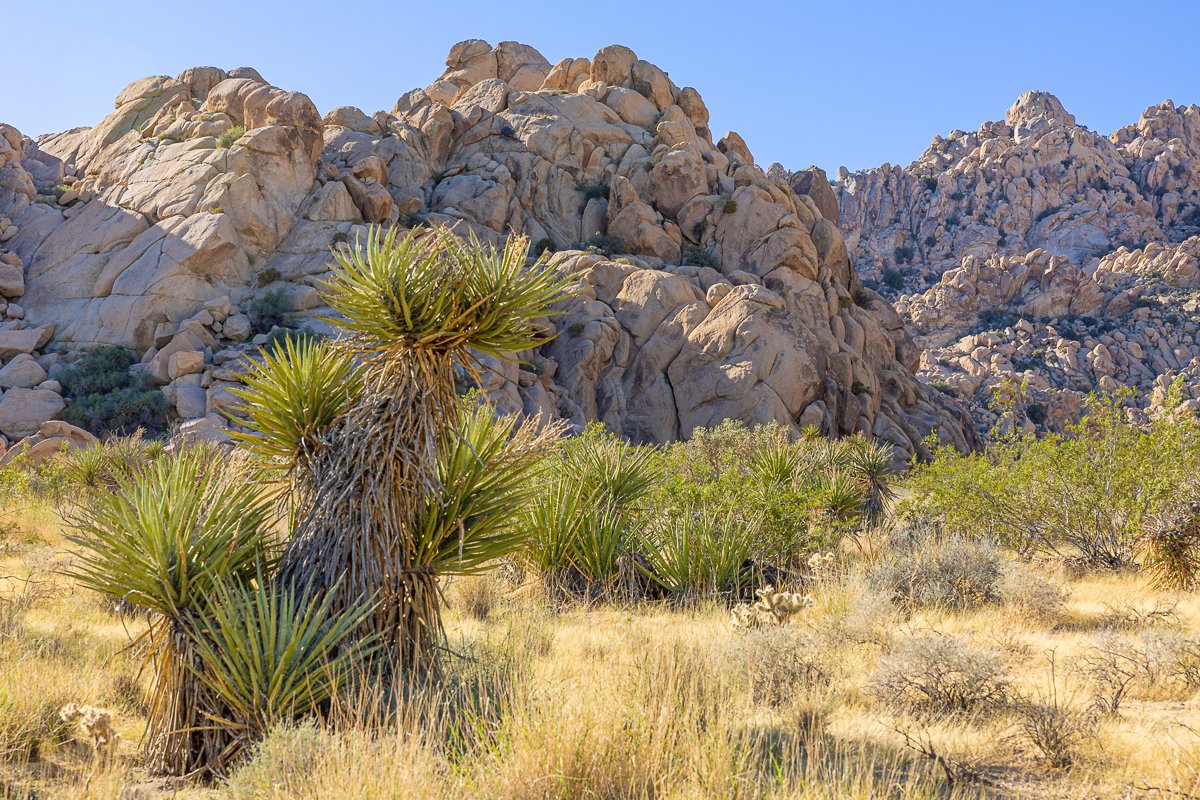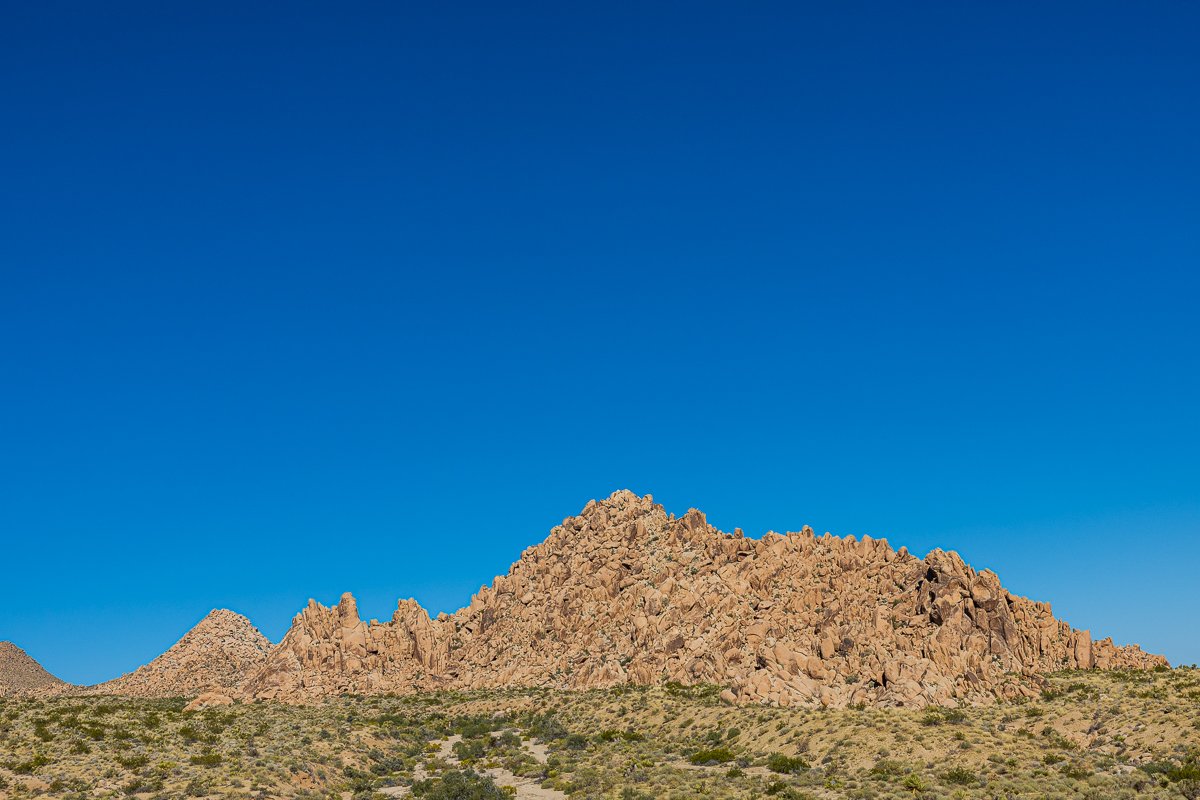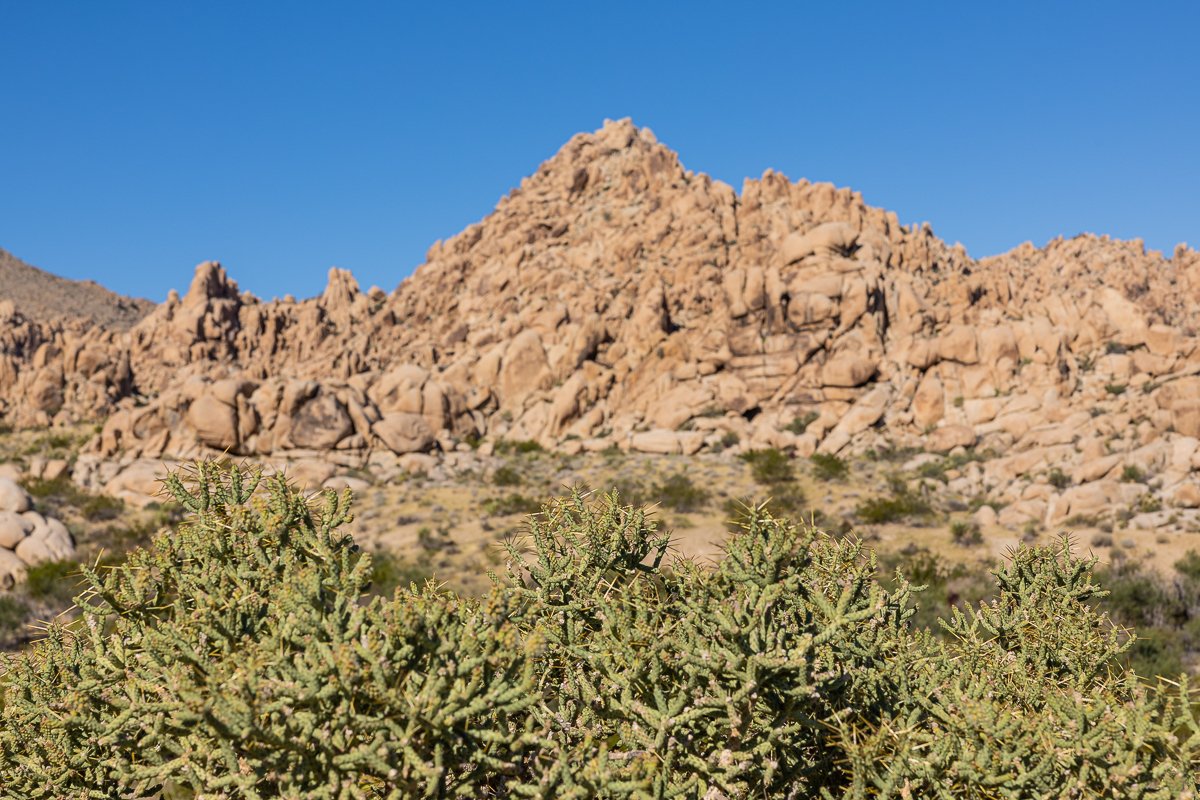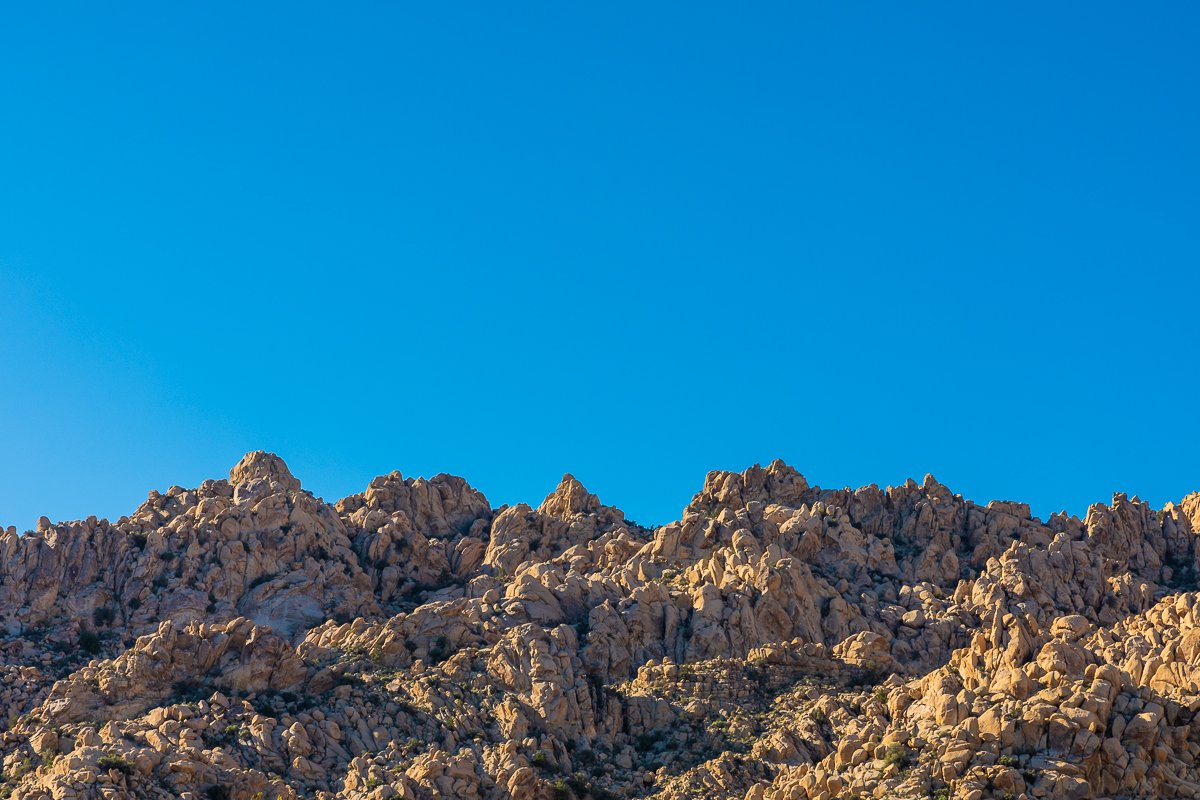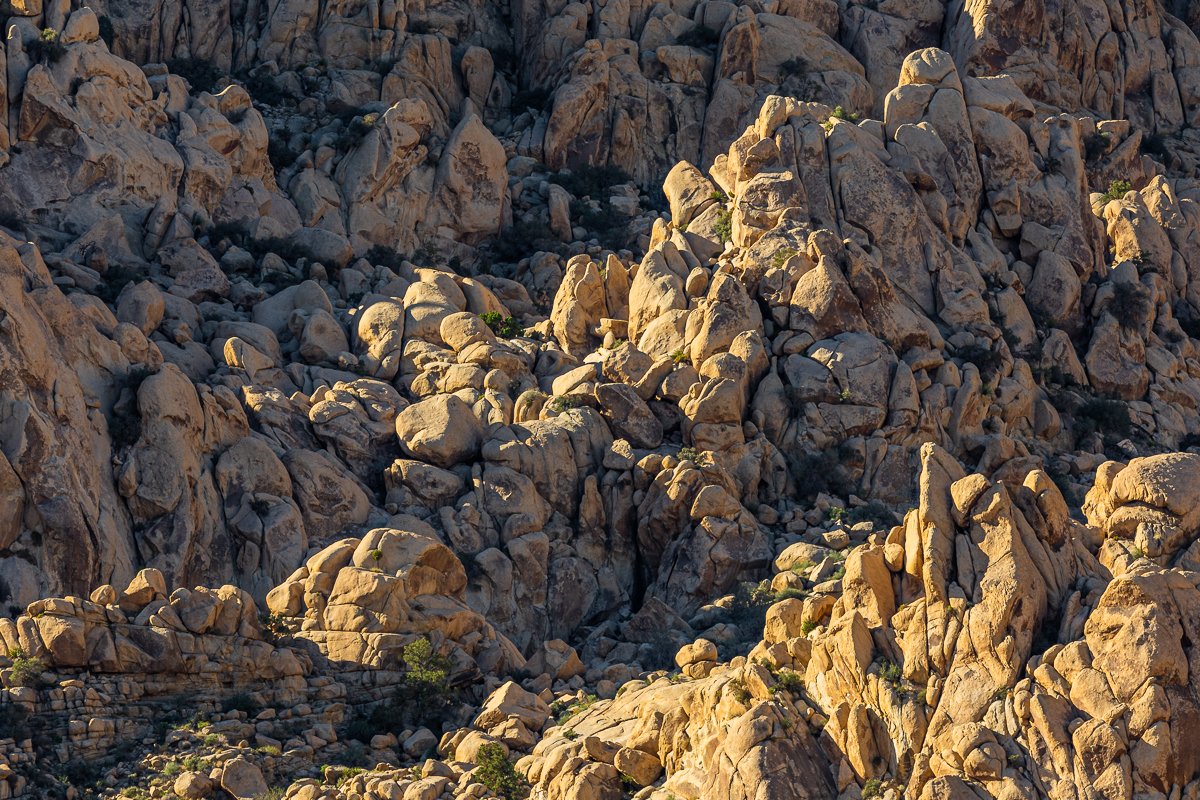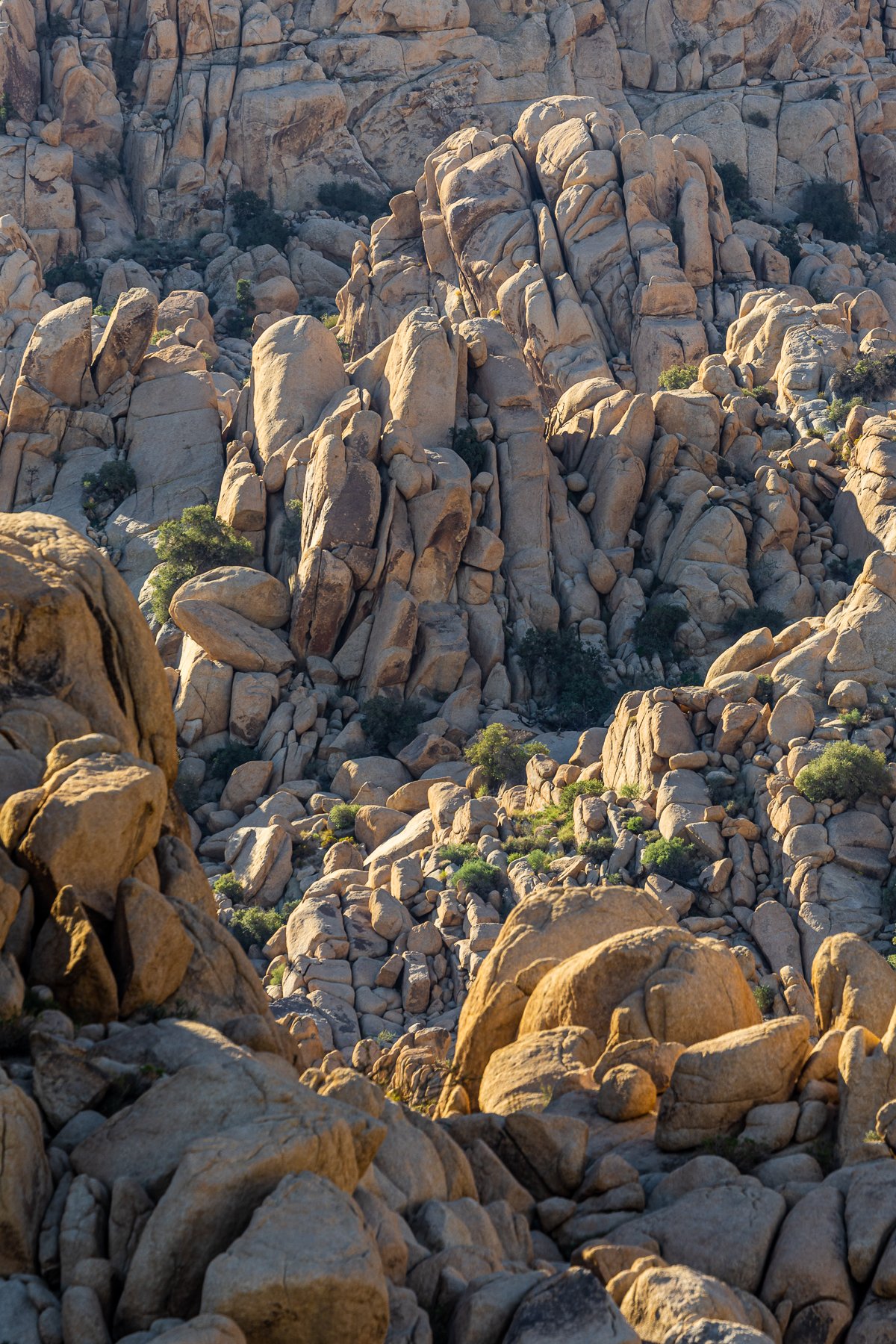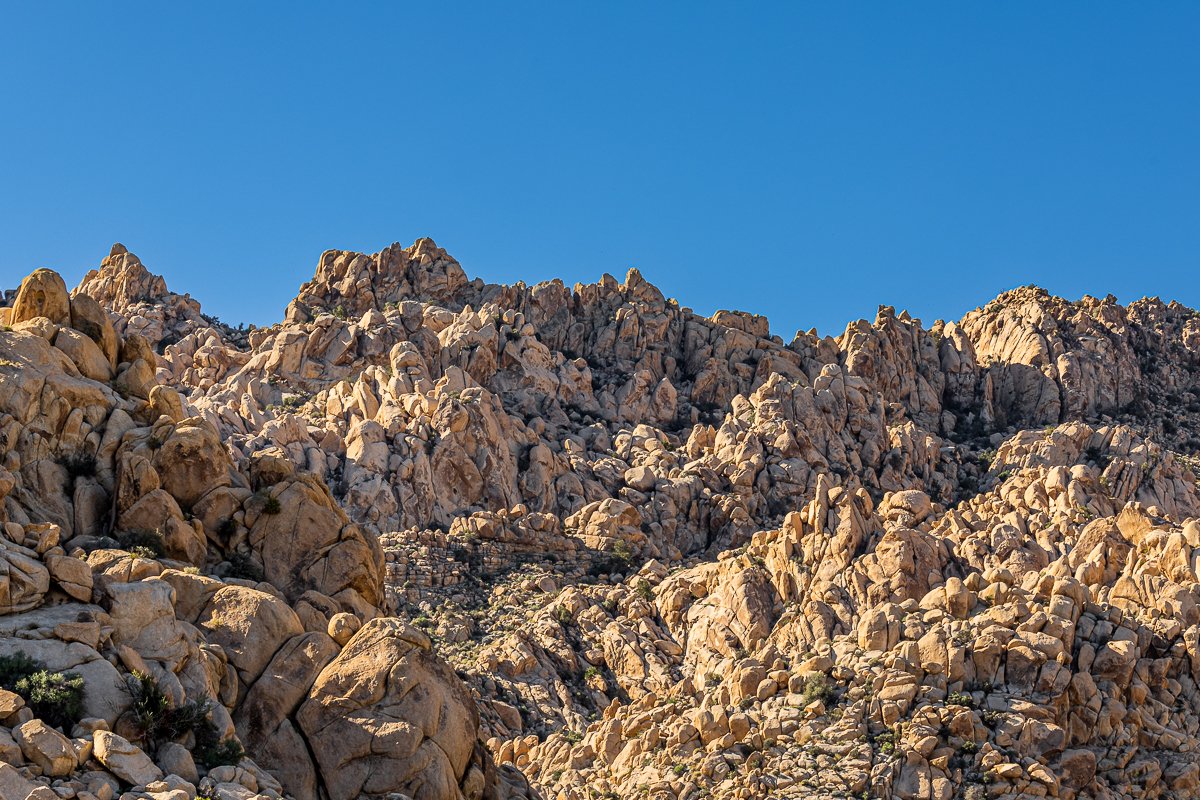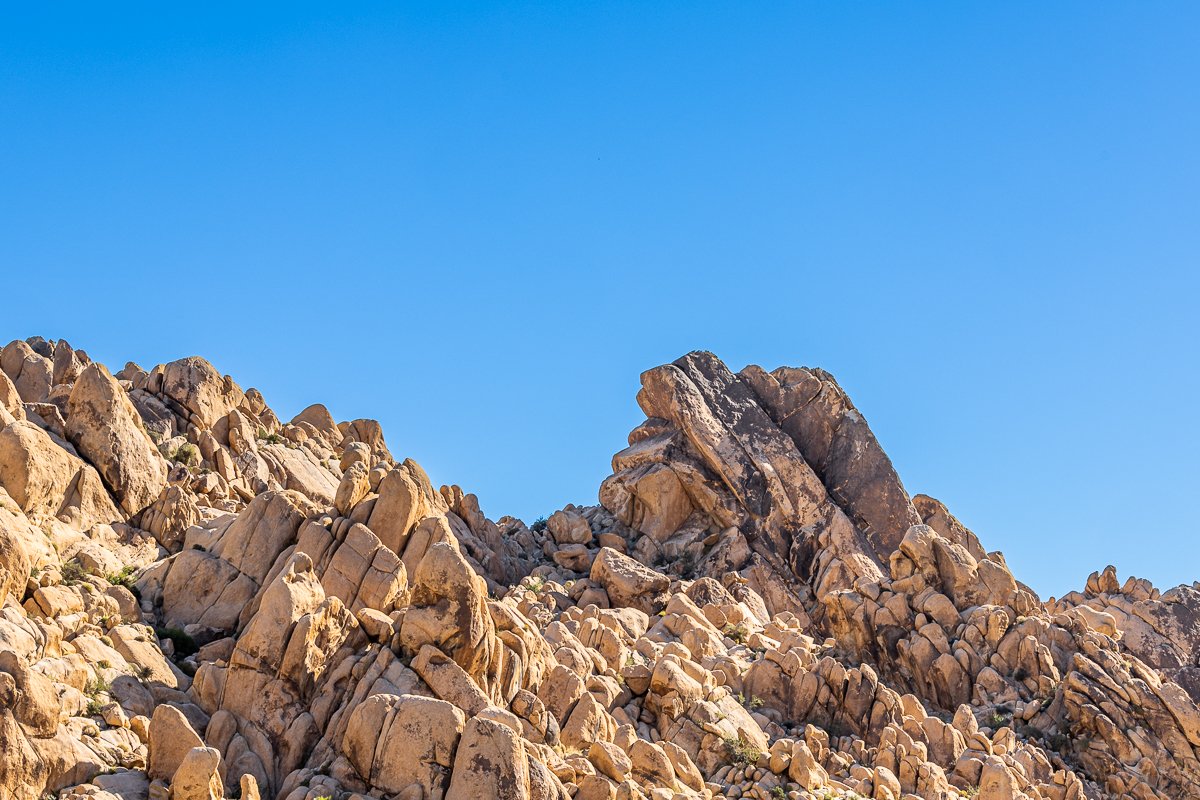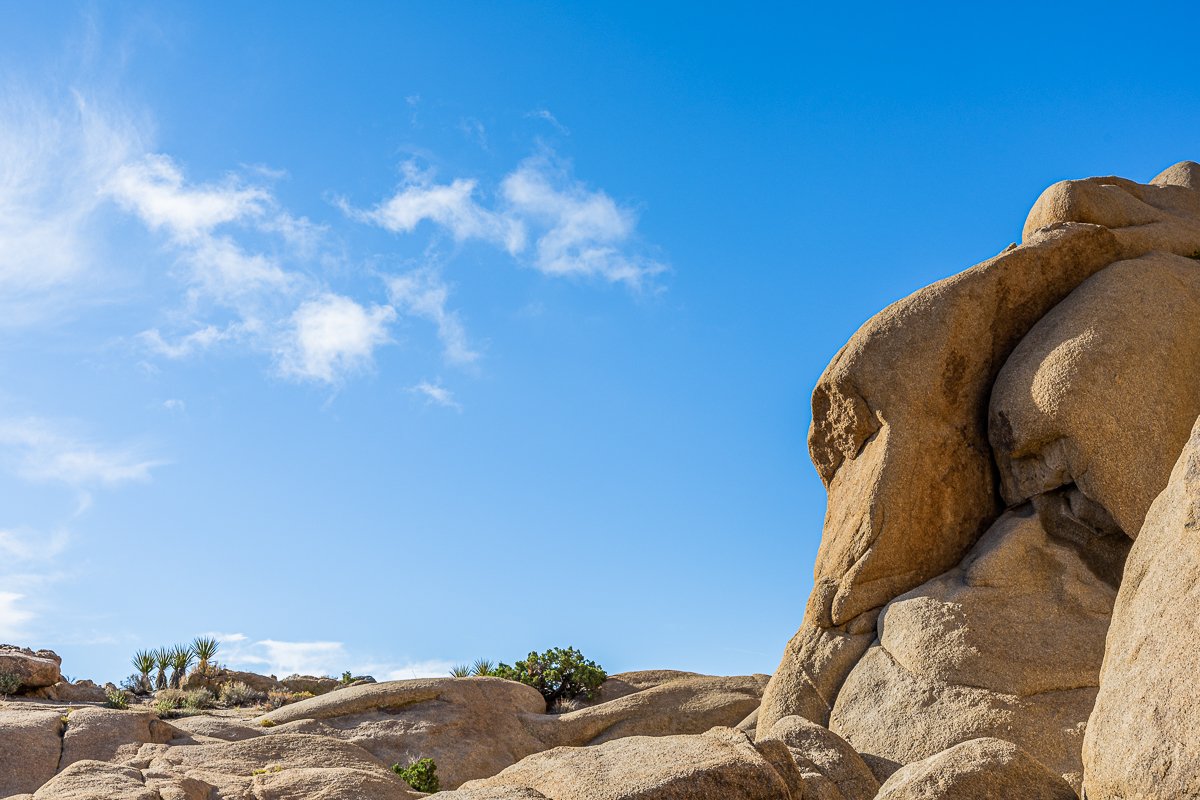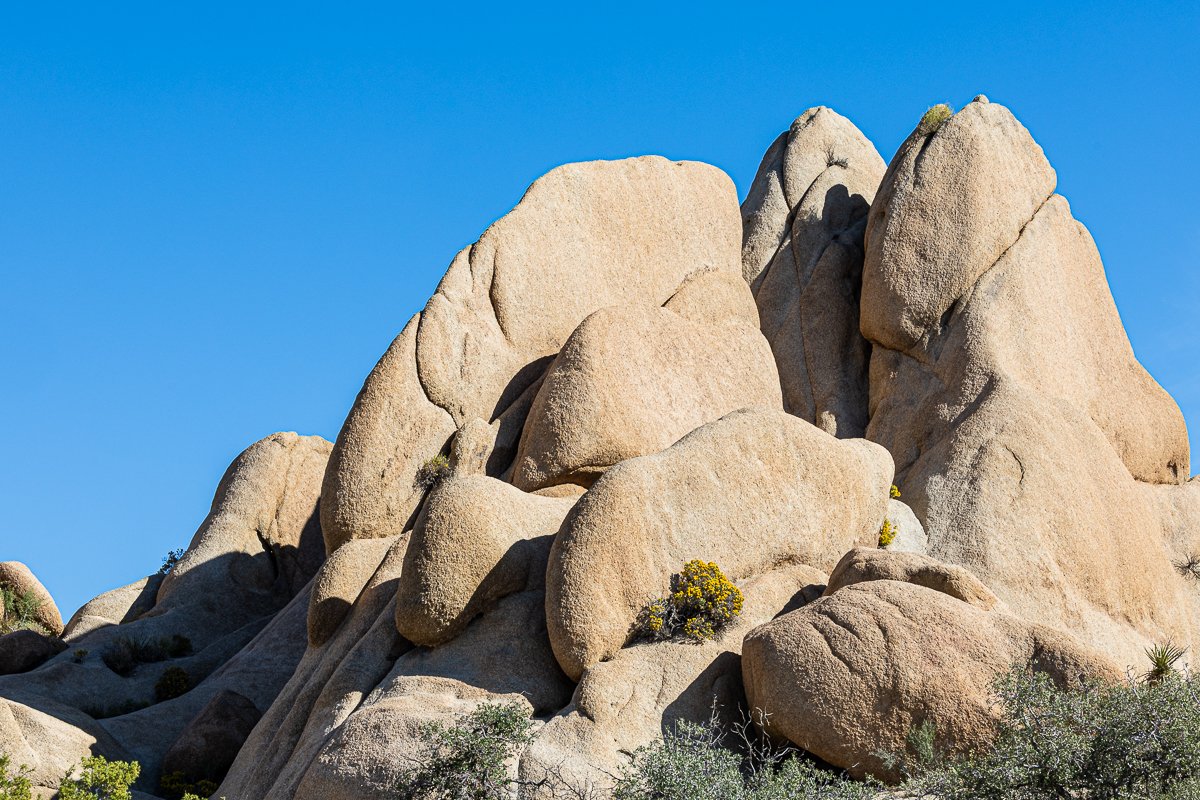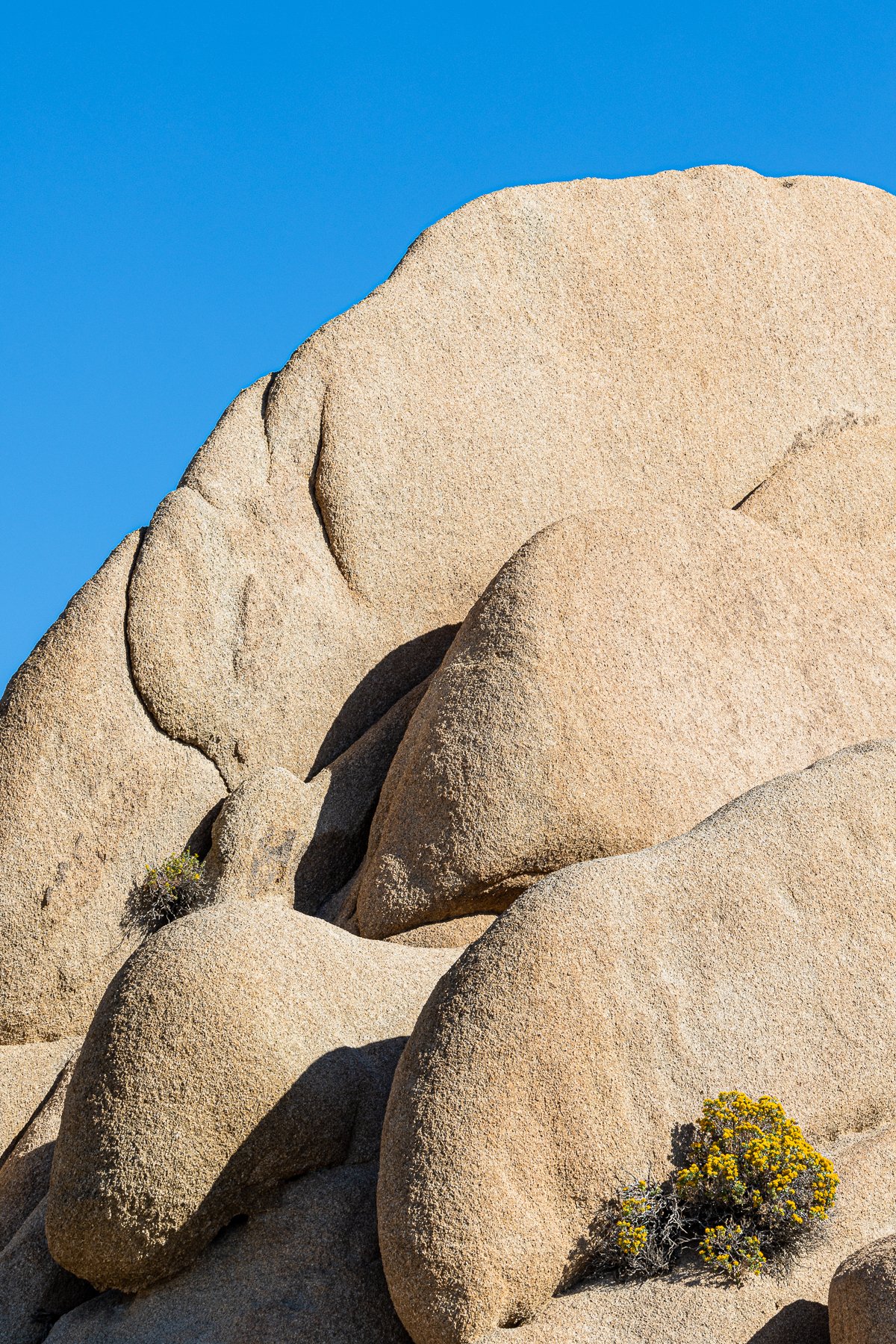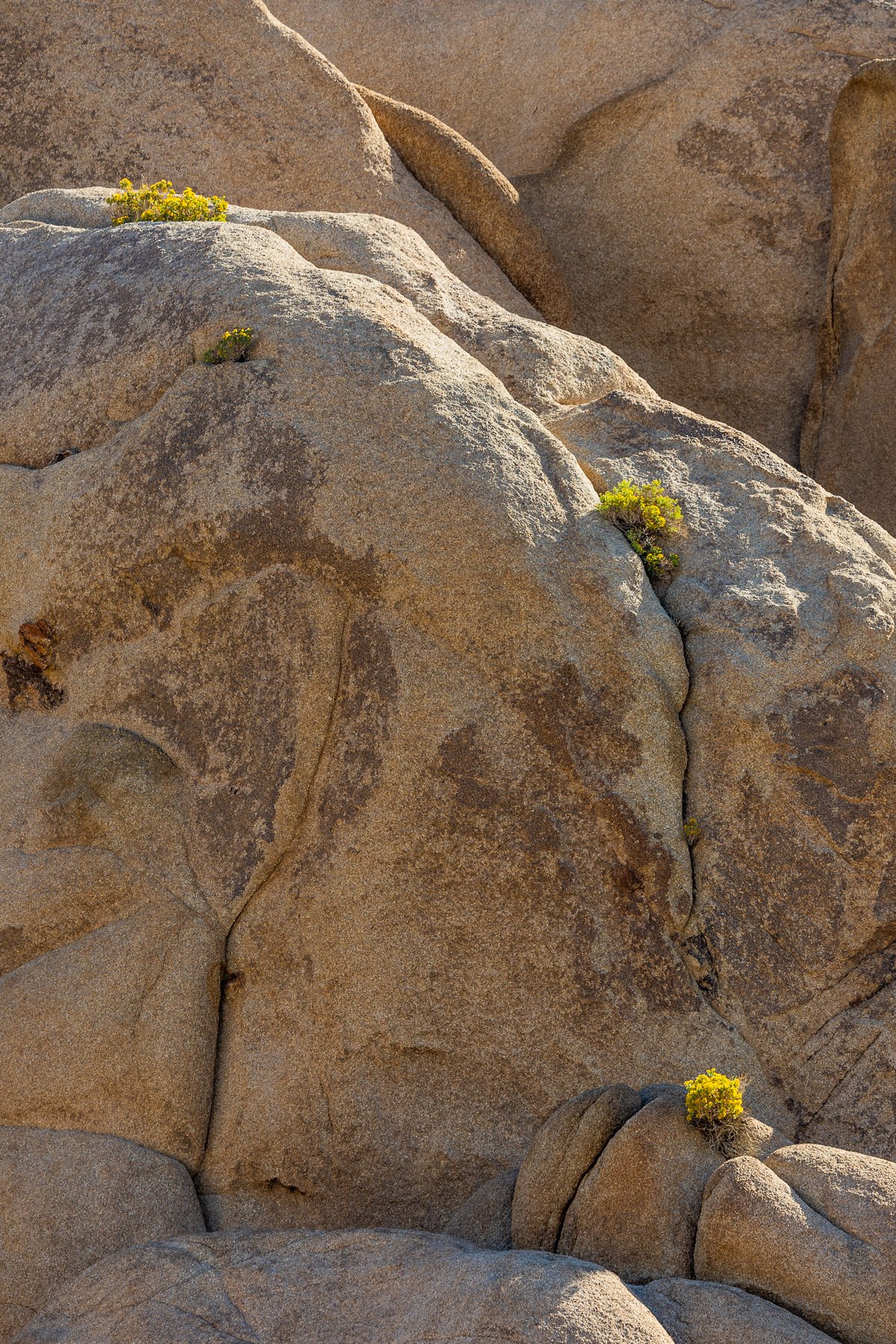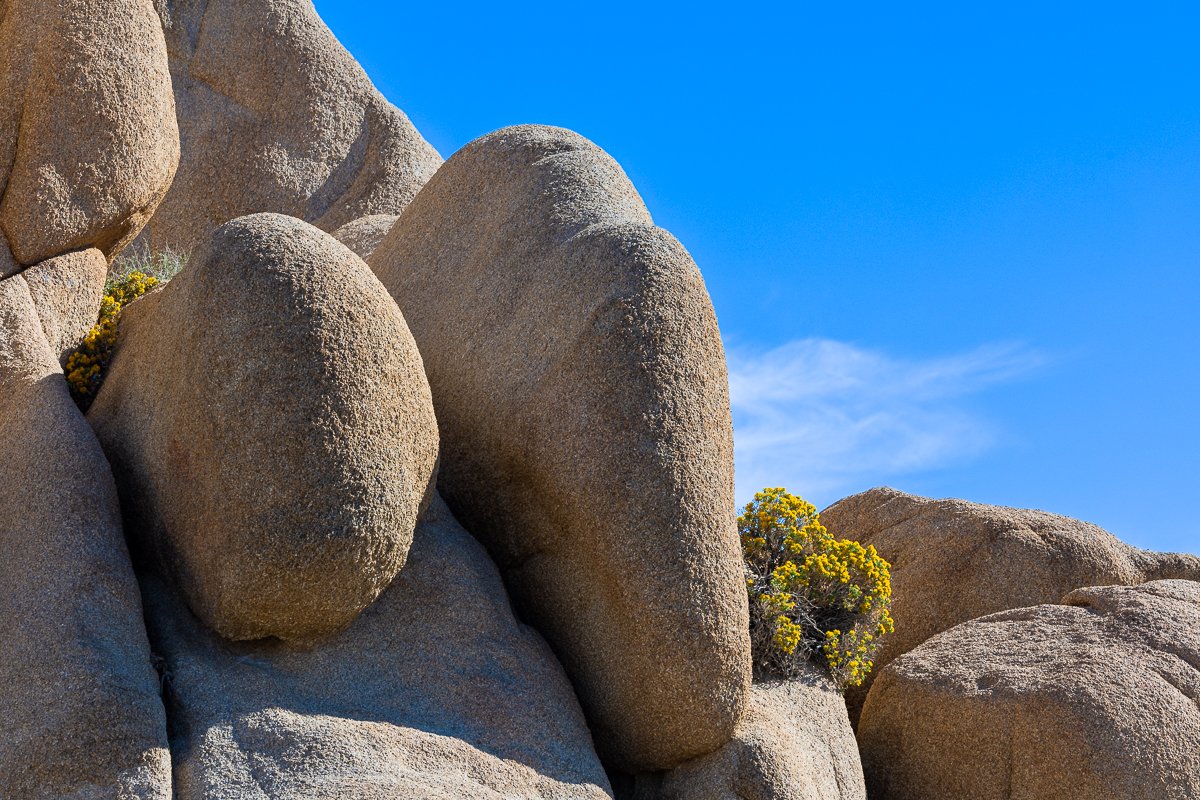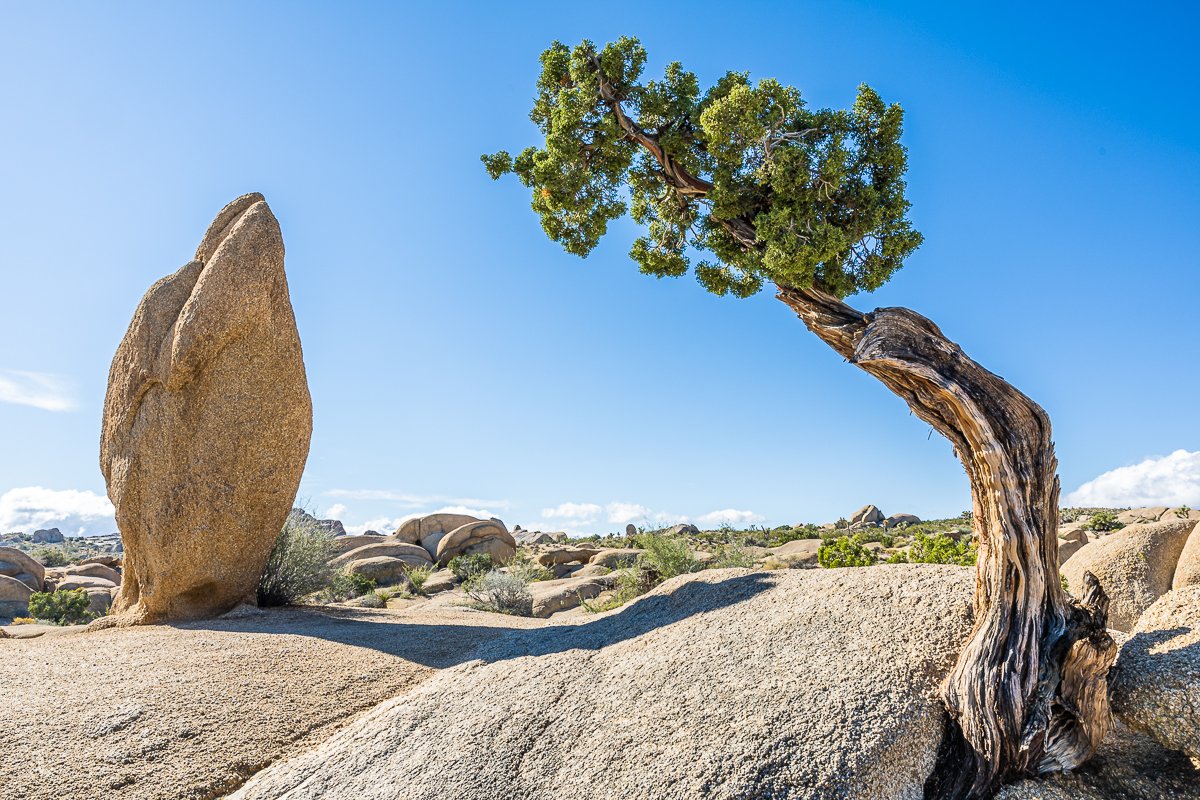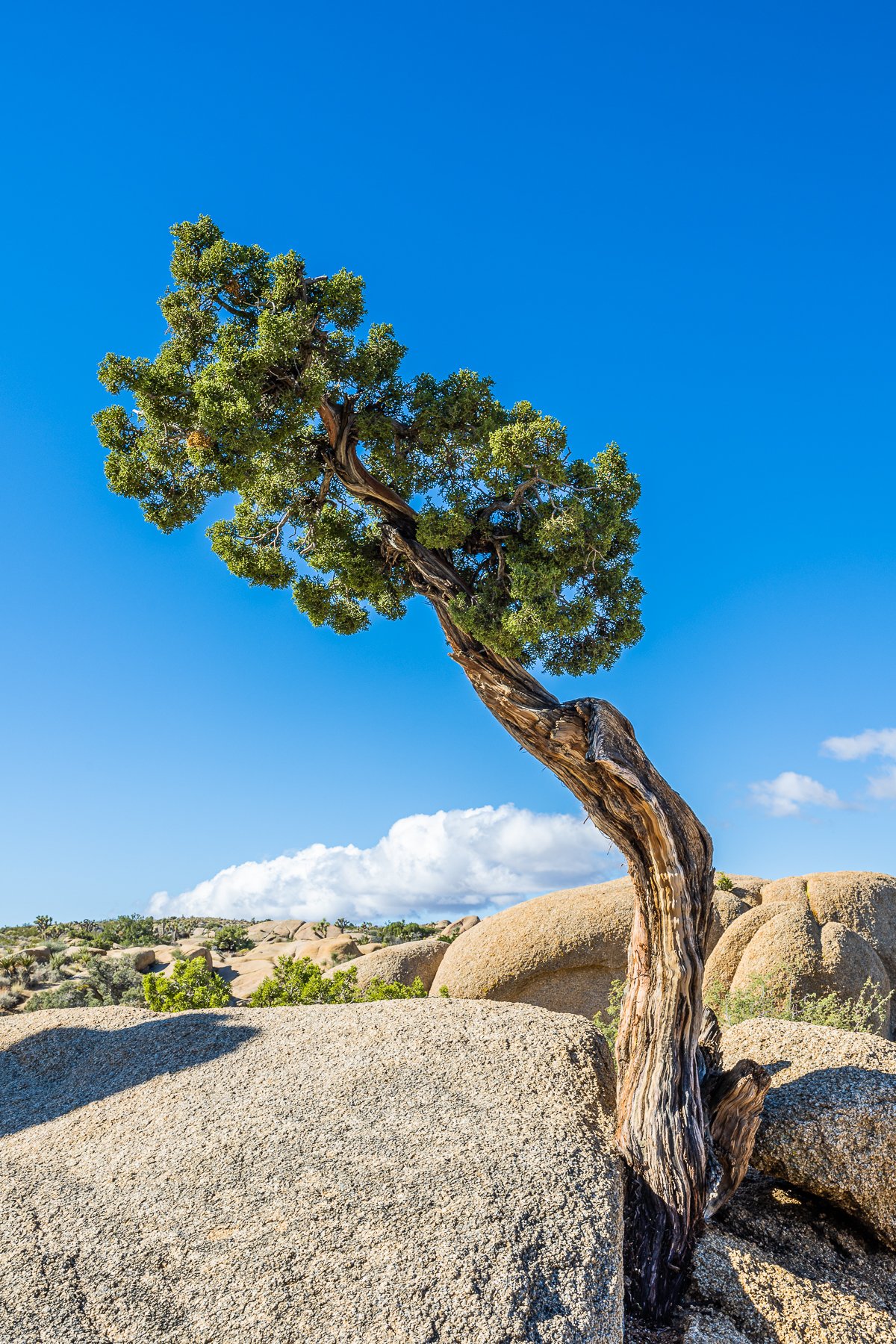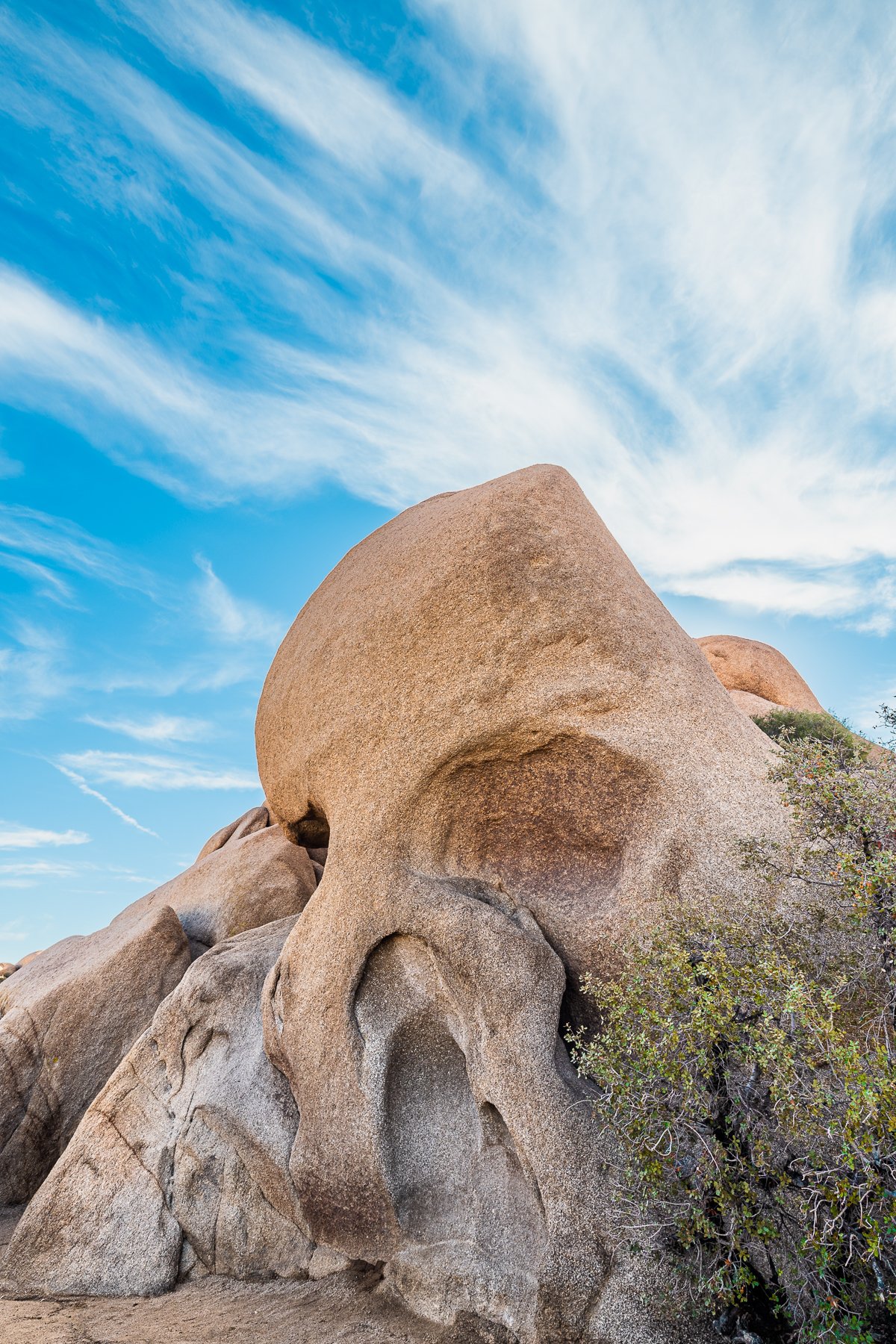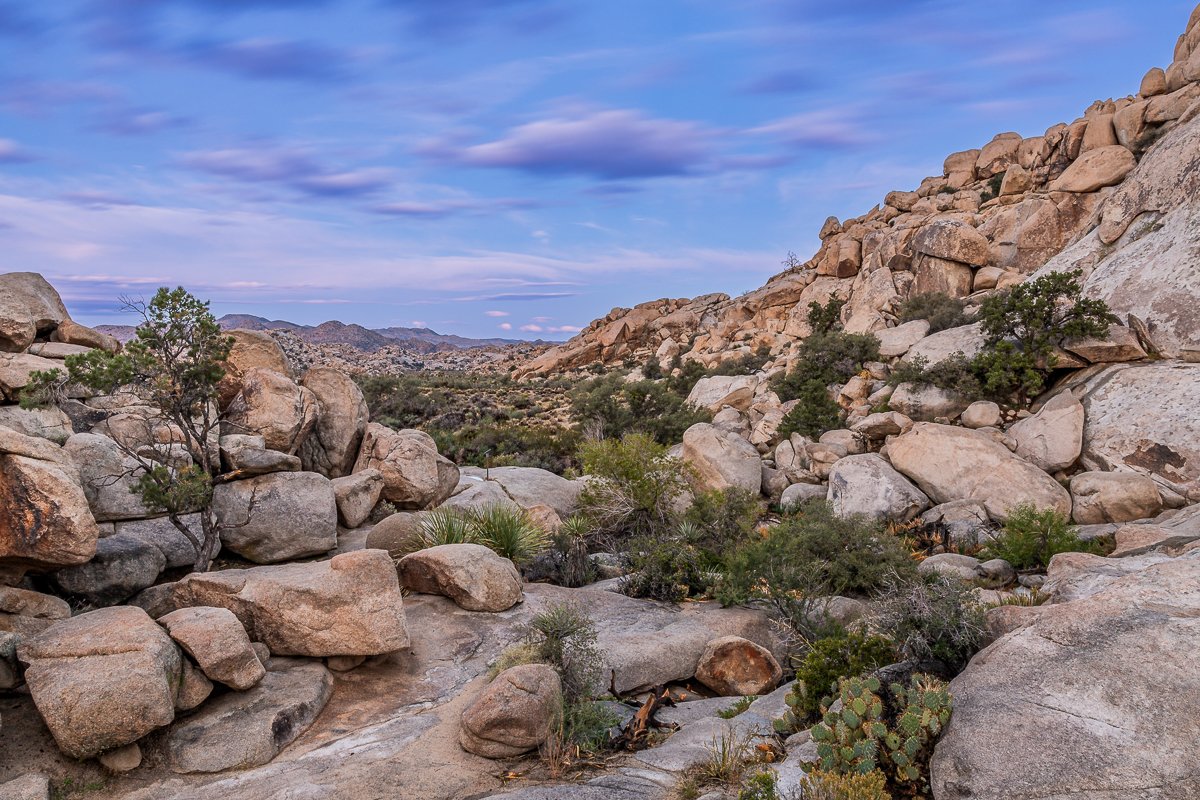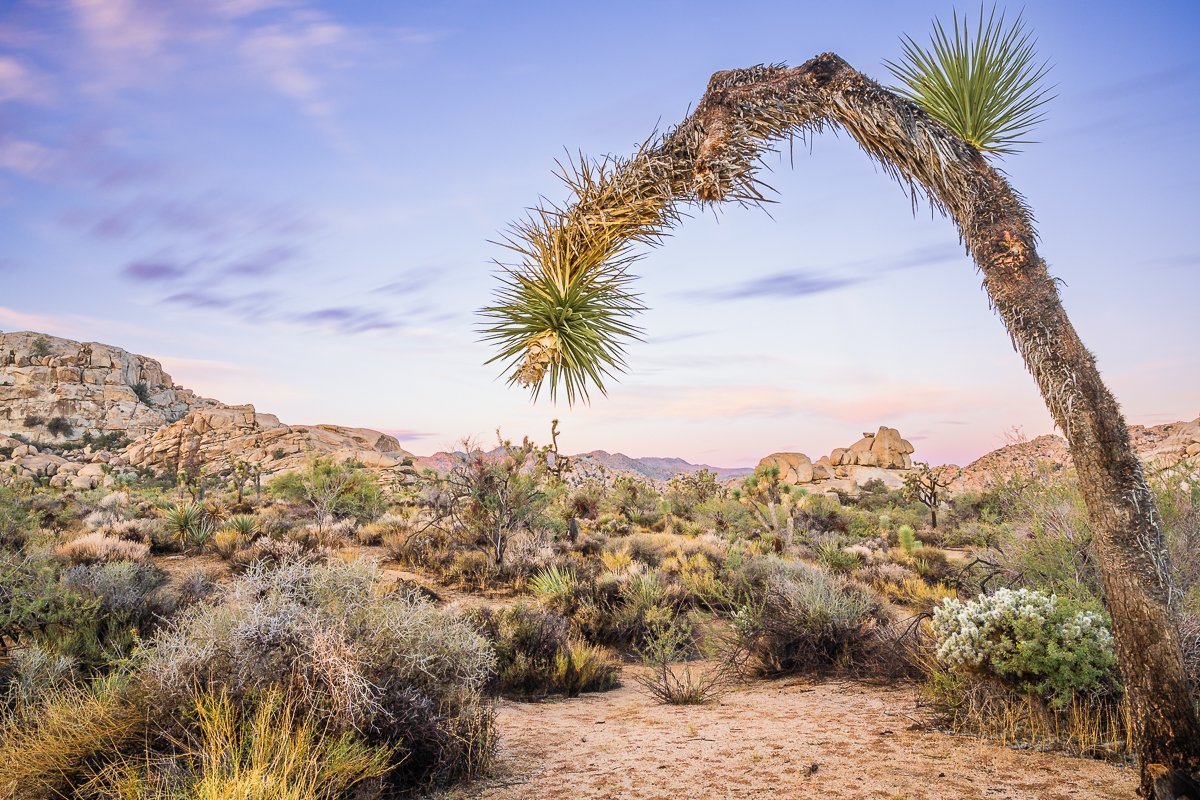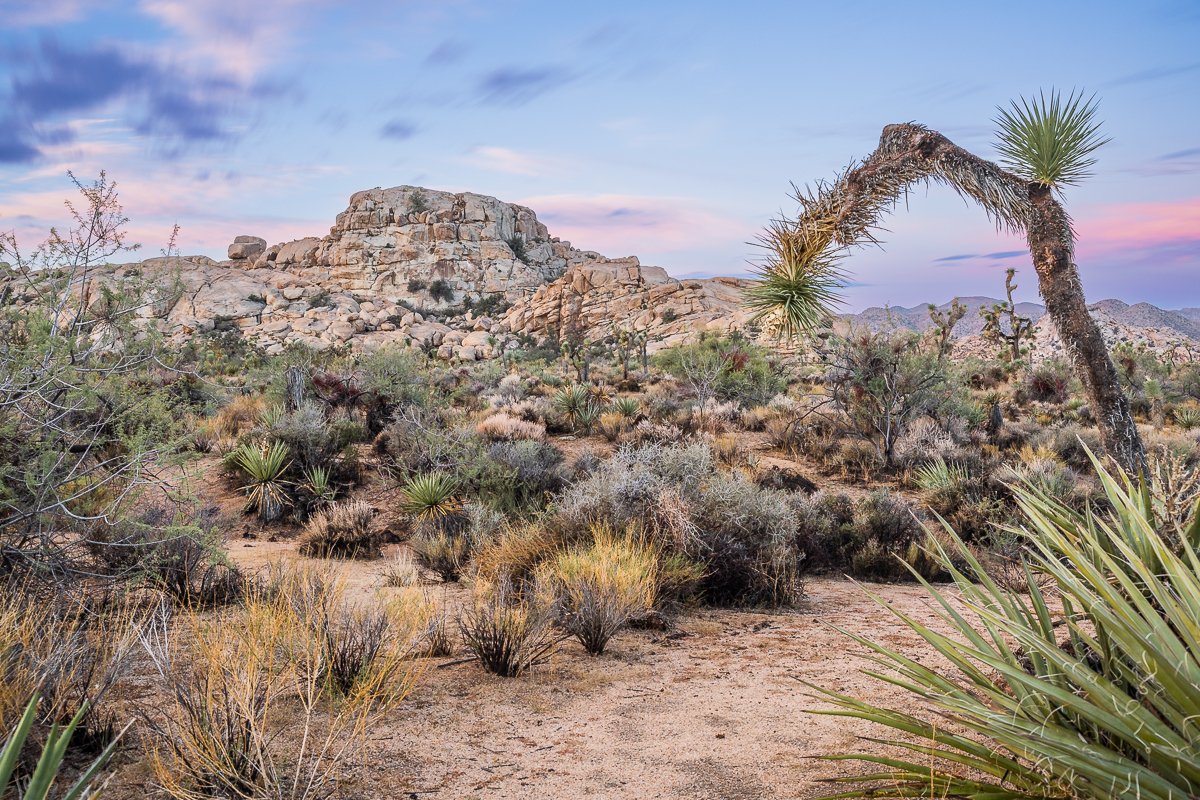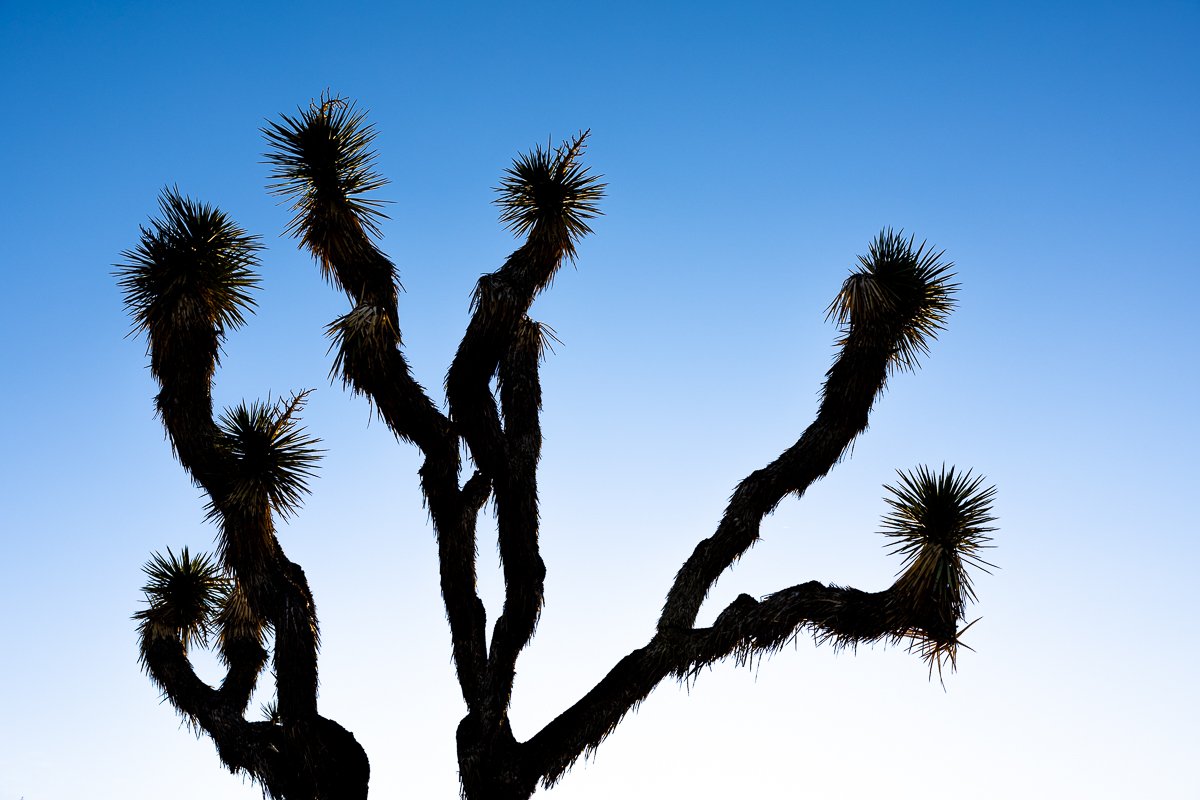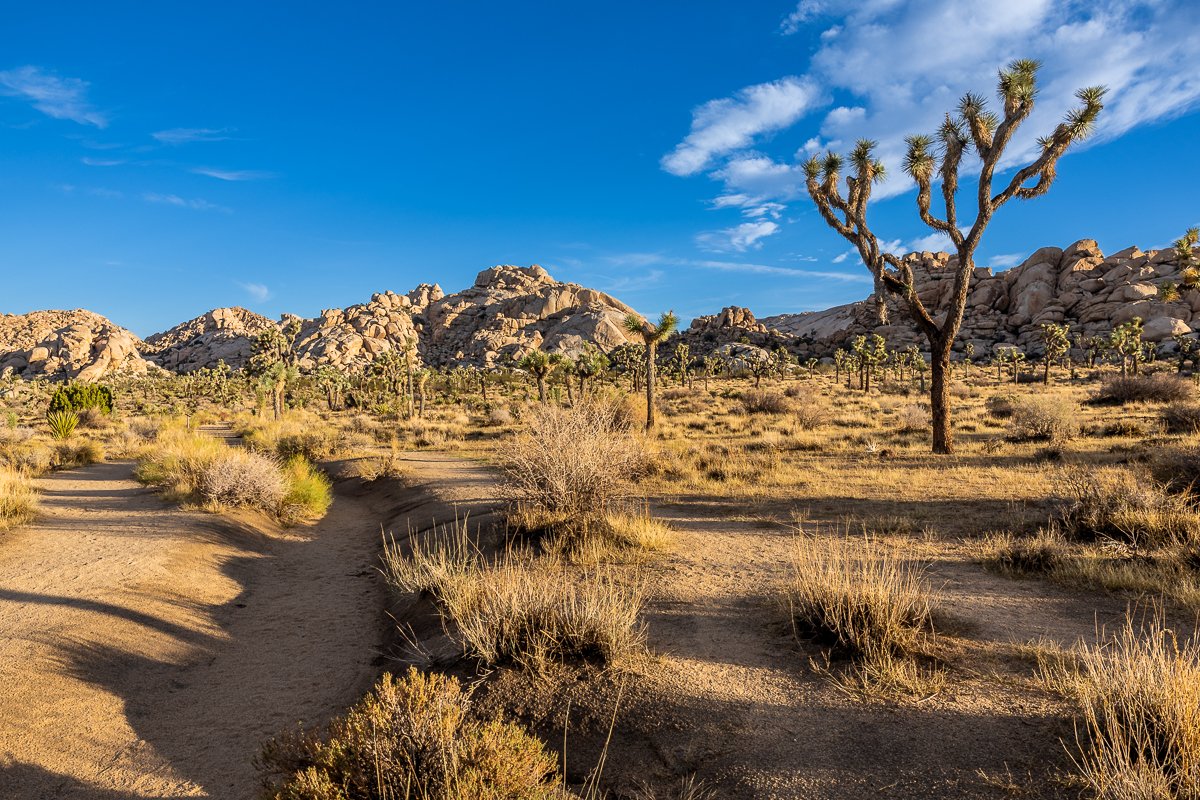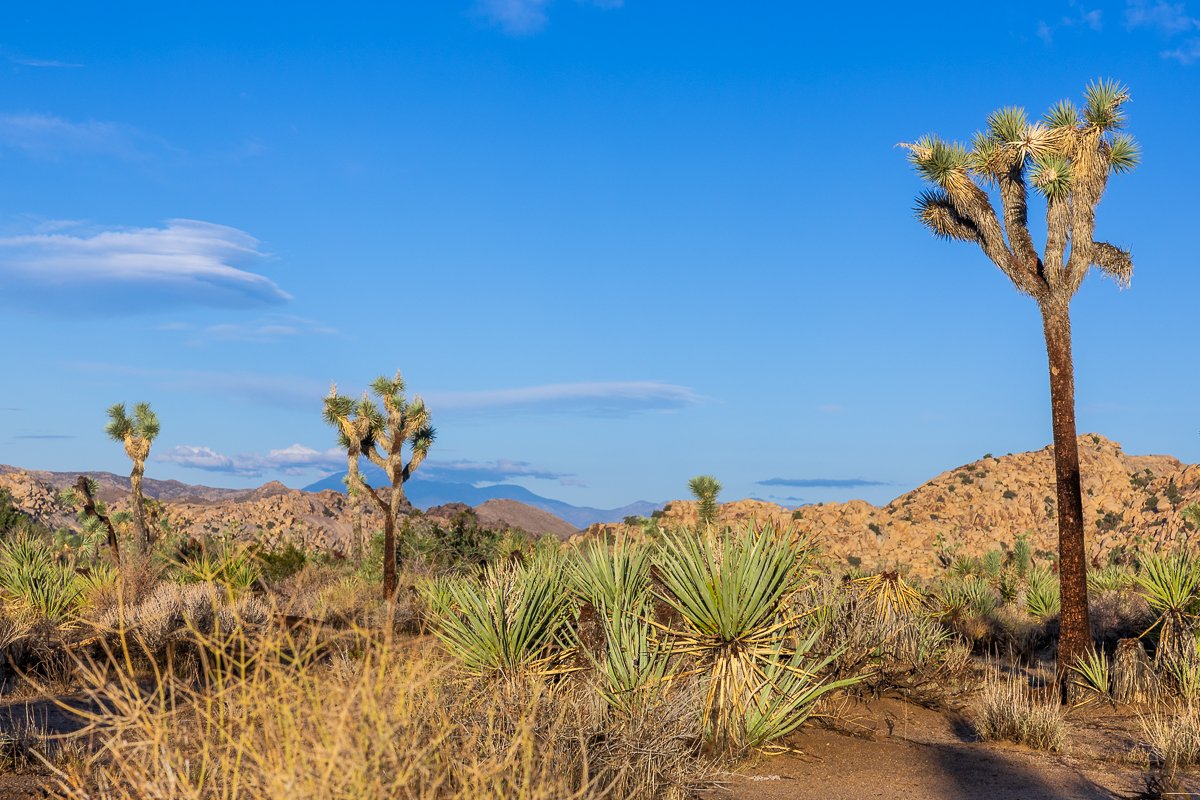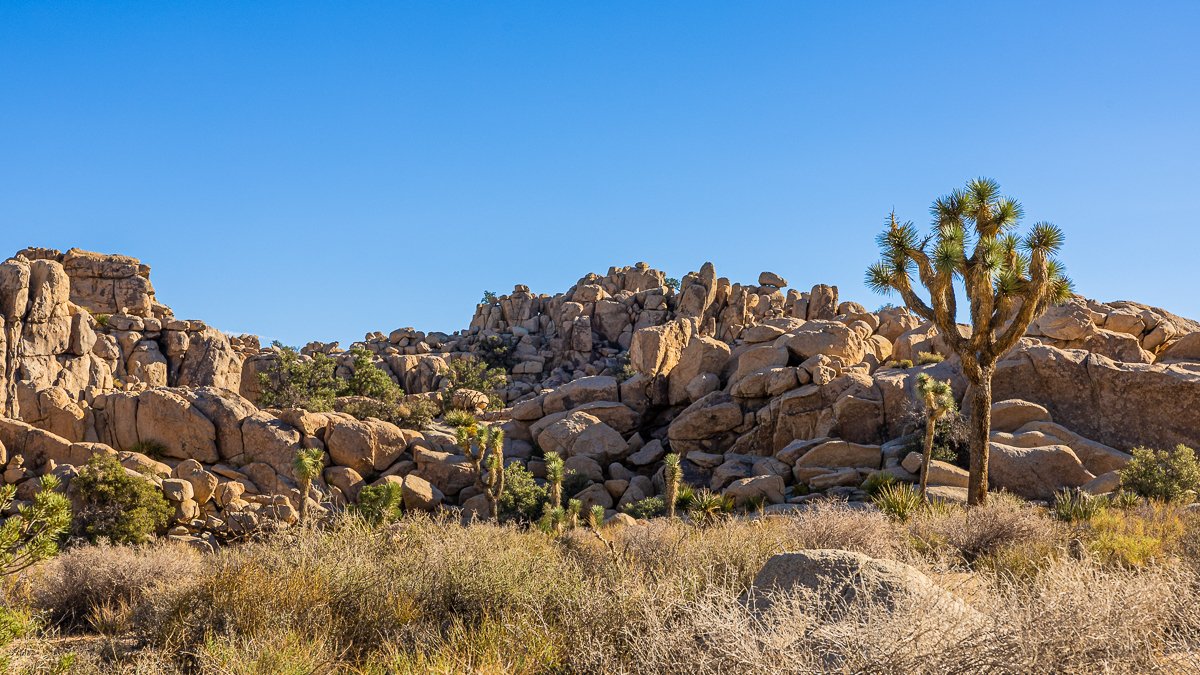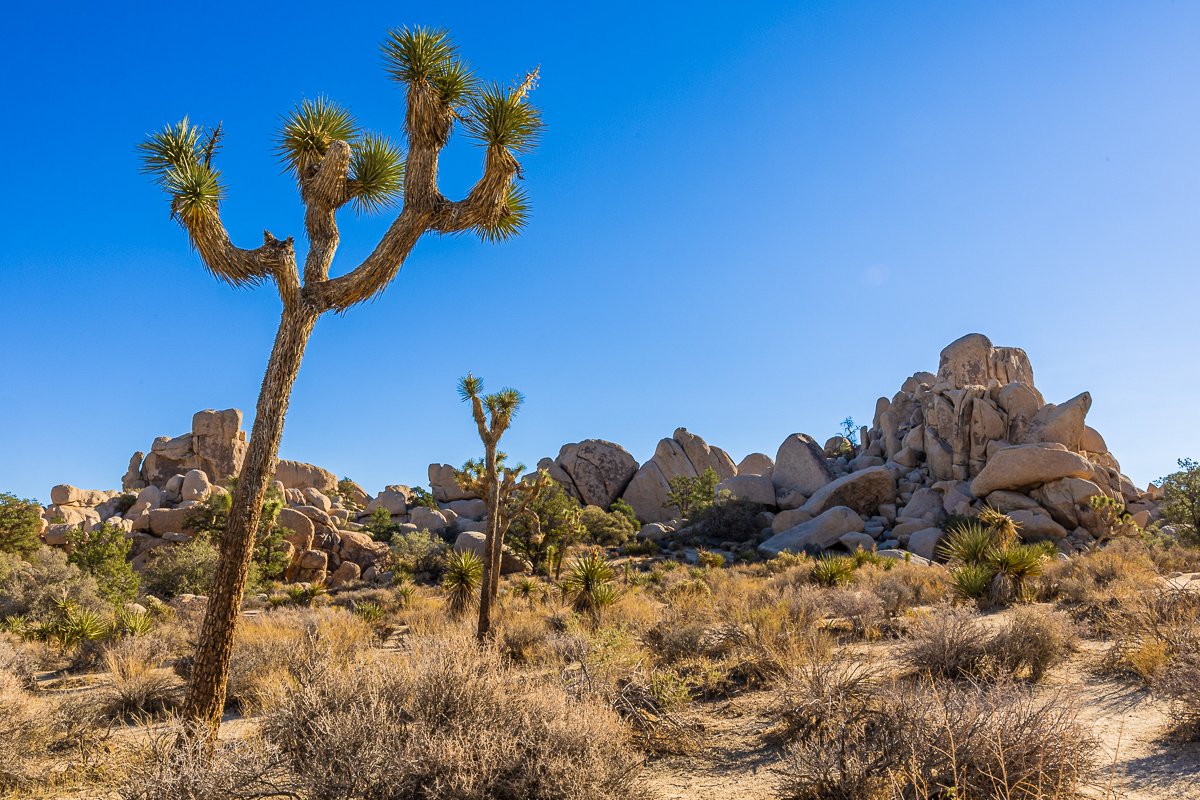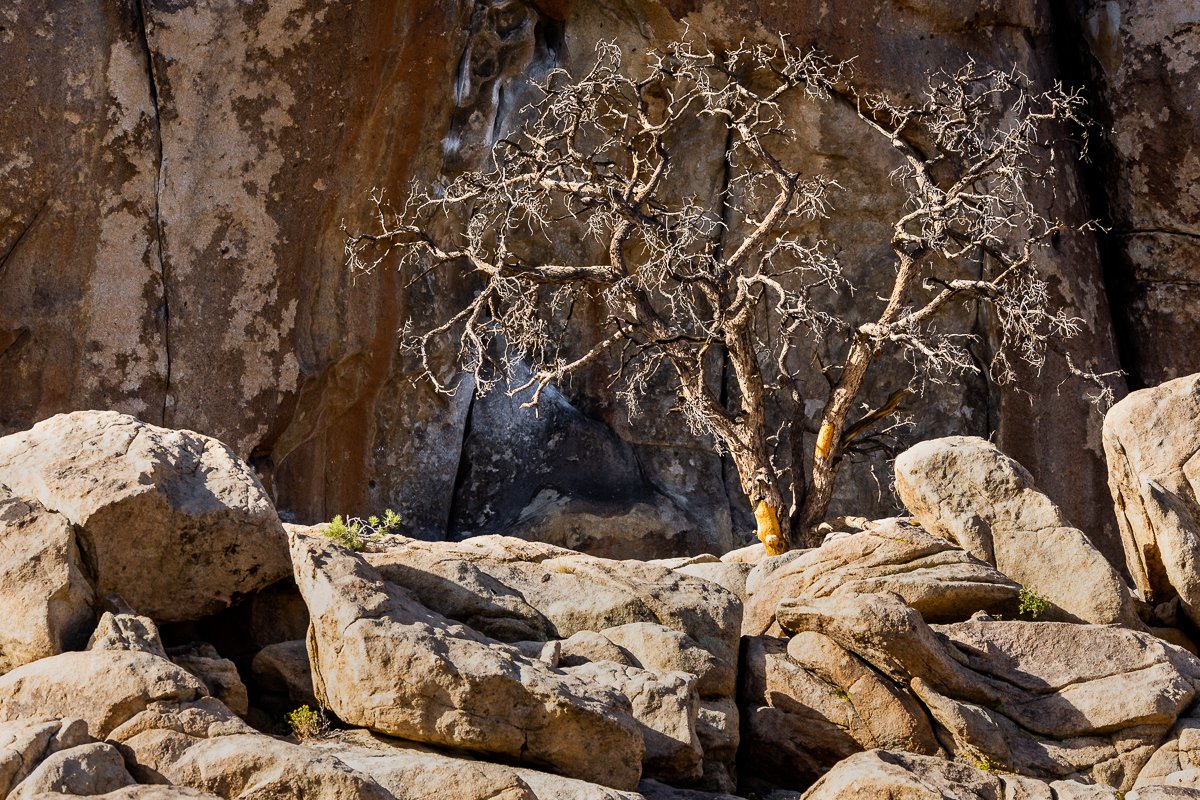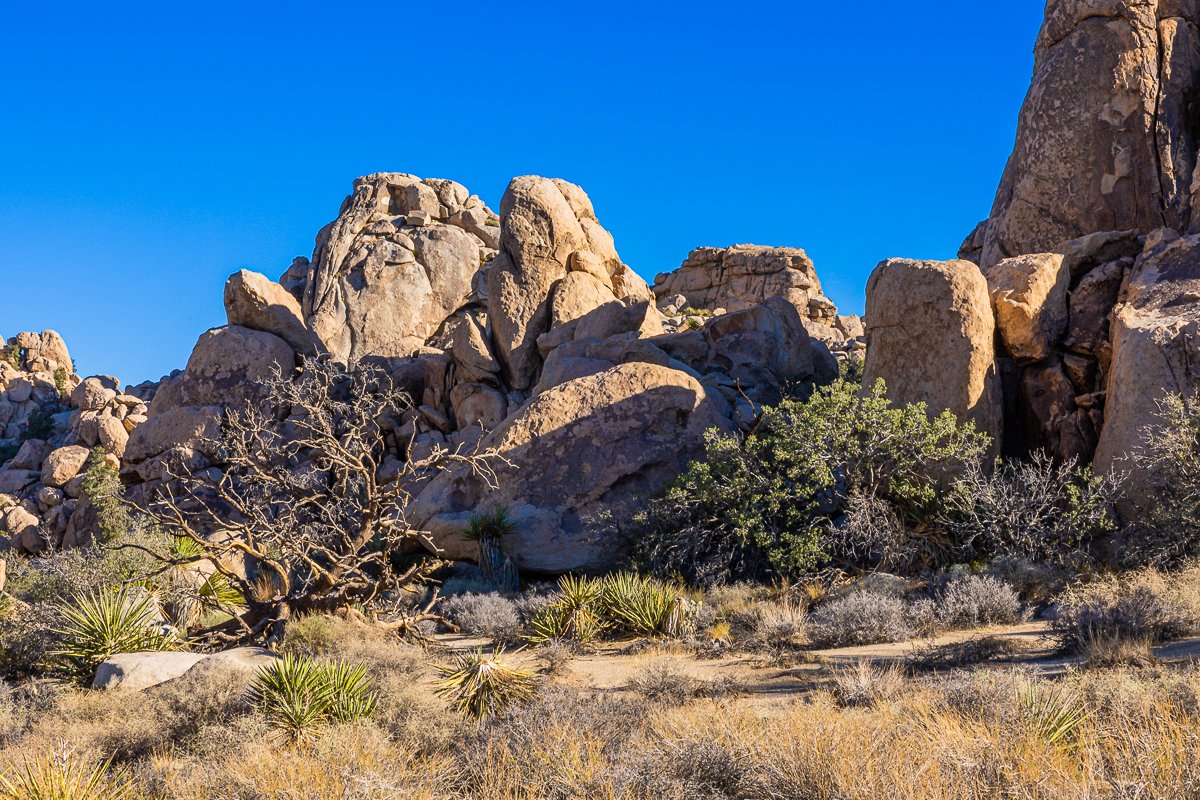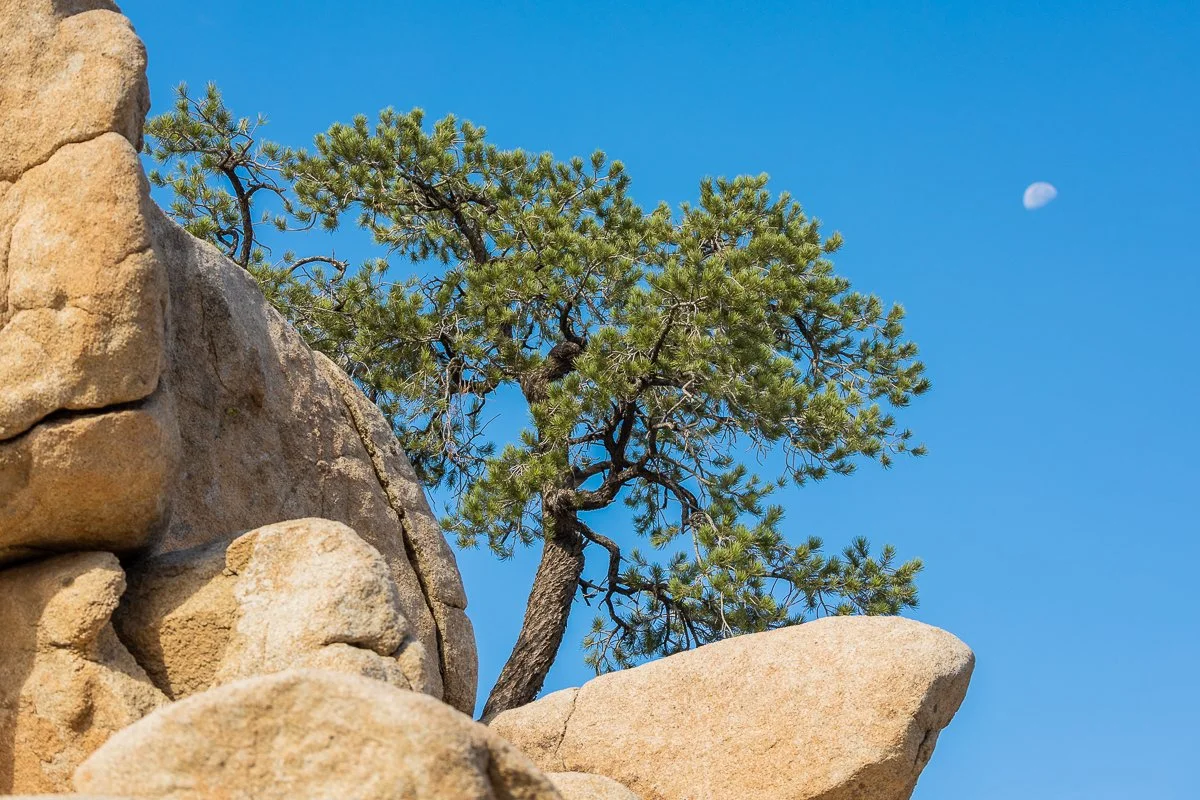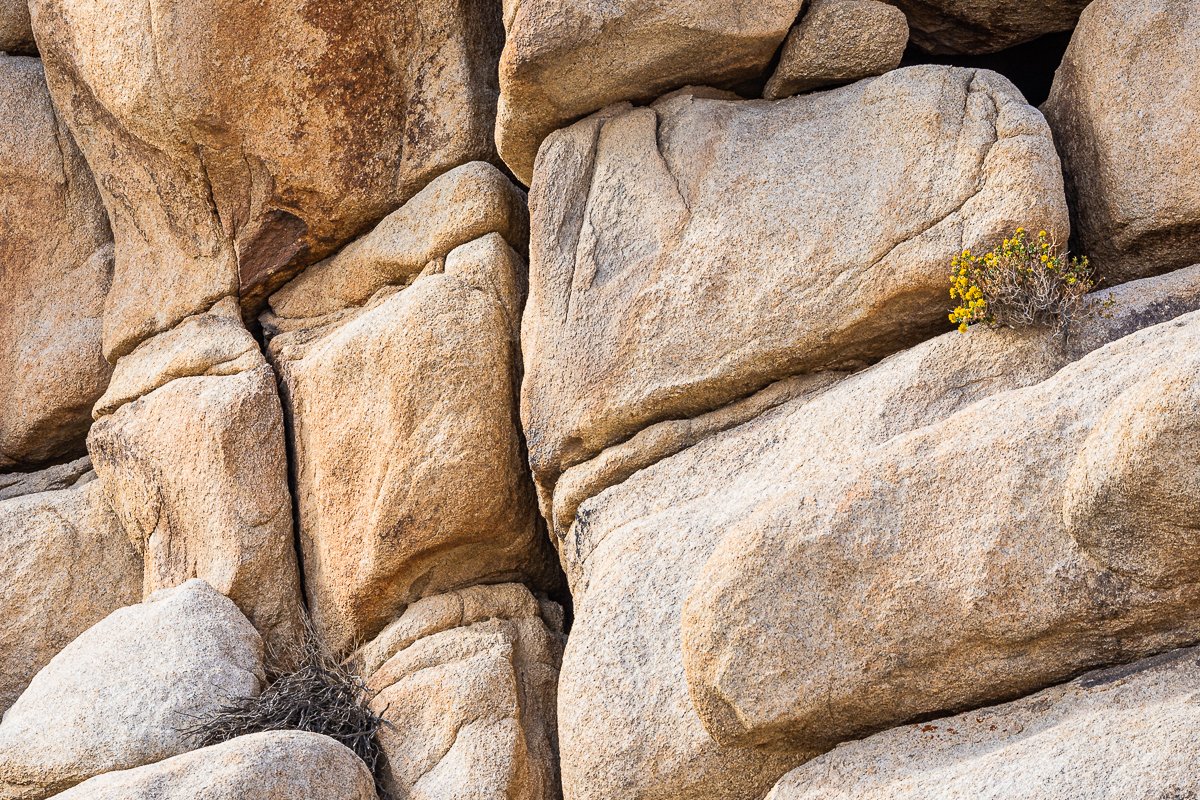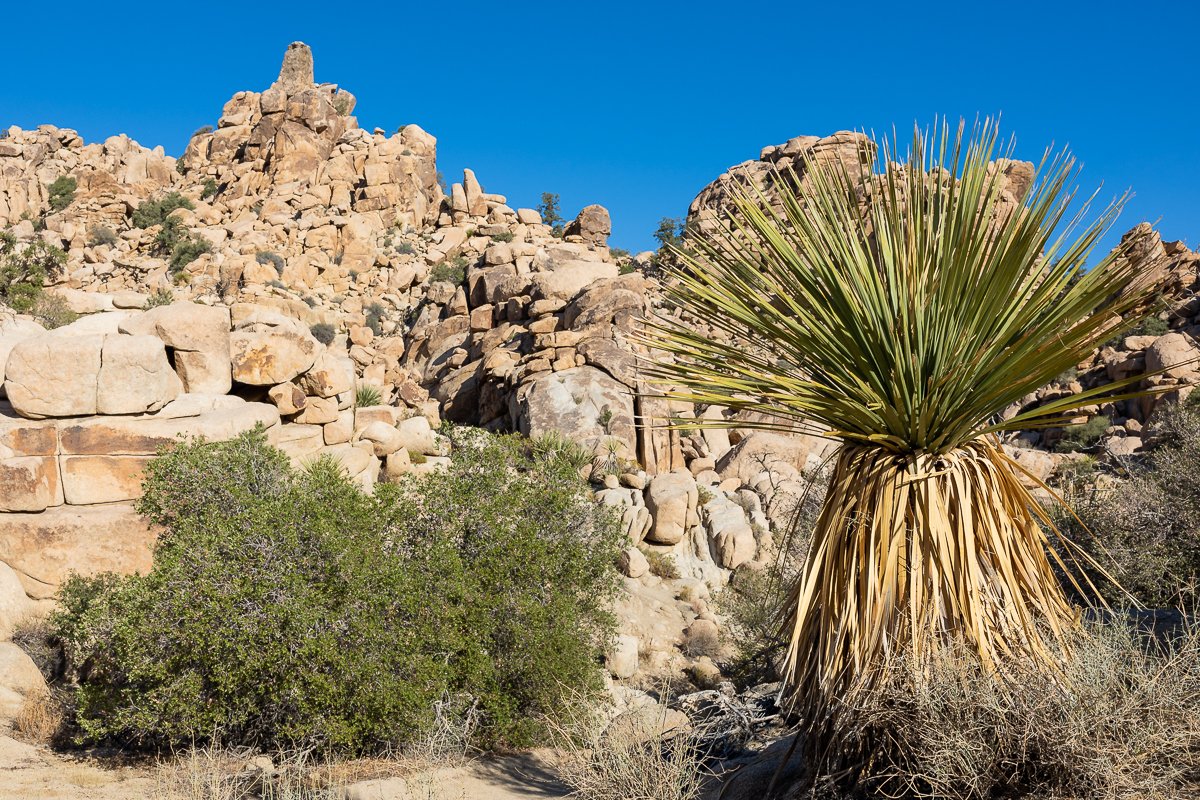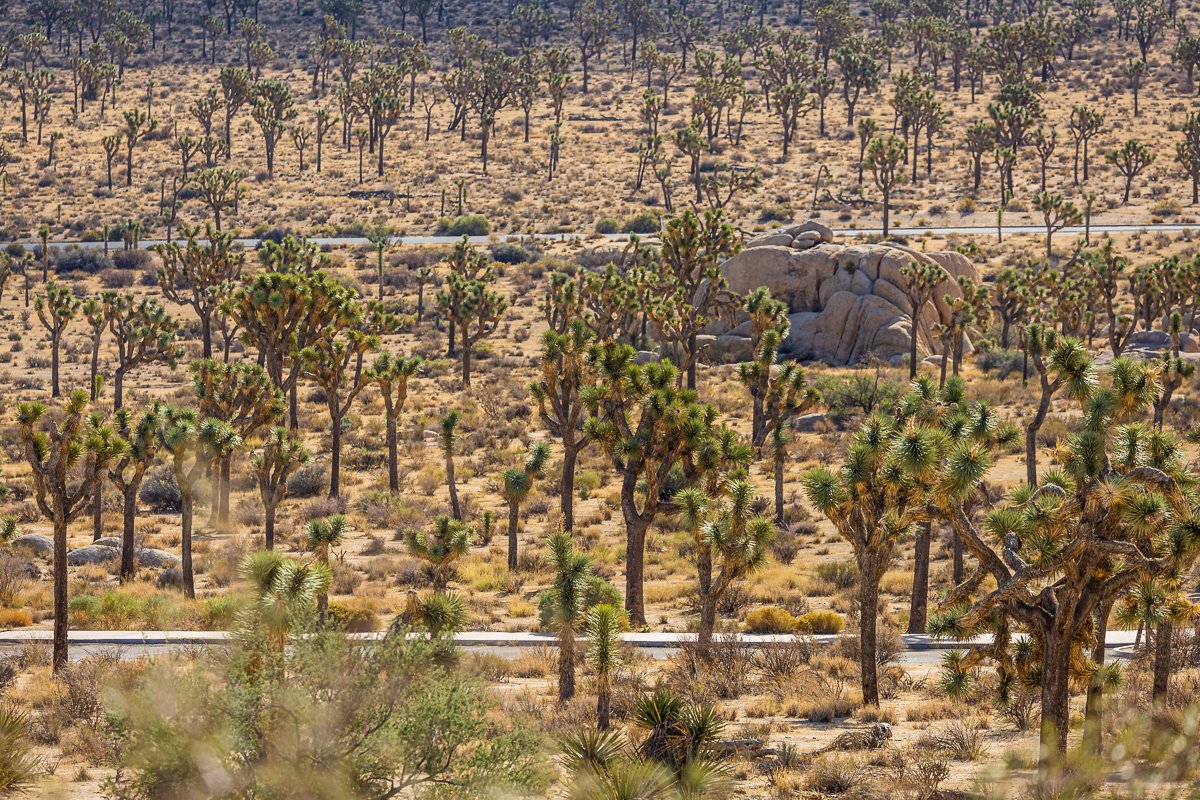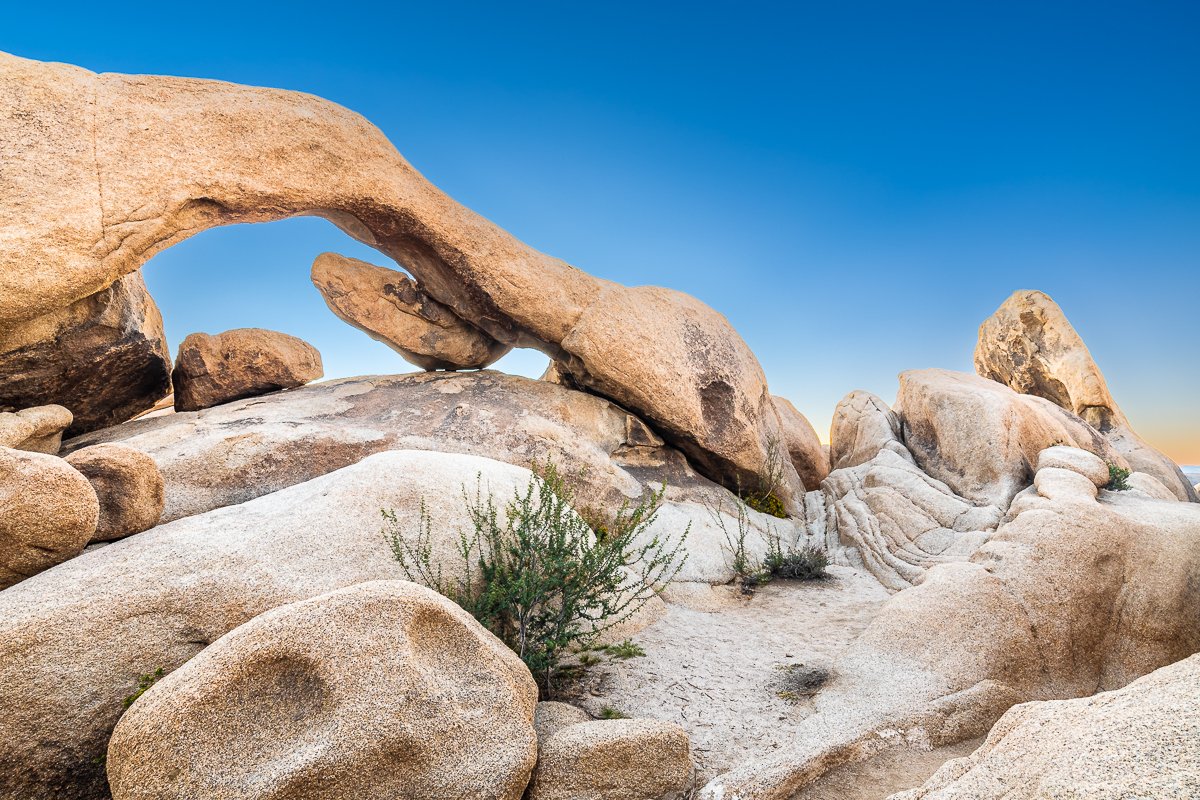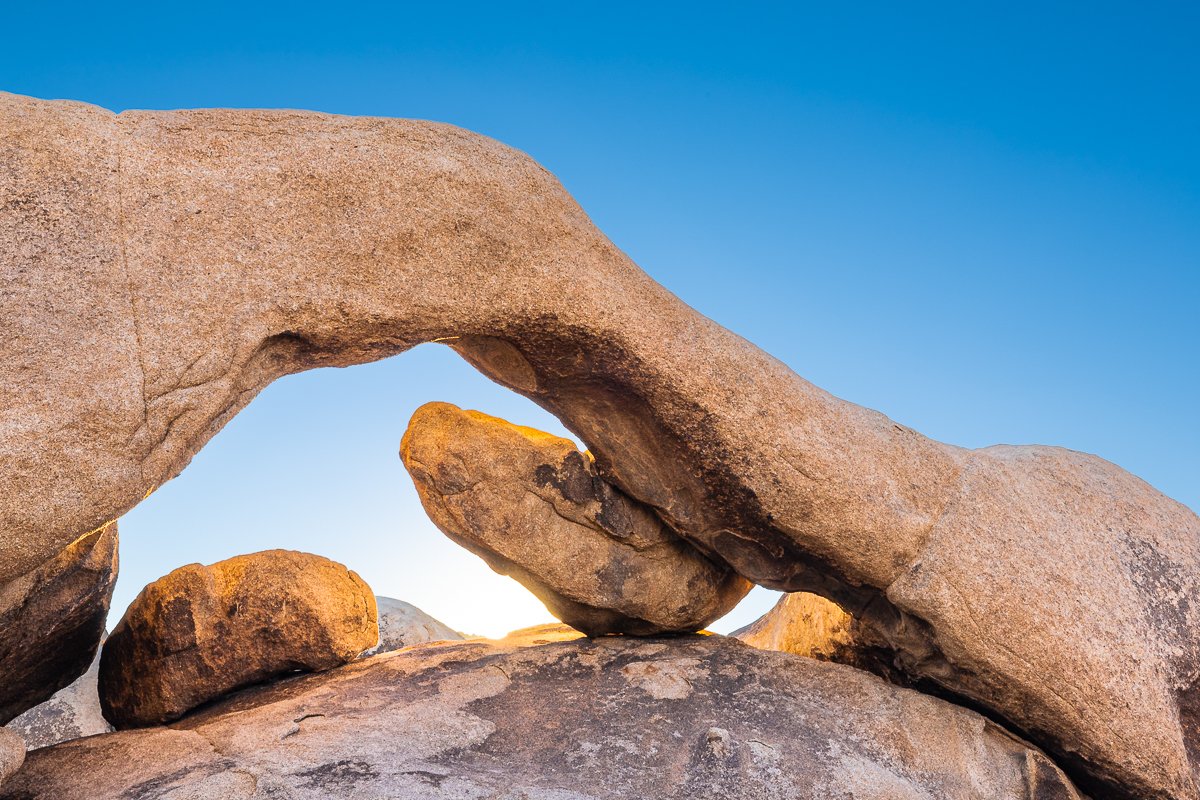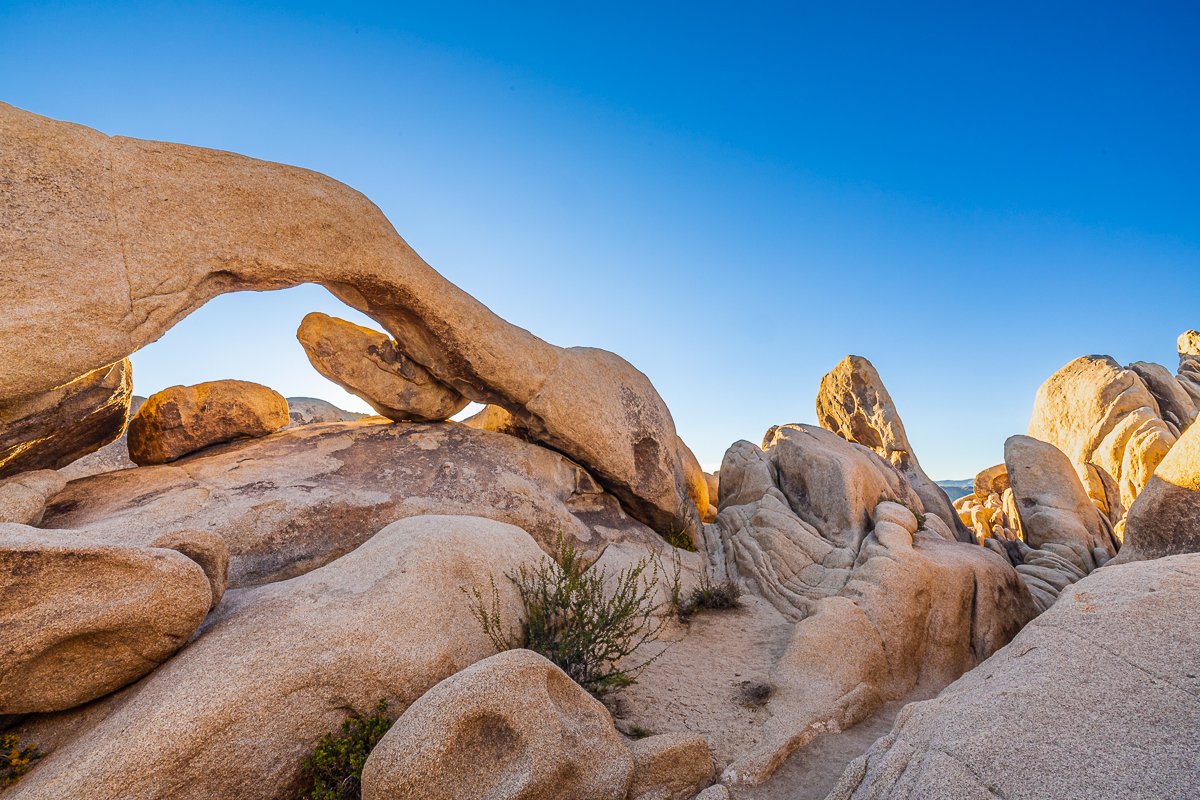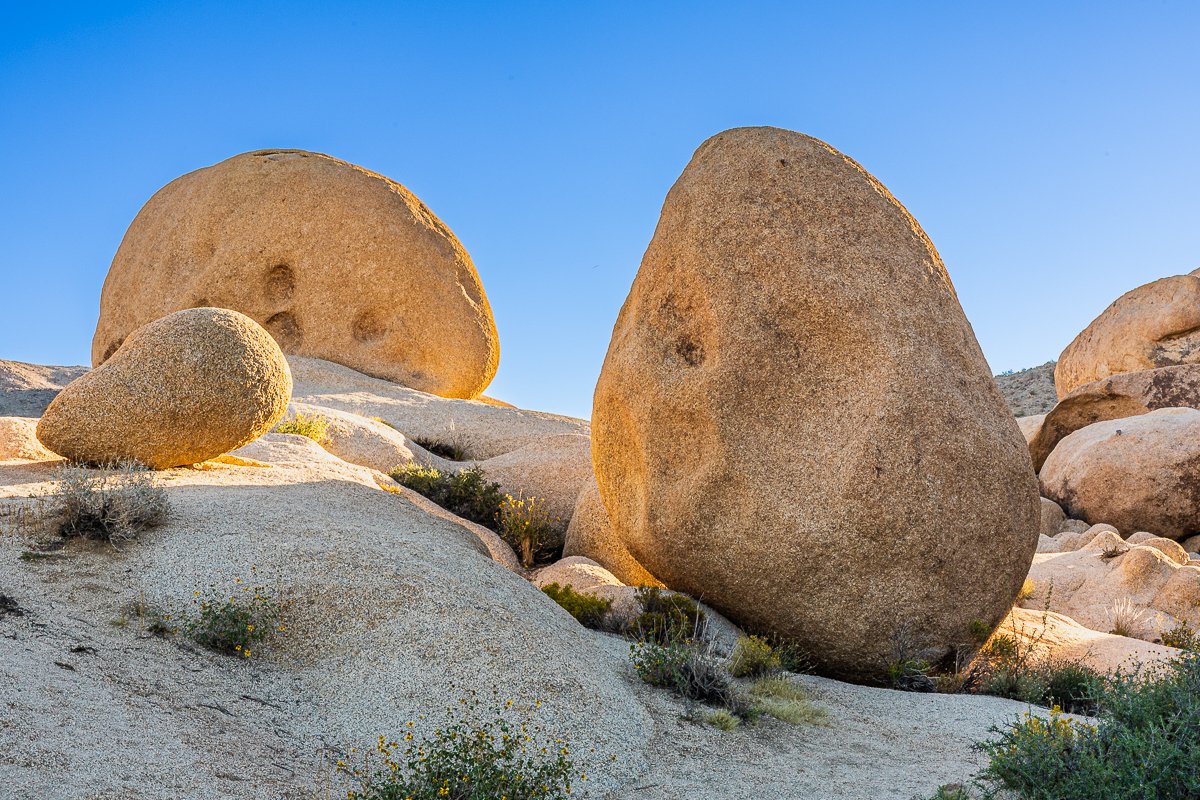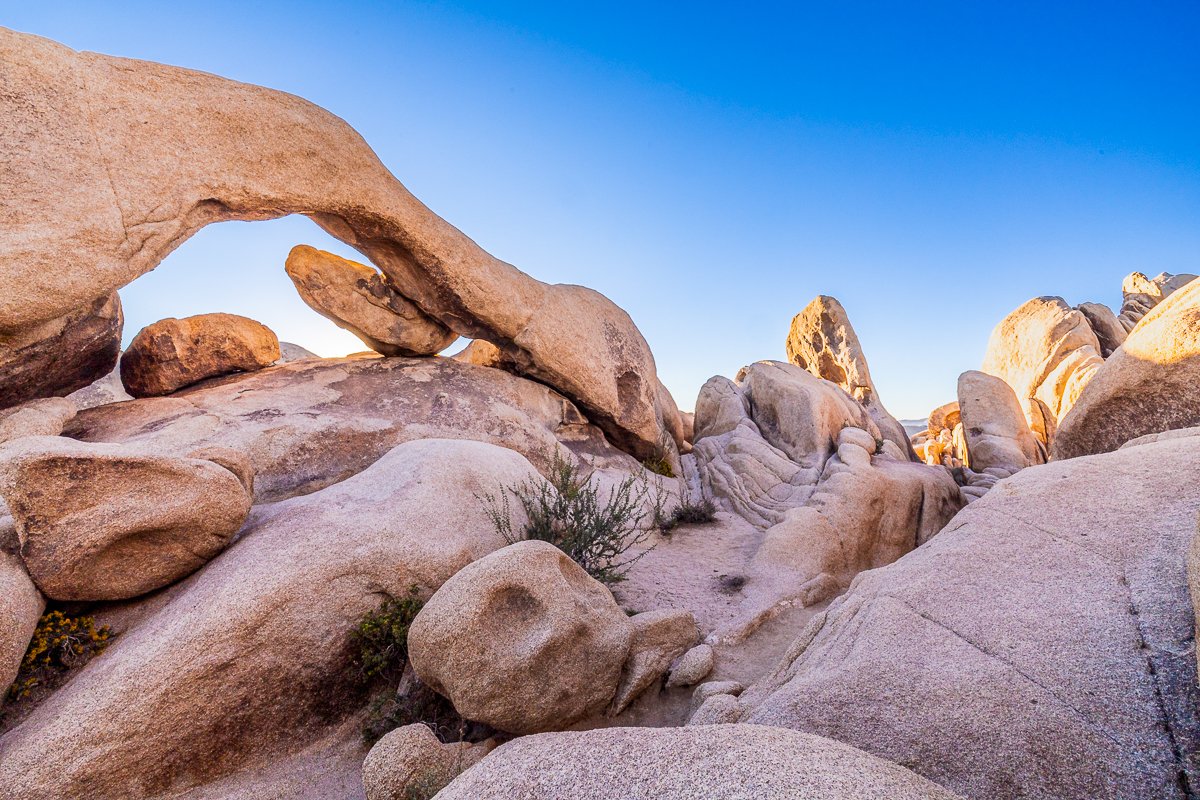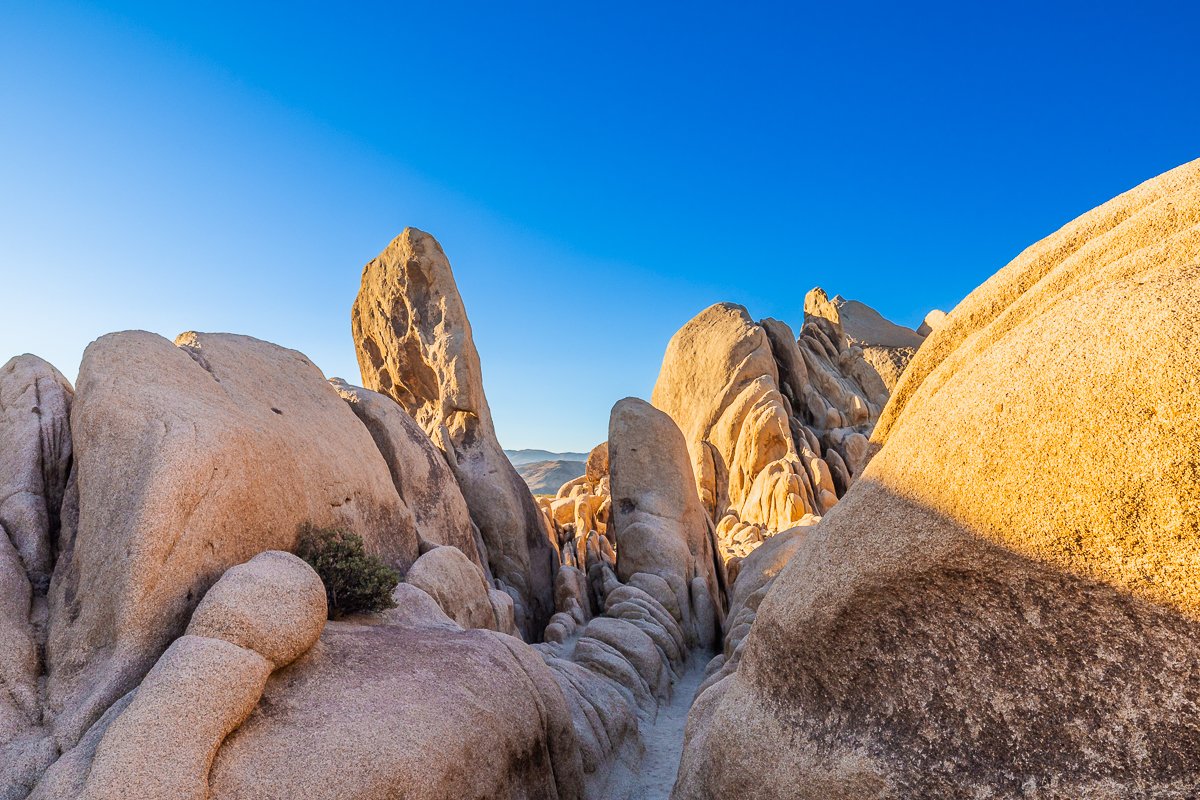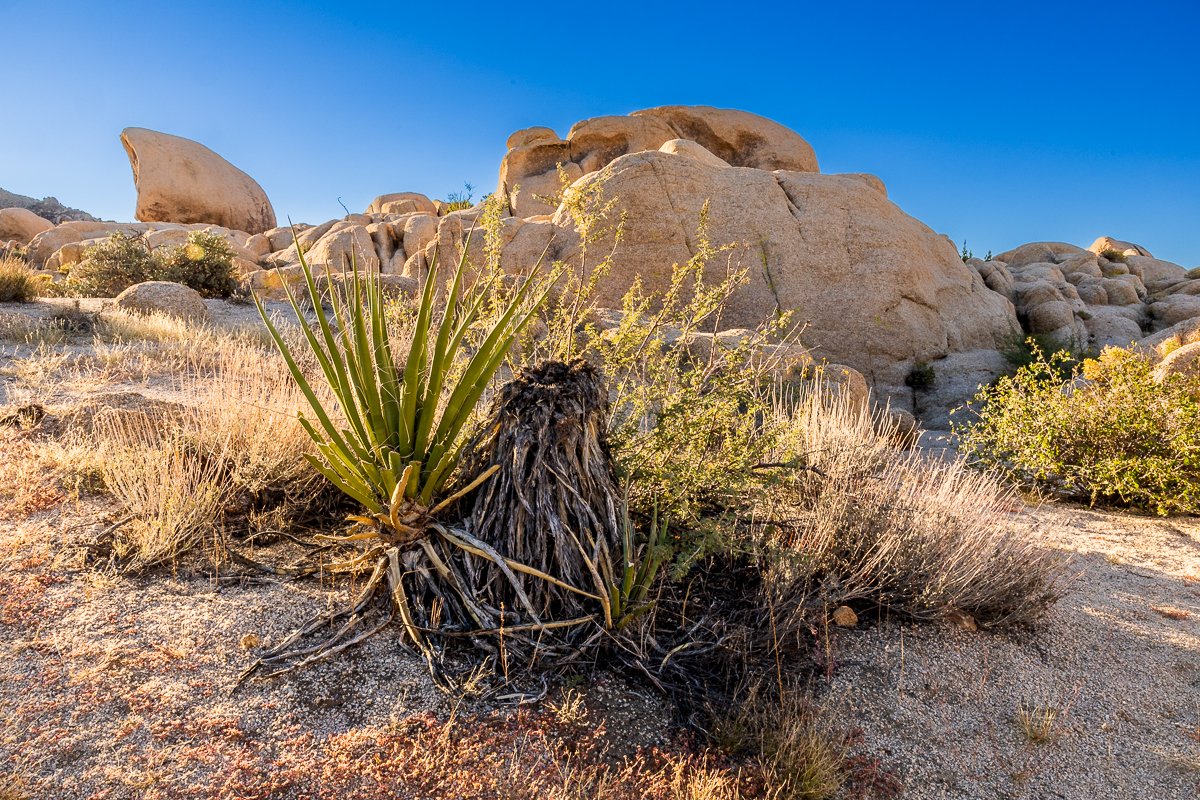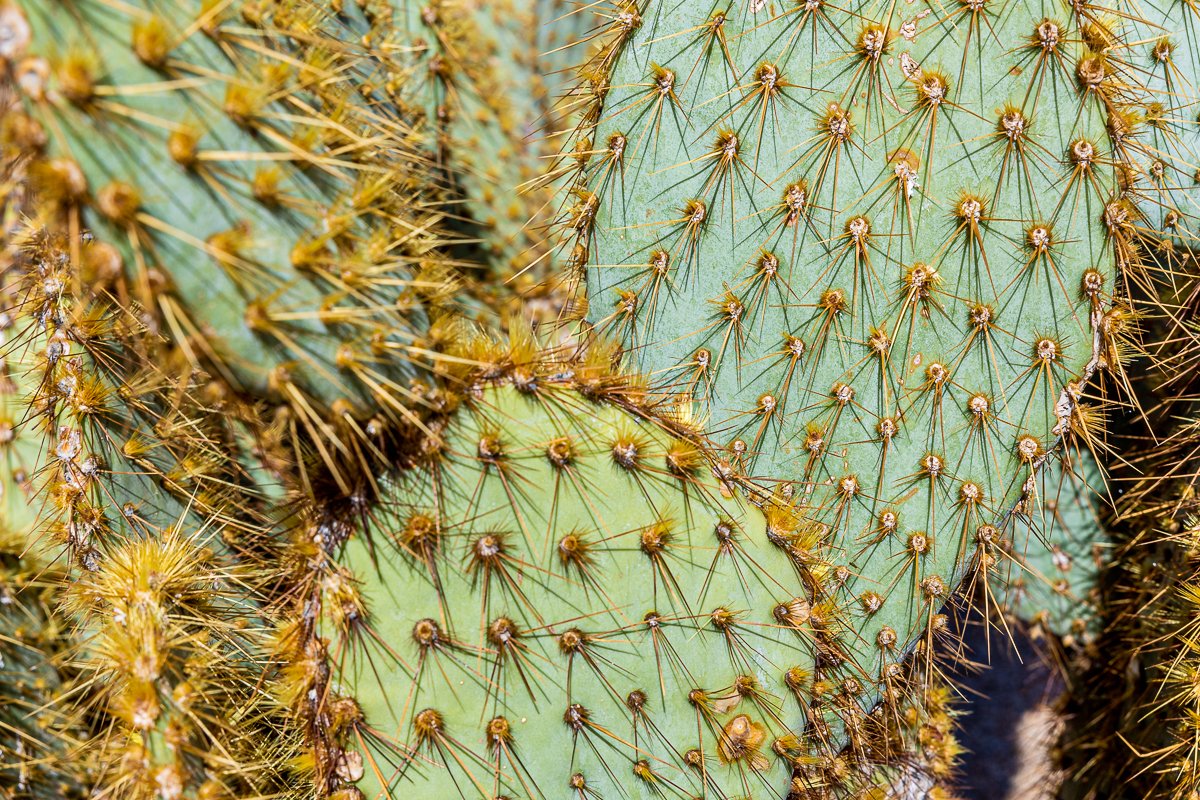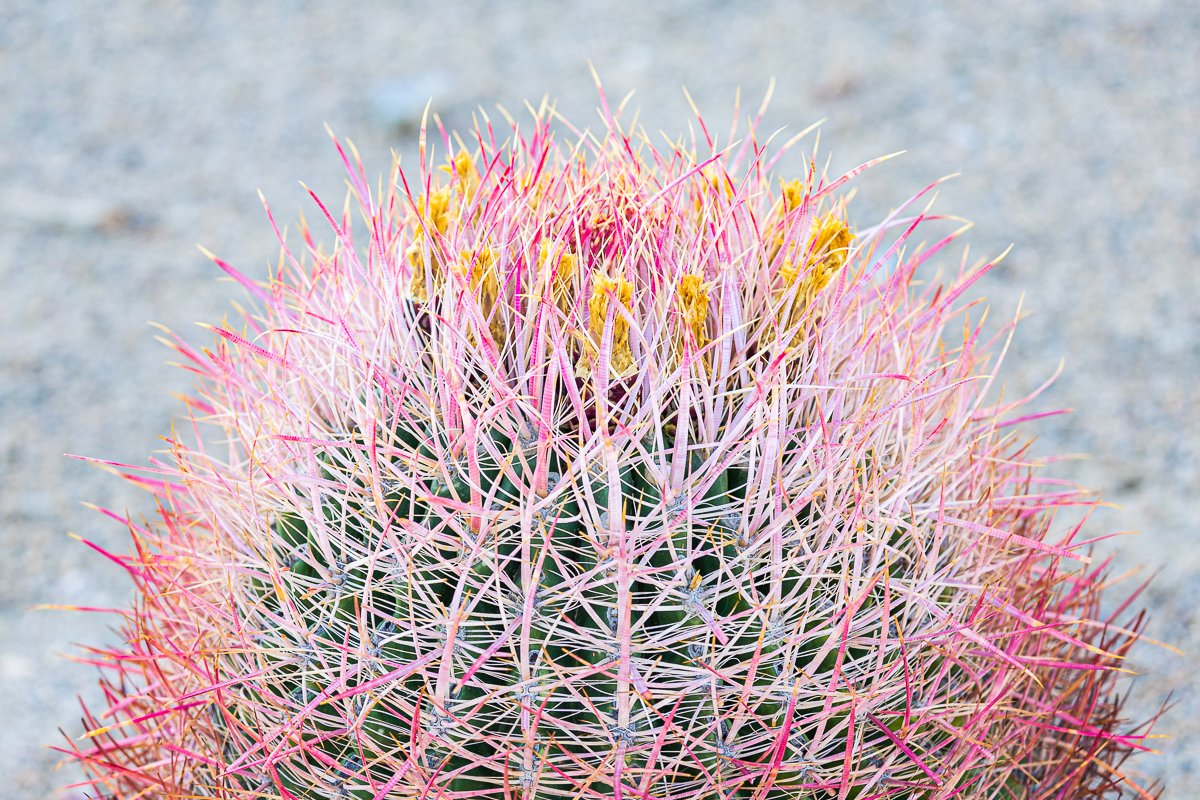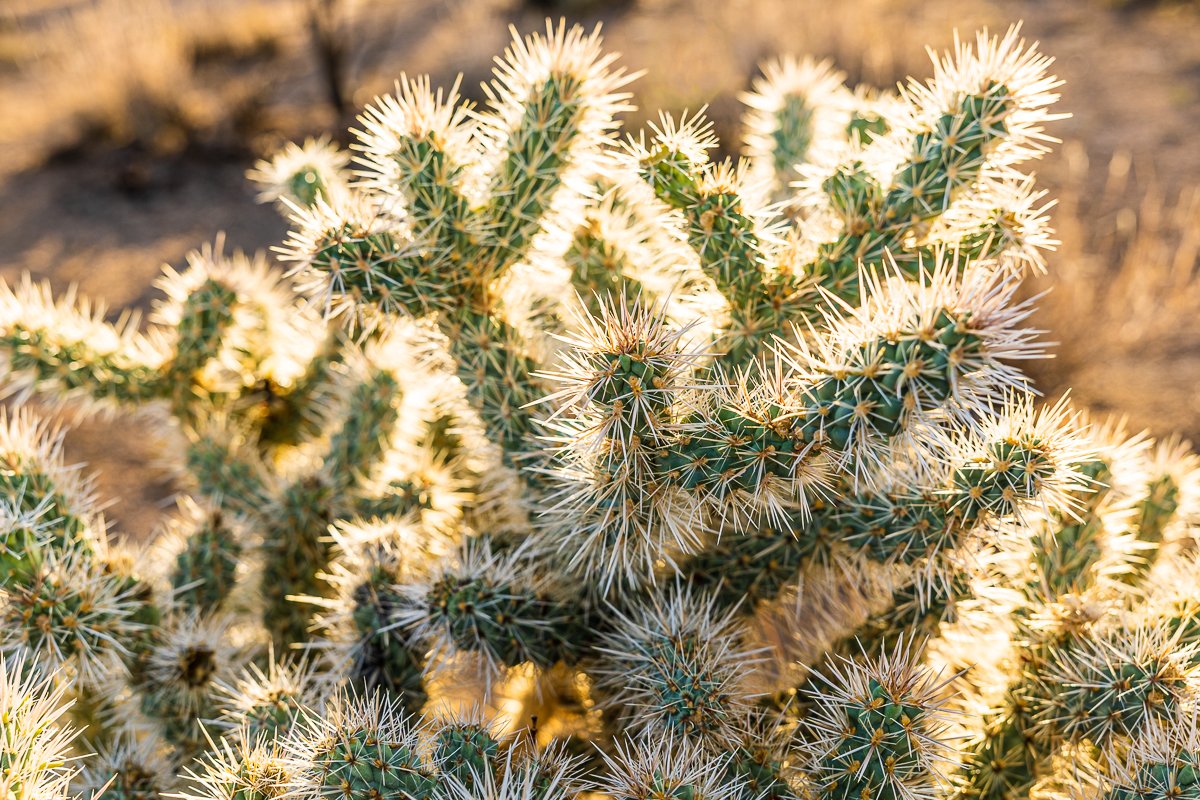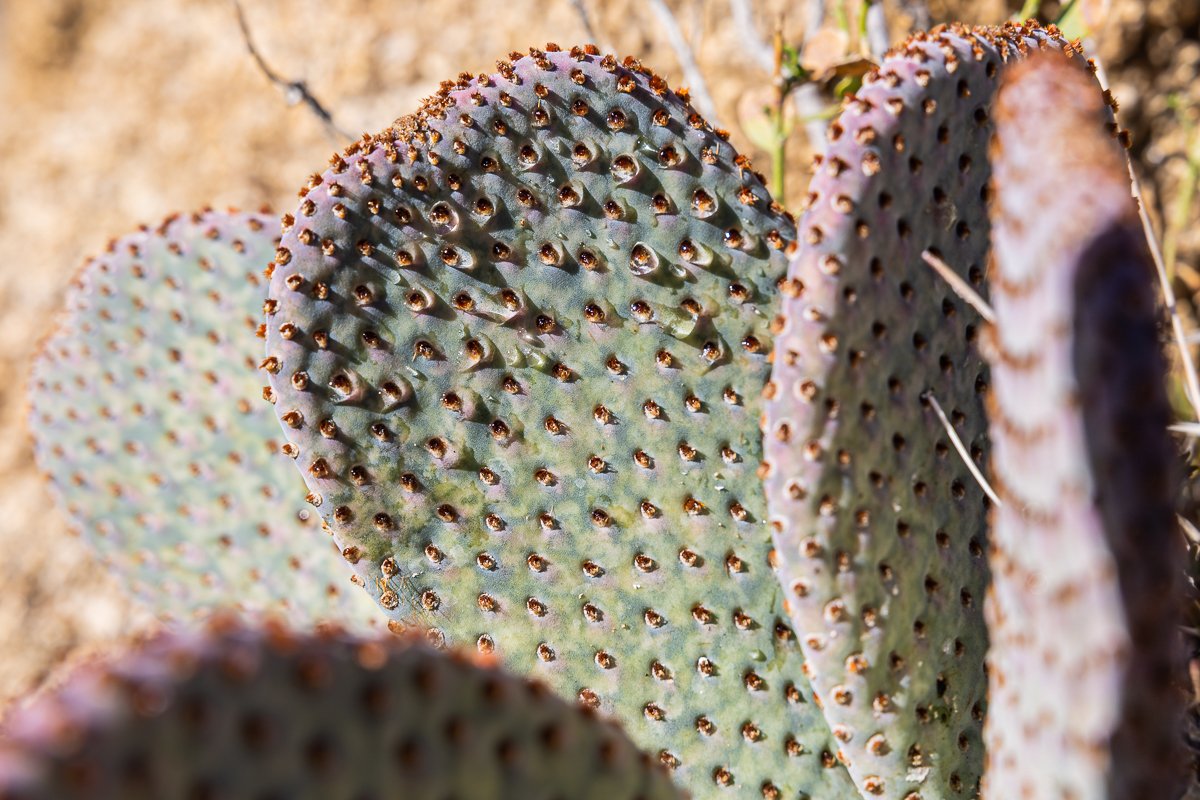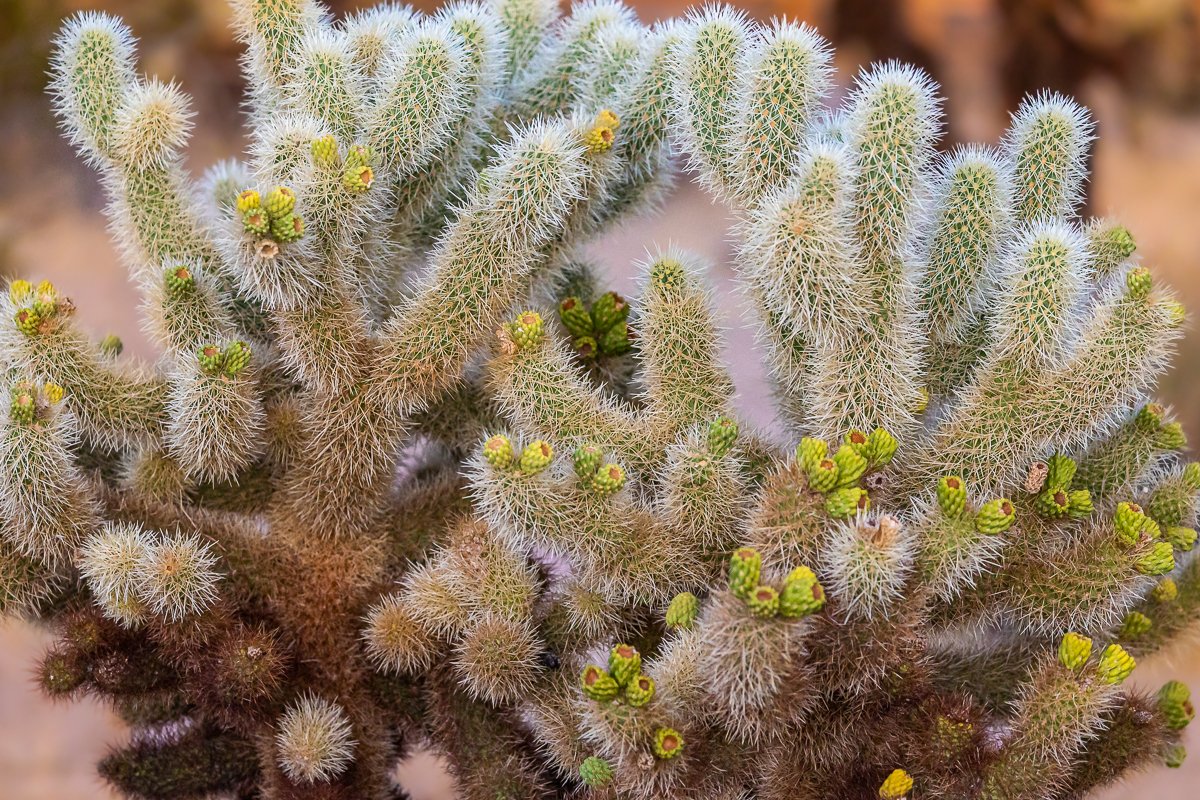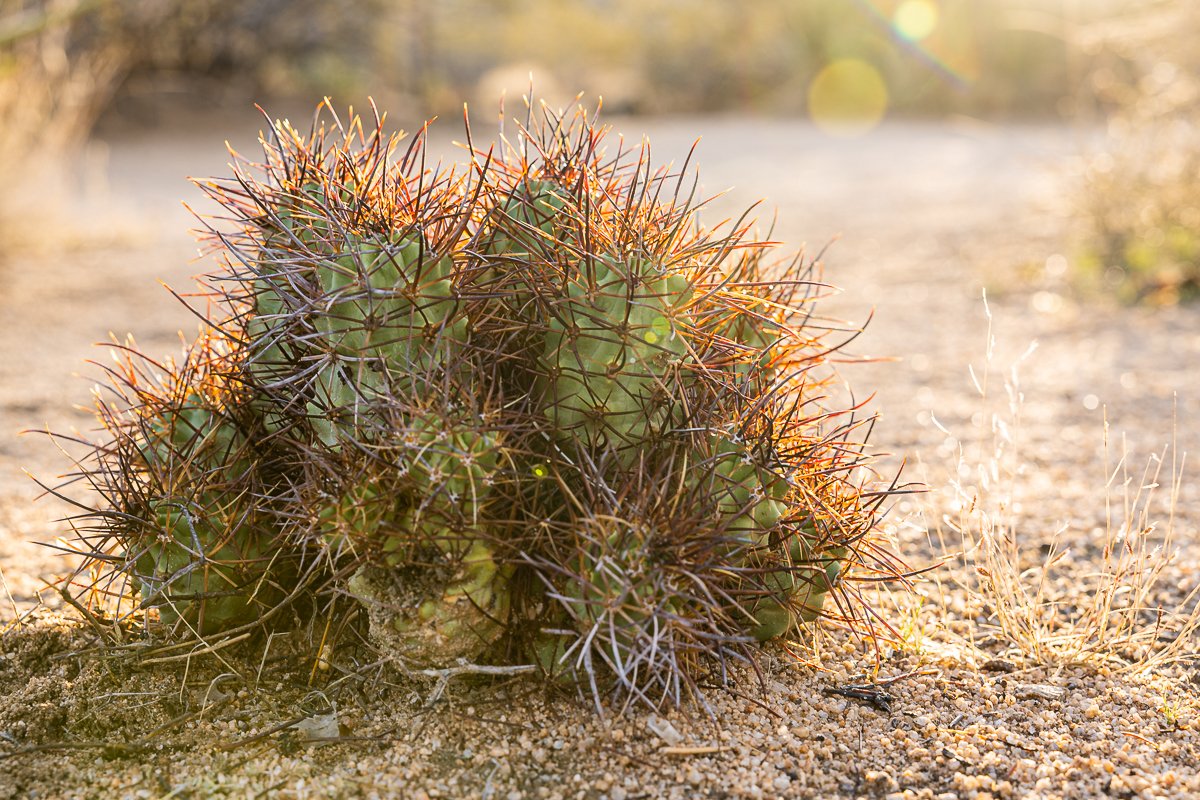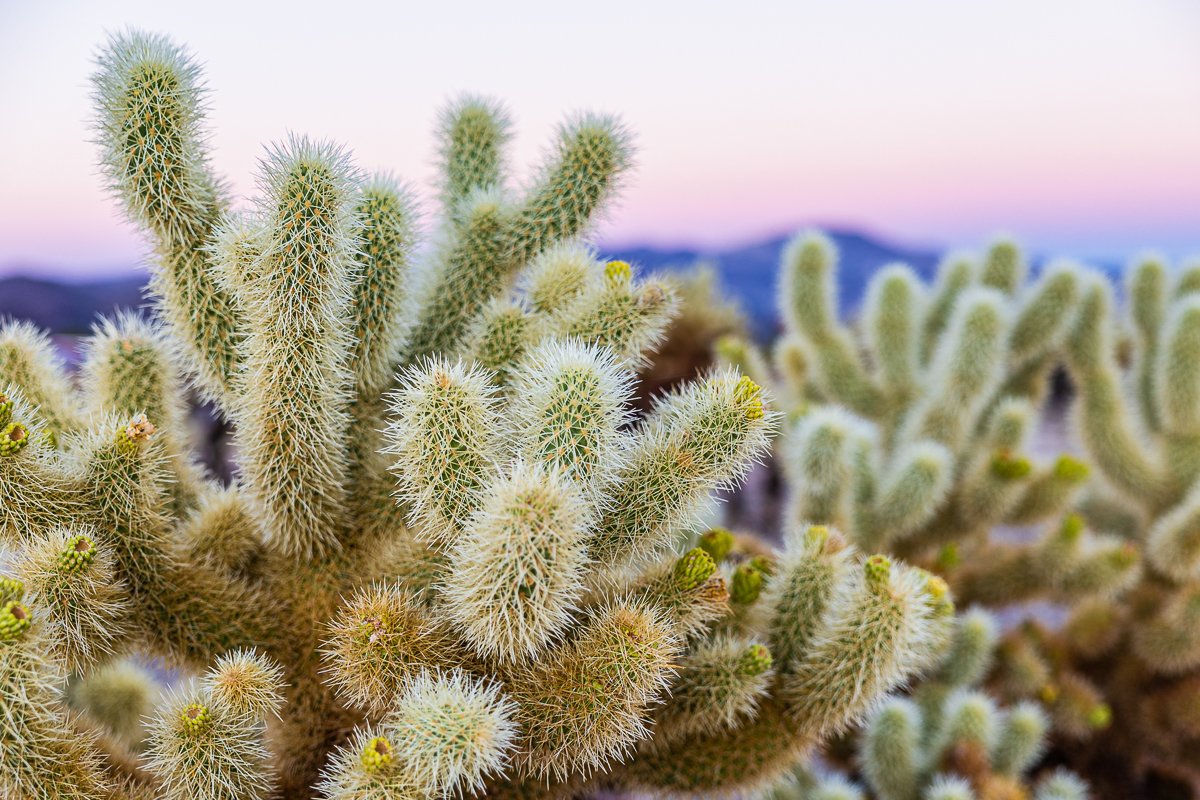Fortynine Palms Oasis in Joshua Tree National Park, which I featured in my last blog post, is a rare and special place where desert wildlife unexpectedly thrives. One of the highlights of the oasis is the diverse range of bird species that call it home. Some of the most common include the Cactus Wren, which is known for its distinctive cactus-like nest, and the Black-throated Sparrow, which is often heard before it is seen due to its melodious song. I was also incredibly lucky to spot a kestrel amongst the fronds of the Californian fan palms, but didn’t get a good enough shot!
Mojave Desert
Paradise in the Desert
The Fortynine Palms Oasis is a natural oasis in the Mojave Desert, located in the lesser-known northern part of Joshua Tree National Park in Southern California. The oasis is named after the forty-nine Washingtonia filifera palm trees that are found there. These palm trees thrive in the desert environment and can grow up to 75 feet tall. The oasis has been used by various Native American tribes, such as the Serrano and Chemehuevi, for thousands of years as a source of water, shelter, and food. In the early 1900s, gold miners established a camp at the oasis and built a few structures that can still be seen today. Today, it is a protected area of the park and its water levels are carefully managed in order to conserve this incredible habitat.
Cholla Cactus Golden Hour
As promised, this week I am featuring my second set of Cholla Cactus Garden images - and dare I say, these are even better! Every morning at Joshua Tree National Park, a warm golden light illuminates the spiny cacti, casting an incredible glow over the desert landscape. The scene is nothing short of mesmerizing, especially on a cold and perfectly clear day. I hope the images I have shared here succeed in capturing the magic of the desert in these early hours, and that you love them as much as I do!
Sunrise Over the Cholla Cacti
Nestled in the heart of Joshua Tree National Park lies the stunning Cholla Cactus Garden. This location is home to thousands of cholla cacti, which light up in brilliant shades of orange and gold during the sunrise hours. When I visited this desert oasis at dawn, and I was blown away by the natural beauty of this unique landscape.
As the sun began to peek over the horizon, the sky filled with vibrant hues of yellow, orange, and purple. The surrounding desert landscape was cast in an ethereal glow, and the cholla cacti seemed to come alive in the early morning light. The result was a series of stunning images that perfectly capture the otherworldly beauty of the desert at sunrise. In fact, I loved my images from this spot so much, I’ve split them into two posts - this is just the first half. Enjoy!
Hall of Golden Light
Few landscapes leave me completely speechless, but this stunning sunset at the Joshua Tree National Park’s Hall of Horrors did just that. This place is named after its eerie rock formations, which resemble dungeons and other creepy structures. (Can you spot a skull-shaped rock in the images below?) It is also a popular hiking and climbing spot, and boasts the best sunset views in the entire park - or at least, I think it does!
Enjoy these images of a stunning clear day over the Joshua trees and rocky scenery surrounding them, under the changing lights and tones of an autumn sunset.
Indian Cove Nature Trail
The Indian Cove area in Joshua Tree National Park was originally used by the Serrano and Chemehuevi Native American tribes for thousands of years and still contains many important cultural sites and artifacts. The area was also used by cowboys and homesteaders in the late 1800s and early 1900s, and there are still remnants of old cabins and corrals in the area. Today, Indian Cove is a popular camping and hiking destination. We made a quick stop during our visit to walk the 1.2-mile loop Indian Cove Nature Trail, which is known for its unusual rock formations. It did not disappoint!
Jumbo Rock Formations
Jumbo Rocks is one of the most popular spots in Joshua Tree National Park, and it's easy to see why. These formations are the result of a complex granite geological history that dates back millions of years and were eroded by the elements into incredible shapes.
Skull Rock (featured at the end of this post) is one of the most iconic and recognizable rock formations at Jumbo Rocks in Joshua Tree National Park. The formation gets its name from its striking resemblance to a human skull, with two large eye sockets and a nasal cavity. See if you can also spot the aptly-named Penguin Rock, which is hidden away in the Jumbo Rocks Campground by a beautifully twisted juniper tree.
Sunrise at Barker Dam
Barker Dam in Joshua Tree National Park is a historic site that was built in the early 1900s to provide water for cattle and mining operations in the area. The dam was constructed using local materials, including boulders and concrete, and was designed to capture and store rainwater. It is named after William Barker, one of the early ranchers in the area who was instrumental in its construction.
During my visit, I woke up early to catch the sunrise at Barker Dam, and boy, was it worth it! The sky turned into a beautiful canvas of vibrant purples, pinks, and oranges, and as the sun crept up the sky, the rest of the desert turned an intense shade of gold. Even though the dam was dry (and so we missed out on water reflections), the Joshua Trees and rock formations more than made up for it!
The Hidden Valley Nature Trail
The Hidden Valley Nature Trail is a short one-mile loop that takes you through the rocky landscapes of Joshua Tree National Park. The path is surrounded by towering rock formations all around it. During our visit to this spot, I was lucky enough to witness the beautiful morning light as it streamed through the valley, casting a golden glow on the rocks and highlighting the park's stunning colors. And of course, there were plenty of incredible Joshua Trees and rugged desert vegetation to photograph along the way too.
If you're planning a visit to Joshua Tree National Park, make sure to add the Hidden Valley Nature Trail to your itinerary. Trust me; you won't regret it!
A Morning at Arch Rock
One of our first stops on our visit to Joshua Tree National Park was Arch Rock. This natural arch is made of granite and stands tall among the Mojave Desert's boulder-strewn landscape. Its unique texture - which to me resembles a goose’s neck and head - make it a popular destination for visitors to the park. During my visit, I was lucky enough to witness the sunrise sunrise at Arch Rock, where the first rays of sunlight illuminated the rock's surface, casting a warm glow over the surrounding desert. I hope you enjoy the photos I am sharing today!
A Collection of Cacti
Joshua Tree National Park is home to a variety of cacti species, each with its distinct characteristics and beauty. The Mojave Desert, which covers much of the park, provides an ideal environment for these hardy plants to thrive.
Perhaps the best known amongst them are the various species of cholla. Cholla cacti, also known as the "jumping cacti”, have a unique method of reproduction, where they detach and roll around in the wind to spread their seeds. The cholla cactus may look harmless, but their spines can easily cling to clothing and skin, earning them their "jumping" nickname. Cholla are just one of several species featured here - which also includes prickypear and barrel cacti varieties.

